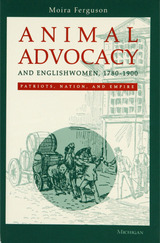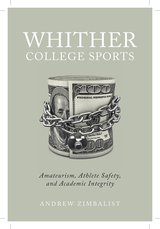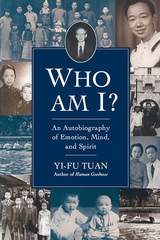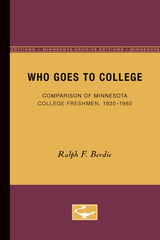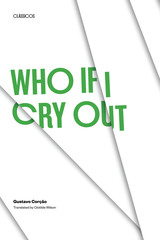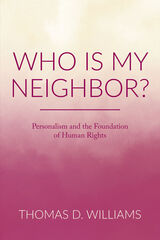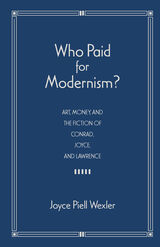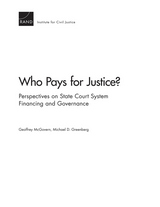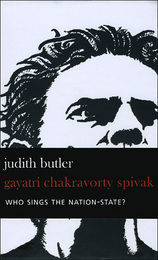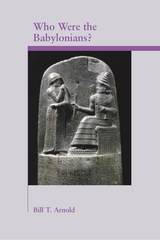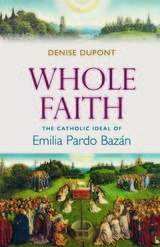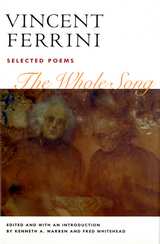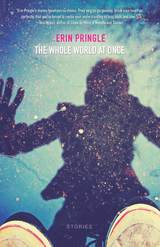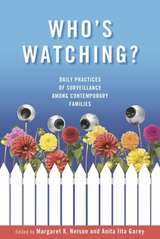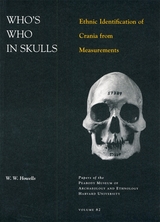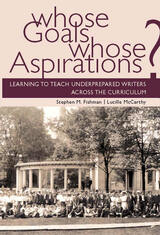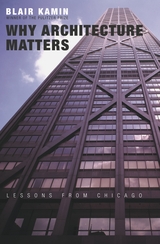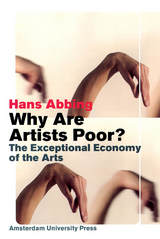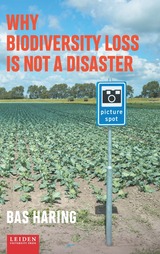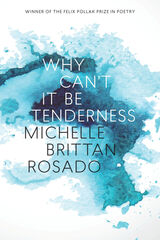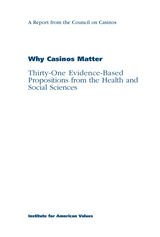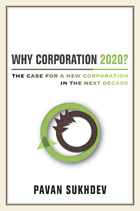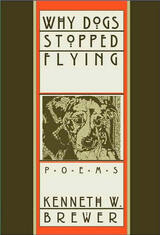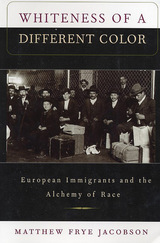 Whiteness of a Different Color: European Immigrants and the Alchemy of Race
Matthew Frye Jacobson
Harvard University Press, 1998 America’s racial odyssey is the subject of this remarkable work of historical imagination. Matthew Frye Jacobson argues that race resides not in nature but in the contingencies of politics and culture. In ever-changing racial categories we glimpse the competing theories of history and collective destiny by which power has been organized and contested in the United States. Capturing the excitement of the new field of “whiteness studies” and linking it to traditional historical inquiry, Jacobson shows that in this nation of immigrants “race” has been at the core of civic assimilation: ethnic minorities in becoming American were re-racialized to become Caucasian. He provides a counter-history of how nationality groups such as the Irish or Greeks became Americans as racial groups like Celts or Mediterraneans became Caucasian.Jacobson tracks race as a conception and perception, emphasizing the importance of knowing not only how we label one another but also how we see one another, and how that racialized vision has largely been transformed in this century. The stages of racial formation—race as formed in conquest, enslavement, imperialism, segregation, and labor migration—are all part of the complex, and now counterintuitive, history of race. Whiteness of a Different Color traces the fluidity of racial categories from an immense body of research in literature, popular culture, politics, society, ethnology, anthropology, cartoons, and legal history, including sensational trials like the Leo Frank case and the Draft Riots of 1863.
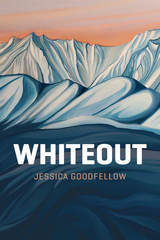 Whiteout
Jessica Goodfellow
University of Alaska Press, 2017 When she was a toddler, Jessica Goodfellow’s twenty-two-year-old uncle, along with six other climbers from the 1967 Wilcox Expedition to Denali, was lost in an unprecedented ten-day storm blasting winds of up to three-hundred miles per hour. Just as North America’s highest peak is so massive that it has its own distinct weather system—changeable and perilous, subject to sudden whiteout conditions—a family whose loved one is irretrievably lost has a grief so blinding and vast that it also creates its own capricious internal weather, one that lasts for generations. Whiteout is Goodfellow’s account of growing up in this unnavigable and often unspoken-of climate of bereavement.
Although her poems begin with a missing body, they are not an elegy. Instead, Goodfellow struggles with the absence of cultural ritual for the uncontainable loss of a beloved one whose body is never recovered and whose final story is unknowable. There is no solace here, no possible reconciliation. Instead, Whiteout is a defiant gaze into a storm that engulfs both the wildness of Alaska and of familial mourning.
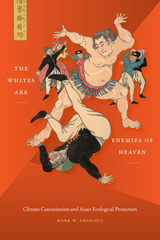 The Whites Are Enemies of Heaven: Climate Caucasianism and Asian Ecological Protection
Mark W. Driscoll
Duke University Press, 2020 In The Whites Are Enemies of Heaven Mark W. Driscoll examines nineteenth-century Western imperialism in Asia and the devastating effects of "climate caucasianism"—the white West's pursuit of rapacious extraction at the expense of natural environments and people of color conflated with them. Drawing on an array of primary sources in Chinese, Japanese, and French, Driscoll reframes the Opium Wars as "wars for drugs" and demonstrates that these wars to unleash narco- and human traffickers kickstarted the most important event of the Anthropocene: the military substitution of Qing China's world-leading carbon-neutral economy for an unsustainable Anglo-American capitalism powered by coal. Driscoll also reveals how subaltern actors, including outlaw societies and dispossessed samurai groups, became ecological protectors, defending their locales while driving decolonization in Japan and overthrowing a millennia of dynastic rule in China. Driscoll contends that the methods of these protectors resonate with contemporary Indigenous-led movements for environmental justice.
 whitewards
Katarína Kucbelová
Seagull Books, 2025 This poetry collection masterfully weaves themes of identity, resilience, and the search for meaning against the backdrop of an endless winter.
Katarína Kucbelová’s whitewards is a haunting and deeply moving sequence of poems that unfolds in a stark, snowbound landscape where winter seems endless. Three unnamed figures struggle to find their way through a snow-covered mountainside, grappling with uncertainty, unspoken fears, and the weight of questions they can barely put into words. Framed as a series of brief fragments and longer passages that use a range of narrative and cinematic techniques, the collection explores themes of identity, survival, and the search for meaning in a time of global crisis—whether political, environmental, or technological. Yet amid the darkness, Kucbelová finds light in storytelling itself, offering it as a form of solace, a way to break through loneliness, and a means to endure. The beauty of her images stimulates and inspires, acting as an antidote to the bleakness of the world. This stunning collection of poems explores identity, survival, and the power that storytelling possesses to bring light even to the bleakest landscapes.
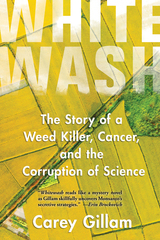 Whitewash: The Story of a Weed Killer, Cancer, and the Corruption of Science
Carey Gillam
Island Press, 2019 Rachel Carson Environment Book Award, First Place (2018)
IPPY Outstanding Book of the Year: Most Likely to Save the Planet (2018)
Thorpe Menn Literary Excellence Award (2018)
"Reads like a mystery novel as Gillam skillfully uncovers Monsanto's secretive strategies." —Erin Brockovich
"A damning picture...Gillam expertly covers a contentious front." —Publishers Weekly
"A must-read." —Booklist
"Hard-hitting, eye-opening narrative." —Kirkus
It's the pesticide on our dinner plates, a chemical so pervasive it’s in the air we breathe, our water, our soil, and even found increasingly in our own bodies. Known as Monsanto's Roundup by consumers, and as glyphosate by scientists, the world's most popular weed killer is used everywhere from backyard gardens to golf courses to millions of acres of farmland. For decades it's been touted as safe enough to drink, but a growing body of evidence indicates just the opposite, with research tying the chemical to cancers and a host of other health threats.
In Whitewash, veteran journalist Carey Gillam uncovers one of the most controversial stories in the history of food and agriculture, exposing new evidence of corporate influence. Gillam introduces readers to farm families devastated by cancers which they believe are caused by the chemical, and to scientists whose reputations have been smeared for publishing research that contradicted business interests. Readers learn about the arm twisting of regulators who signed off on the chemical, echoing company assurances of safety even as they permitted higher residues of the pesticide in food and skipped compliance tests. And, in startling detail, Gillam reveals secret industry communications that pull back the curtain on corporate efforts to manipulate public perception.
Whitewash is more than an exposé about the hazards of one chemical or even the influence of one company. It's a story of power, politics, and the deadly consequences of putting corporate interests ahead of public safety.
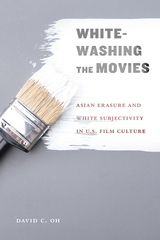 Whitewashing the Movies: Asian Erasure and White Subjectivity in U.S. Film Culture
David C Oh
Rutgers University Press, 2022 Whitewashing the Movies addresses the popular practice of excluding Asian actors from playing Asian characters in film. Media activists and critics have denounced contemporary decisions to cast White actors to play Asians and Asian Americans in movies such as Ghost in the Shell and Aloha. The purpose of this book is to apply the concept of “whitewashing” in stories that privilege White identities at the expense of Asian/American stories and characters. To understand whitewashing across various contexts, the book analyzes films produced in Hollywood, Asian American independent production, and US-China co-productions. Through the analysis, the book examines the ways in which whitewashing matters in the project of Whiteness and White racial hegemony. The book contributes to contemporary understanding of mediated representations of race by theorizing whitewashing, contributing to studies of Whiteness in media studies, and producing a counter-imagination of Asian/American representation in Asian-centered stories.
Whitewashing Uncle Tom's Cabin: Nineteenth-Century Women Novelists Respond to Stowe
Joy Jordan-Lake
Vanderbilt University Press, 2005 Joy Jordan-Lake examines the ways in which antebellum women novelists tried to counter Harriet Beecher Stoweís enormously popular Uncle Tom's Cabin by preaching a ìtheology of whitenessî from within the pages of the books - but were ultimately undermined by their own proslavery agendas. Including a discussion of twentieth- and twenty-first-century novels that revisit plantation mythology, Whitewashing Uncle Tom's Cabin casts new light on the ethical and moral disaster of securing one groupís economic strength at the expense of other groupsí access to dignity, compassion, and justice.
Whitfield's Electrical Craft Principles, Volume 1
Terry Grimwood
The Institution of Engineering and Technology, 2025 Whitfield's Electrical Craft Principles, 6th edition is the first of a two-volume work that covers the electrical principles syllabi for all major awarding bodies such as BTEC, and City and Guilds. The book is fully illustrated throughout with line diagrams, photographs and drawings. Worked examples are included to aid understanding of the theories and principles presented in its pages. Each chapter concludes with a summary of formulae, a set of written exercises and a multiple-choice test, which makes the book ideal for both classroom and private study.
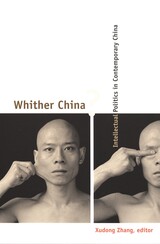 Whither China?: Intellectual Politics in Contemporary China
Xudong Zhang, ed.
Duke University Press, 2001 Whither China? presents an in-depth and wide-angled picture of Chinese intellectual life during the last decade of the millennium, as China struggled to move beyond the shadow of the Tiananmen tragedy. Because many cultural and intellectual paradigms of the previous decade were left in ruins by that event, Chinese intellectuals were forced in the early 1990s to search for new analytical and critical frameworks. Soon, however, they found themselves engulfed by tidal waves of globalization, surrounded by a new social landscape marked by unabashed commodification, and stunned by a drastically reconfigured socialist state infrastructure. The contributors to Whither China? describe how, instead of spearheading the popular-mandated and state-sanctioned project of modernization, intellectuals now find themselves caught amid rapidly changing structures of economic, social, political, and cultural relations that are both global in nature and local in an irreducibly political sense. Individual essays interrogate the space of Chinese intellectual production today, lay out the issues at stake, and cover major debates and discursive interventions from the 1990s. Those who write within the Chinese context are joined by Western observers of contemporary Chinese cultural and intellectual life. Together, these two groups undertake a truly international intellectual struggle not only to interpret but to change the world. Contributors. Rey Chow, Zhiyuan Cui, Michael Dutton, Gan Yang, Harry Harootunian, Peter Hitchcock, Rebecca Karl, Louisa Schein, Wang Hui, Wang Shaoguang, Xudong Zhang
Whither College Sports: Amateurism, Athlete Safety, and Academic Integrity
Andrew Zimbalist
Rutgers University Press, 2022 Intercollegiate athletics is under assault from all sides. Its economic model is yielding increasing and unsustainable deficits and widening inequality. Coaches and athletic directors are the highest paid employees at FBS universities (NCAA Division I Football Bowl Subdivision) by factors of five to ten, or more. Athletes are being cheated on their promised education, do not receive adequate medical care, and are not allowed to receive cash income. Substantial change, either toward reasserting the intended primacy of education for intercollegiate athletes or a further surrender to commercialism, is coming. This book lays out the starkly different paths that college sports reform can follow and what the ramifications will be on the athletes and on the institutions in which they are enrolled.
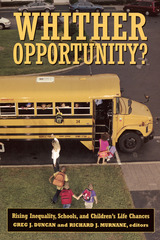 Whither Opportunity?: Rising Inequality, Schools, and Children's Life Chances
Greg J. Duncan
Russell Sage Foundation, 2012 As the incomes of affluent and poor families have diverged over the past three decades, so too has the educational performance of their children. But how exactly do the forces of rising inequality affect the educational attainment and life chances of low-income children? In Whither Opportunity? a distinguished team of economists, sociologists, and experts in social and education policy examines the corrosive effects of unequal family resources, disadvantaged neighborhoods, insecure labor markets, and worsening school conditions on K-12 education. This groundbreaking book illuminates the ways rising inequality is undermining one of the most important goals of public education—the ability of schools to provide children with an equal chance at academic and economic success. The most ambitious study of educational inequality to date, Whither Opportunity? analyzes how social and economic conditions surrounding schools affect school performance and children’s educational achievement. The book shows that from earliest childhood, parental investments in children’s learning affect reading, math, and other attainments later in life. Contributor Meredith Phillip finds that between birth and age six, wealthier children will have spent as many as 1,300 more hours than poor children on child enrichment activities such as music lessons, travel, and summer camp. Greg Duncan, George Farkas, and Katherine Magnuson demonstrate that a child from a poor family is two to four times as likely as a child from an affluent family to have classmates with low skills and behavior problems – attributes which have a negative effect on the learning of their fellow students. As a result of such disparities, contributor Sean Reardon finds that the gap between rich and poor children’s math and reading achievement scores is now much larger than it was fifty years ago. And such income-based gaps persist across the school years, as Martha Bailey and Sue Dynarski document in their chapter on the growing income-based gap in college completion. Whither Opportunity? also reveals the profound impact of environmental factors on children’s educational progress and schools’ functioning. Elizabeth Ananat, Anna Gassman-Pines, and Christina Gibson-Davis show that local job losses such as those caused by plant closings can lower the test scores of students with low socioeconomic status, even students whose parents have not lost their jobs. They find that community-wide stress is most likely the culprit. Analyzing the math achievement of elementary school children, Stephen Raudenbush, Marshall Jean, and Emily Art find that students learn less if they attend schools with high student turnover during the school year – a common occurrence in poor schools. And David Kirk and Robert Sampson show that teacher commitment, parental involvement, and student achievement in schools in high-crime neighborhoods all tend to be low. For generations of Americans, public education provided the springboard to upward mobility. This pioneering volume casts a stark light on the ways rising inequality may now be compromising schools’ functioning, and with it the promise of equal opportunity in America.
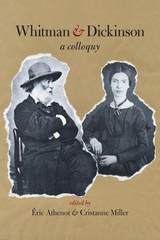 Whitman & Dickinson: A Colloquy
Eric Athenot and Cristanne Miller
University of Iowa Press, 2018 Whitman & Dickinson is the first collection to bring together original essays by European and North American scholars directly linking the poetry and ideas of Walt Whitman and Emily Dickinson. The essays present intersections between these great figures across several fields of study, rehearsing well-established topics from new perspectives, opening entirely new areas of investigation, and providing new information about Whitman’s and Dickinson’s lives, work, and reception.
Essays included in this book cover the topics of mentoring influence on each poet, religion, the Civil War, phenomenology, the environment, humor, poetic structures of language, and Whitman’s and Dickinson’s twentieth- and twenty-first–century reception—including prolonged engagement with Adrienne Rich’s response to this “strange uncoupled couple” of poets who stand at the beginning of an American national poetic.
Contributors Include:
Marina Camboni
Andrew Dorkin
Vincent Dussol
Betsy Erkkilä
Ed Folsom
Christine Gerhardt
Jay Grossman
Jennifer Leader
Marianne Noble
Cécile Roudeau
Shira Wolosky
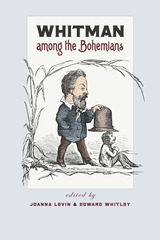 Whitman among the Bohemians
Joanna Levin and Edward Whitley
University of Iowa Press, 2014 For several years just before and just after his 1860 edition of Leaves of Grass appeared, Walt Whitman regularly frequented Pfaff’s beer cellar in downtown Manhattan. The basement bar was the very center of mid-nineteenth-century American bohemian activity and was heavily patronized by writers, artists, musicians, actors, intellectuals, and radicals such as free-love advocate Henry Clapp, Jr., and Broadway succès de scandale Adah Isaacs Menken. Numerous creative and political ventures emerged from this environment, and at least two bohemian literary weeklies, The New-York Saturday Press and Vanity Fair, shared origins around the tables at Pfaff’s.
In this milieu, Whitman found sympathetic supporters of his poetic vision, professional connections, rivals, romantic partners, and close friends, and left a lasting impression on poet and critic Edmund Clarence Stedman, an erstwhile bohemian who later in the century emerged as a tastemaker of American poetry. Yet for many years, the bohemians associated with Pfaff’s have served merely as minor background characters in Whitman scholarship. Whitman among the Bohemians corrects that by exploring in depth the connections Whitman made at Pfaff’s and the impact they had on him, his poetry, and his career. In telling the story of these intersecting social and professional links that converged at Pfaff’s in the late 1850s and early 1860s, the essays in this volume powerfully demonstrate just how much we can learn about Whitman and his work by viewing him within the context of American bohemia.
CONTRIBUTORS: Stephanie Blalock, Ruth Bohan, Leif Eckstrom, Logan Esdale, Amanda Gailey, Karen Karbiener, Joanna Levin, Mary Loeffelholz, Eliza Richards, Ingrid Satelmajer, Robert J. Scholnick, Edward Whitley
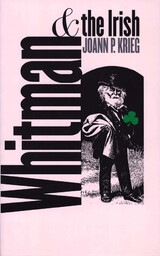 Whitman and the Irish
Joann P. Krieg
University of Iowa Press, 2000 Though Walt Whitman created no Irish characters in his early works of fiction, he did include the Irish as part of the democratic portrait of America that he drew in Leaves of Grass. He could hardly have done otherwise. In 1855, when the first edition of Leaves of Grass was published, the Irish made up one of the largest immigrant populations in New York City and, as such, maintained a cultural identity of their own. All of this “Irishness” swirled about Whitman as he trod the streets of his Mannahatta, ultimately becoming part of him and his poetry. As members of the working class, famous authors, or close friends, the Irish left their mark on Whitman the man and poet. In Whitman and the Irish, Joann Krieg convincingly establishes their importance within the larger framework of Whitman studies. Focusing on geography rather than biography, Krieg traces Whitman's encounters with cities where the Irish formed a large portion of the population—New York City, Boston, Camden, and Dublin—or where, as in the case of Washington, D.C., he had exceptionally close Irish friends. She also provides a brief yet important historical summary of Ireland and its relationship with America. Whitman and the Irish does more than examine Whitman's Irish friends and acquaintances: it adds a valuable dimension to our understanding of his personal world and explores a number of vital questions in social and cultural history. Krieg places Whitman in relation to the emerging labor culture of ante-bellum New York, reveals the relationship between Whitman's cultural nationalism and the Irish nationalism of the late nineteenth century, and reflects upon Whitman's involvement with the Union cause and that of Irish American soldiers.
 WHITMAN. CANNONBALL. PUEBLA.
Rodrigo Toscano
Omnidawn, 2025 Poetic fables that consider a future Greater Americas that blends the cultures of peoples across the hemisphere.
This four-part collection of poetic fables engages the emerging field of global-poetics through Hispano-Americano lenses. Amid global crises between states, and cultural destabilization manifesting across mass popular culture and literature, WHITMAN. CANNONBALL. PUEBLA. sets out to invigorate conversation about how the United States might adapt to a wider hemispheric consciousness. Toscano’s poems present a cultural landscape where the Anglo-capitalist outlook is tempered—if not subsumed—by a Greater Americas “Salamanca Humanism,” which was the basis for the 1948 United Nations Universal Declaration of Human Rights.
The book is divided into four sections that develop the idea of a Greater Americas as hinging on negotiation between Anglo and Hispano values, consider a potential catastrophic Anglo-American imperialism, imagine life in a Post-Empire crisis, and compose allegories about the historical consciousness of a people oversaturated with media.
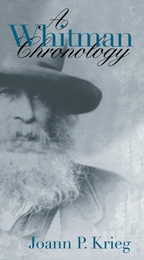 A Whitman Chronology
Joann P. Krieg
University of Iowa Press, 1998 All Whitman scholars have encountered the frustration of trying to track down an event in Whitman's life—the last time he saw Peter Doyle, when he moved to his own home on Mickle Street in Camden, when he met Oscar Wilde. The records of these events in Whitman's long life are buried in seven volumes of his abundant correspondence, in nine volumes of his conversations with Horace Traubel, in nine volumes of his notebooks and manuscripts, and in countless writings produced by his friends and admirers. To fulfill a long-felt need for order among this embarrassment of riches, Joann Krieg has crafted this detailed chronology of Whitman's life. A Whitman Chronology clarifies the facts of Whitman's life by offering a year-by-year and, where possible, day-by-day account of his private and public life. Where conflicting interpretations exist, Krieg recognizes them and cites the differences; she also directs readers to fuller descriptions of noteworthy events. She offers brief synopses of Whitman's fiction and of his major prose works, giving distinguishing information about each of the six editions of Leaves of Grass. By intertwining the events of his life and work—but without cumbersome layers of speculation—she reveals the close alliance between Whitman's personal involvements and his literary achievements.
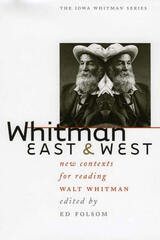 Whitman East and West: New Contexts for Reading Walt Whitman
Ed Folsom
University of Iowa Press, 2002 In Whitman East and West, fifteen prominent scholars track the surprising ways in which Whitman's poetry and prose continue to be meaningful at the beginning of the twenty-first century. Covering a broad range of issues—from ecology to children's literature, gay identity to China's May 4th Movement, nineteenth-century New York politics to the emerging field of normality studies, Mao Zedong to American film—each original essay opens a previously unexplored field of study, and each yields new insights by demonstrating how emerging methodologies and approaches intersect with and illuminate Whitman's ideas about democracy, sexuality, America, and the importance of literature.
Confirming the growing international spirit of American studies, the essays in Whitman East and West developed out of a landmark conference in Beijing, the first major conference in China to focus on an American poet. Scholars from Asia, Europe, and North America set out to track the ways in which Whitman's poetry has become part of China's cultural landscape as well as the literary landscapes of other countries. By describing his assimilation into other cultures and his resulting transformation into a hybrid poet, these essayists celebrate Whitman's multiple manifestations in other languages and contexts.
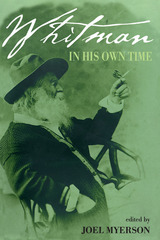 Whitman in His Own Time: A Biographical Chronicle of His Own Life, Drawn from Recollections, Memoirs, and Interviews by Friends and Associates
Joel Myerson
University of Iowa Press, 2000 Few American writers were as concerned with their public image as was Walt Whitman. He praised his own work in unsigned reviews; he included engravings or photographs of himself in numerous editions of his work; and he assisted in the writing of two biographies of himself. Whitman was also written about extensively by others throughout his lifetime. Whitman in His Own Time is a collection of these contemporary accounts of the "good gray poet." The interviews with and recollections of Whitman collected by Joel Myerson represent a wide spectrum of accounts—visitors from America and abroad; newspaper interviewers; Whitman's doctor and nurse during his final illness; his literary executors; a student from his early schoolteaching days; and such well-known authors as Bronson Alcott, John Burroughs, and Henry David Thoreau. The selections also paint a well-rounded picture of Whitman, from his early days as a schoolteacher to the moment of his death, and demonstrate a varying range of attitudes toward the poet. Yet throughout the entire collection, Whitman himself holds center stage, and he is seen as vividly today as he was over one hundred years ago. Myerson's introduction to this expanded edition places these accounts of Whitman within the context of the time and discusses new scholarship on Whitman's life.
 Whitman in Poland: The Reception and Role of the American Poet in Polish National Culture
Marta A. Skwara
University of Iowa Press, 2020 Whitman in Poland examines the reception of Walt Whitman in Poland from 1872 to the present day. The many ways in which Whitman was read, translated, and constructed in Polish culture are analyzed using a unique interdisciplinary approach that melds reception, communication, translation, and comparative studies. Marta Skwara shows how Whitman’s biography was portrayed in
Poland; how and why the mid-1950s saw the greatest flourish of interest in Whitman as he was read in terms of “socialist realism” in accordance with the political indoctrination of the era; how Whitman’s image in Poland evolved from his first Polish translators and enthusiasts on through modernist poets’ responses; and how reading multiple Polish translations of the same Whitman poem by different translators allows us to see changing cultural and comparative contexts. Readers will get a full picture of how Whitman has functioned as a presence in Polish prose and poetry, and even in cinema and television.
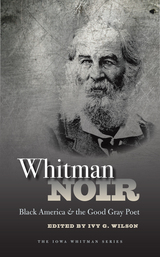 Whitman Noir: Black America and the Good Gray Poet
Ivy Wilson
University of Iowa Press, 2014 Walt Whitman’s now-famous maxim about “containing the multitudes” has often been understood as a metaphor for the democratizing impulses of the young American nation. But did these impulses extend across the color line? Early in his career, especially in the manuscripts leading up to the first edition of Leaves of Grass, the poet espoused a rather progressive outlook on race relations within the United States. However, as time passed, he steered away from issues of race and blackness altogether. These changing depictions and representations of African Americans in the poetic space of Leaves of Grass and Whitman’s other writings complicate his attempts to fully contain all of America’s subject-citizens within the national imaginary. As alluring as “containing the multitudes” might prove to be, African American poets and writers have been equally vexed by and attracted to Whitman’s acknowledgment of the promise and contradictions of the United States and their place within it.
Whitman Noir: Black America and the Good Gray Poet explores the meaning of blacks and blackness in Whitman’s imagination and, equally significant, also illuminates the aura of Whitman in African American letters from Langston Hughes to June Jordan, Margaret Walker to Yusef Komunyakaa. The essays, which feature academic scholars and poets alike, address questions of literary history, the textual interplay between author and narrator, and race and poetic influence. The volume as a whole reveals the mutual engagement with a matrix of shared ideas, contradictions, and languages to expose how Whitman influenced African American literary production as well as how African American Studies brings to bear new questions and concerns for evaluating Whitman.
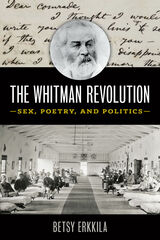 The Whitman Revolution: Sex, Poetry, and Politics
Betsy Erkkila
University of Iowa Press, 2020 The Whitman Revolution brings together a rich collection of Betsy Erkkila’s phenomenally influential essays that have been published over the years, along with two powerful new essays. Erkkila offers a moving account of the inseparable mix of the spiritual-sexual-political in Whitman and the absolute centrality of male-male connection to his work and thinking. Her work has been at the forefront of scholarship positing that Whitman’s songs are songs not only of workers and occupations but of sex and the body, homoeroticism, and liberation. What is more, Erkkila’s writing demonstrates that this sexuality and communal impulse is central to Whitman’s revolutionary poetry and his conception of democracy itself—an insight that was all but suppressed during the mid-twentieth century emergence of American literature as a field of study. Highlights of this collection include Erkkila’s essays on pairings such as Marx and Whitman, Dickinson and Whitman, and Melville and Whitman. Across the volume, she demonstrates an international vision that highlights the place of Leaves of Grass within a global struggle for democracy. The Whitman Revolution is evidence of Erkkila’s remarkable ability to lead critical discussions, and marks an exciting event in Whitman studies.
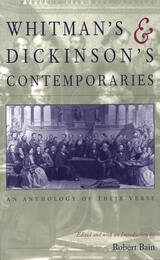 Whitman's & Dickinson's Contemporaries: An Anthology of their Verse
Edited and with an Introduction by Robert Bain
Southern Illinois University Press, 1996 Emily Dickinson and Walt Whitman were not the poetic stars of their day; only a few friends knew that Dickinson wrote, and Whitman’s following was minuscule, if influential. But the contemporaries who eclipsed these major poets now have largely disappeared from our literary landscape. In this distinctive anthology, Robert Bain gathers together thirteen other scholars to re-present the poetry of these former luminaries, allowing readers to rediscover them, reconstruct the poetic contexts of their age, and better understand why Whitman and Dickinson now overshadow other poets of their time. Arranged chronologically according to the birth dates of the poets, this anthology introduces each poet’s work, providing biographical information and discussing the major forms and themes of the work. Each introduction places the poet in a literary and historical context with Whitman and Dickinson and provides a bibliography of secondary sources. This remarkable book recovers a part of our literary heritage that has been lost.
 Whitman's Drama of Consensus
Kerry C. Larson
University of Chicago Press, 1988 In this elegant study, Walt Whitman's democratic, consensual idealism emerges for the first time as truly central to his poetic achievement. Though Whitman's democratic idealism has often been dismissed as a blindness to the political complexities of his day, Kerry C. Larson argues that the poet was in fact vitally engaged in the problems of preserving social continuity at a time (1855-60) when the specter of disunion and fractricidal war grew increasingly ominous. Whitman conceived his poems as vehicles for social integration whose entire aim was to dramatize the joining of the many and the one, speaker and listener, universal and particular without subordinating either term. For Whitman, the poet's role was to be "the better President," the figure in whose person all contending interests and competing factions would be resolved. The importance of "drama" in Larson's title is borne out in his argument that Whitman's most memorable poems depict the goal of consent as an active process, something to be achieved rather than merely affirmed. By way of making this drama vivid, these poems project a fictive audience or interlocutor which, in being invoked by the poet, furnishes him with a partner in the ongoing dialogue of voices Leaves of Grass both embodies and records.
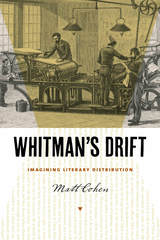 Whitman's Drift: Imagining Literary Distribution
Matt Cohen
University of Iowa Press, 2017 The American nineteenth century witnessed a media explosion unprecedented in human history. New communications technologies seemed to be everywhere, offering opportunities and threats that seem powerfully familiar to us as we experience today’s digital revolution. Walt Whitman’s poetry reveled in the potentials of his time: “See, the many-cylinder’d steam printing-press,” he wrote, “See, the electric telegraph, stretching across the Continent, from the Western Sea to Manhattan.”
Still, as the budding poet learned, books neither sell themselves nor move themselves: without an efficient set of connections to get books to readers, the democratic media-saturated future Whitman imagined would have remained warehoused. Whitman’s works sometimes ran through the “many-cylinder’d steam printing press” and were carried in bulk on “the strong and quick locomotive.” Yet during his career, his publications did not follow a progressive path toward mass production and distribution. Even at the end of his life, in the 1890s as his fame was growing, the poet was selling copies of his latest works by hand to visitors at his small house in Camden, New Jersey. Mass media and centralization were only one part of the rich media world that Whitman embraced.
Whitman’s Drift asks how the many options for distributing books and newspapers shaped the way writers wrote and readers read. Writers like Whitman spoke to the imagination inspired by media transformations by calling attention to connectedness, to how literature not only moves us emotionally, but moves around in the world among people and places. Studying that literature and how it circulated can help us understand not just how to read Whitman’s works and times, but how to understand what is happening to our imaginations now, in the midst of the twenty-first century media explosion.
 Whiz Kids and the 1950 Pennant
Robin Roberts
Temple University Press, 2000 The 1950 Phillies unexpectedly captured the hearts and imaginations for Philadelphians. A young upstart team -- in fact, the youngest major league baseball team ever fielded -- they capped a Cinderella season by winning the pennant from the heavily favored Brooklyn Dodgers in Ebbets Field on the last day of the season. It was the first National League pennant for the team since 1915. With that dramatic victory the 1950 Phillies went into the history books, known forever as the Whiz Kids.
This inspiring era in Phillies history comes alive with the personal reflections of Robin Roberts, a Hall of Famer and arguably the best right-handed pitcher in Phillies history. Roberts recounts the moves, the trades, and the developments that put this young and talented team together. Co-author C. Paul Rogers III interviewed many of the other players from that memorable season, and even manager Eddie Sawyer. Their recollections, accompanied by more than 80 black-and-white photographs, offer an uncommon look at what went into building the extraordinary Whiz Kids. Rich with anecdotes never before published from players like Hall-of-Famer Richie Ashburn, Bubba Church, Andy Seminick, Curt Simmons, Del Ennis, Dick Sisler, Russ Meyer, and many others, this book relives the success of the Whiz Kids in all their glory.
Who Am I?: An Autobiography of Emotion, Mind, and Spirit
Yi-Fu Tuan
University of Wisconsin Press, 1999 Who Am I? is the bittersweet memoir of a Chinese American who came to this country as a twenty-year-old graduate student and stayed to become one of America’s most innovative intellectuals, whose work has explored the aesthetic and moral dimensions of human relations with landscape, nature, and environment. This unusually introspective autobiography mixes Yi-Fu Tuan’s reflections on a life filled with recognition, accolades, and affection with what he deems moral failings, his lack of courage—including the courage to be open about his homosexuality.
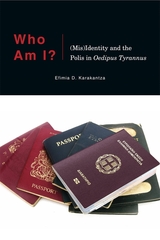 Who Am I?: (Mis)Identity and the Polis in Oedipus Tyrannus
Efimia D. Karakantza
Harvard University Press, 2019 Oedipus’s major handicap in life is not knowing who he is—and both parricide and incest result from his ignorance of his identity. With two questions—“Who am I?” and “Who is my father?”—on his mind (and on his lips), the obsessed Oedipus arrives at the oracle of Delphi.
Unlike the majority of modern and postmodern readings of Oedipus Tyrannus, Efimia Karakantza’s text focuses on the question of identity. Identity, however, is not found only in our genealogy; it also encompasses the ways we move in the public space, command respect or fail to do so, and relate to our interlocutors in life. But overwhelmingly, in the Greek polis, one’s primary identity is as a citizen, and defining the self in the polis is the kernel of this story.
Surveying a wide range of postmodern critical theories, Karakantza follows the steps of the protagonist in the four “cycles of questions” constructed by Sophocles. The quest to piece together Oedipus’s identity is the long, painful, and intricate procedure of recasting his life into a new narrative.
 Who Are We Now: Christian Humanism and the Global Market from Hegel to Heaney
Nicholas Boyle
University of Notre Dame Press, 1997 Along with the spectacular collapse in 1989 of the perspectives imposed by the Cold War, the false certainties of the national and imperial age which shaped our collective and individual identity fell away as well. As we try to regroup and redefine ourselves and our social bonds, we must take into account two seemingly contradictory forces: the trend toward diversity and pluralism, on the one hand, and the pull toward ever greater unification, on the other.
In this book, Nicholas Boyle offers ten studies of the implications of the increasingly integrated world economic structure for our sense of political, cultural, and personal identity. He argues for the deep interconnectedness of politics, religion, philosophy, and literature and their shared inseparability from the economic base. In the process, he uses philosophical and literary ideas to establish systematic grounds for optimism about an emerging supra-national order, aiming to restore the possibility of "grand narrative" to our collective past and future.
However, his exploration of the global mind does not ignore the many haunting personal questions raised by the upheaval of the 90s: Are we more than consumers and producers? To what extent do our nationhood, our gender, our religious and cultural affiliations still define us? Is a Christian perspective viable in such a secular world? Can literature and philosophy make sense of individual lives? What role will the intellectual class play?
Boyle takes a close look at Germany and Britain, their differences and growing similarity. He discusses, among others, Thatcher, Fukuyama, Hegel, Nietzsche, Heidegger, Derrida, and Seamus Heaney. Boyle asserts that as the world becomes less divided but more disparate, and its order less draconian but more precarious, choosing the paths most likely to lead to justice and peace will reform our shattered sense of identity.
Nicholas Boyle is a Fellow at Magdalene College and a Reader in German Literary and Intellectual History at the University of Cambridge.
Reviews
"A readable, original work on a globally important subject." -Karl E. Meyer "[T]his book is one of the most challenging to theology that I have read in recent years. I recommend it without reservation as an excellent starting-point for what needs to be an essential part of the contemporary discussion." -Gareth Jones, The Expository Times "[A] Christian tract for our times in the best traditions of Newman, Chesterton, or T. S. Eliot. In Who Are We Now? Christian Humanism and the Global Market from Hegel to Heaney, Dr. Boyle analyses the revolutionary impact of globalisation, and he devotes several essays to explaining how we got here--as invisibly erudite a brief intellectual history of the West as I have ever read." -The Times (London)
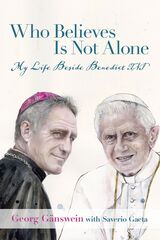 Who Believes Is Not Alone: My Life Beside Benedict XVI
Georg Gänswein
St. Augustine's Press, 2023 The collaboration between a future pope and young prelate is transformed into profound friendship when circumstances thrust Joseph Ratzinger into the Apostolic Palace, even as he expected to be released in retirement to his beloved Bavaria. Monsignor Georg Gänswein never left his side, and witnessed one of the most influential people of this century conduct his papacy on both sides of the curtain. From his appointment as private secretary in 2003, which was meant to be temporary, until the abdication of the pope in 2013 and subsequent years as emeritus, Monsignor Gänswein walked the same steps and weathered the same storms as his dear friend, the Roman Pontiff Benedict XVI. Here he offers the truth regarding the man and the papacy as a spiritual testament of a pope whose formidable legacy is often subject to unfounded characterizations of rigidity and secrecy.
Written with the involvement of the regarded Vaticanista Saverio Gaeta, Mons. Gänswein offers an account of a particular decade in history and confronts false claims of intrigue and cover-up (Vatileaks, the Orlandi abduction case, the sexual abuse scandal, among other issues) to tell the real story of a pope who faced a changing landscape and a public who largely misunderstood him and his style of governance. Here we meet one of the most affable and intellectually formidable popes the Catholic Church has ever known, and a priest who might also be considered a prophet of the post-modern age. Gänswein brilliantly contextualizes many of Benedict's most poignant theological positions, and in giving us a sense of their origin reveals that Benedict seamlessly lived everything he promulgated. His faith was the single bulwark upon which his personality as both teacher and leader were built. No biography has yet to establish the integrity and heart of Joseph Ratzinger as well as his friend, Georg Gänswein, does here.
As a spiritual testament more than just a journalistic exposé, Gänswein provides something only he can give––namely, the candid intelligence and sanctity witnessed up close. This is a remarkable and singular contribution to the history of the papacy and the record of the life of a saint. As Gänswein asserts, knowing this man is to encounter heroic virtue and an invitation to meet God, the greatest lover of mankind. Pope Benedict's own friendship with God will continue to provide warmth for as long as there are people on this earth who believe.
Who Benefits from the Nonprofit Sector?
Edited by Charles T. Clotfelter
University of Chicago Press, 1992 This accessible study examines all the major elements of the nonprofit sector of the economy of the United States —health services, educational and research institutions, religious organizations, social services, arts and cultural organizations, and foundations—describing the institutions and their functions, and then exploring how their benefits are distributed across various economic classes. The book's findings indicate that while few institutions serve primarily the poor, there is no evidence of a gross distribution of benefits upward toward the more affluent. The analysis of this data makes for a book with profound implications for future social and tax policy.
 Who Can Speak?: AUTHORITY AND CRITICAL IDENTITY
Edited by Judith Roof and Robyn Wiegman
University of Illinois Press, 1995 For women, for lesbians and gays, for African Americans, for Asians, Native Americans, or any other self-identified and -identifying group, who can speak? Who has the authority to speak for these groups? Is there genuinely such a thing as "objectivity," or can only members of these groups speak, finally, for themselves? And who has the authority to decide who has the authority?
This collection examines how theory and criticism are complicated by
multiple perspectives in an increasingly multicultural society and
faces head on the difficult question of what qualifies a critic to speak from or about a particular position. In different formats and from different perspectives from various disciplines, the contributors to this volume analytically and innovatively work together to define the problems and capture the contradictions and tensions inherent in the issues of authority, epistemology, and discourse.
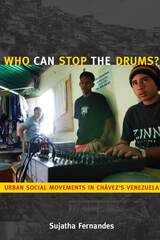 Who Can Stop the Drums?: Urban Social Movements in Chávez's Venezuela
Sujatha Fernandes
Duke University Press, 2010 In this vivid ethnography of social movements in the barrios, or poor shantytowns, of Caracas, Sujatha Fernandes reveals a significant dimension of political life in Venezuela since President Hugo Chávez was elected. Fernandes traces the histories of the barrios, from the guerrilla insurgency, movements against displacement, and cultural resistance of the 1960s and 1970s, through the debt crisis of the early 1980s and the neoliberal reforms that followed, to the Chávez period. She weaves barrio residents’ life stories into her account of movements for social and economic justice. Who Can Stop the Drums? demonstrates that the transformations under way in Venezuela are shaped by negotiations between the Chávez government and social movements with their own forms of historical memory, local organization, and consciousness. Fernandes portrays everyday life and politics in the shantytowns of Caracas through accounts of community-based radio, barrio assemblies, and popular fiestas, and the many interviews she conducted with activists and government officials. Most of the barrio activists she presents are Chávez supporters. They see the leftist president as someone who understands their precarious lives and has made important changes to the state system to redistribute resources. Yet they must balance receiving state resources, which are necessary to fund their community-based projects, with their desire to retain a sense of agency. Fernandes locates the struggles of the urban poor within Venezuela’s transition from neoliberalism to what she calls “post-neoliberalism.” She contends that in contemporary Venezuela we find a hybrid state; while Chávez is actively challenging neoliberalism, the state remains subject to the constraints and logics of global capital.
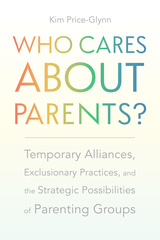 Who Cares About Parents?: Temporary Alliances, Exclusionary Practices, and the Strategic Possibilities of Parenting Groups
Kim Price-Glynn
Rutgers University Press, 2026 Who cares for parental caregivers? The short answer is, parenting groups do. Who Cares for Parents examines how parenting groups collectively build and contribute significant resources to form a broader care infrastructure for adult family caregivers with children. This book looks at the content of care parenting groups provide for parents, through comparative research including mothers, fathers, and nonbinary parents. Cases include some of the most recognizable parenting groups in the United States, some with vast networks of parent members numbering in the thousands or even millions, like the Parent Teacher Association, La Leche League, and MOMS Club International. The book also examines newer and, perhaps, less well known groups like the City Dads Group, the Upper East Side (UES) Mommas, as well as smaller sets of local dads’ groups and a babysitting co-op.
Can parents in the contemporary United States secure some of the necessary resources to provide care, not only for their children but also for themselves, through parenting groups? The evidence from this research suggests they can. Parenting groups have a long history of organizing membership, meetings, education, material resources, and advocacy to provide for parents’ needs. Parenting groups’ ideologies and practices often seek broad goals, and sometimes include far reaching advocacy, innovative solutions, and possibilities for what Price-Glynn calls strategic parenting and social change. Alongside their successes, however, parenting groups also face challenges of producing narrow and temporary alliances, exclusion, and exacerbating inequalities. Despite their many challenges, Price-Glynn remains hopeful about the possibilities for non-familial and collective care infrastructure like that performed by parent groups.
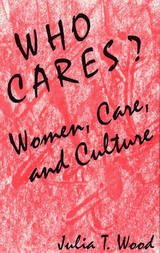 Who Cares? Women, Care, and Culture
Julia T. Wood
Southern Illinois University Press, 1994 At a time when studies suggest the average American woman spends seventeen years caring for children and eighteen years caring for aging parents, Julia T. Wood examines how culture creates and sustains our definitions of caring, determines who cares along gender lines, and assigns the diminished value that caring has in our society. Wood argues that America’s expanding need for caring is currently being met at an unacceptably high cost to caregivers. It is time, she believes, to examine caregiving roles and the personal, political, and social issues that surround the question of who cares. Caring must be recognized and promoted as an activity that commands the respect and participation of all members of our society—men and women alike. Only by implementing changes in the basic fabric of American culture, affecting both the structure and the policies of our society and government, can we, Wood concludes, carve out a system of caring that will recognize caring as everyone’s responsibility.
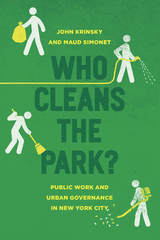 Who Cleans the Park?: Public Work and Urban Governance in New York City
John Krinsky and Maud Simonet
University of Chicago Press, 2017 America’s public parks are in a golden age. Hundreds of millions of dollars—both public and private—fund urban jewels like Manhattan’s Central Park. Keeping the polish on landmark parks and in neighborhood playgrounds alike means that the trash must be picked up, benches painted, equipment tested, and leaves raked. Bringing this often-invisible work into view, however, raises profound questions for citizens of cities.
In Who Cleans the Park? John Krinsky and Maud Simonet explain that the work of maintaining parks has intersected with broader trends in welfare reform, civic engagement, criminal justice, and the rise of public-private partnerships. Welfare-to-work trainees, volunteers, unionized city workers (sometimes working outside their official job descriptions), staff of nonprofit park “conservancies,” and people sentenced to community service are just a few of the groups who routinely maintain parks. With public services no longer being provided primarily by public workers, Krinsky and Simonet argue, the nature of public work must be reevaluated. Based on four years of fieldwork in New York City, Who Cleans the Park? looks at the transformation of public parks from the ground up. Beginning with studying changes in the workplace, progressing through the public-private partnerships that help maintain the parks, and culminating in an investigation of a park’s contribution to urban real-estate values, the book unearths a new urban order based on nonprofit partnerships and a rhetoric of responsible citizenship, which at the same time promotes unpaid work, reinforces workers’ domination at the workplace, and increases the value of park-side property. Who Cleans the Park? asks difficult questions about who benefits from public work, ultimately forcing us to think anew about the way we govern ourselves, with implications well beyond the five boroughs.
 Who Controls Teachers' Work?: Power and Accountability in America's Schools
Richard M. Ingersoll
Harvard University Press, 2006 Schools are places of learning but they are also workplaces, and teachers are employees. As such, are teachers more akin to professionals or to factory workers in the amount of control they have over their work? And what difference does it make?
Drawing on large national surveys as well as wide-ranging interviews with high school teachers and administrators, Richard Ingersoll reveals the shortcomings in the two opposing viewpoints that dominate thought on this subject: that schools are too decentralized and lack adequate control and accountability; and that schools are too centralized, giving teachers too little autonomy. Both views, he shows, overlook one of the most important parts of teachers' work: schools are not simply organizations engineered to deliver academic instruction to students, as measured by test scores; schools and teachers also play a large part in the social and behavioral development of our children. As a result, both views overlook the power of implicit social controls in schools that are virtually invisible to outsiders but keenly felt by insiders. Given these blind spots, this book demonstrates that reforms from either camp begin with inaccurate premises about how schools work and so are bound not only to fail, but to exacerbate the problems they propose to solve.
 Who Count as Persons?: Human Identity and the Ethics of Killing
John F. Kavanaugh, SJ
Georgetown University Press, 2001 Just what is a human being? Who counts? The answers to these questions are crucial when one is faced with the ethical issue of taking human life. In this affirmation of the intrinsic personal dignity and inviolability of every human individual, John Kavanaugh, S. J., denies that it can ever be moral to intentionally kill another. Today in every corner of the world men and women are willing to kill others in the name of "realism" and under the guise of race, class, quality of life, sex, property, nationalism, security, or religion. We justify these killings by either excluding certain humans from our definition of personhood or by invoking a greater good or more pressing value. Kavanaugh contends that neither alternative is acceptable. He formulates an ethics that opposes the intentional killing not only of medically "marginal" humans but also of depersonalized or criminalized enemies. Offering a philosophy of the person that embraces the undeveloped, the wounded, and the dying, he proposes ways to recover a personal ethical stance in a global society that increasingly devalues the individual. Kavanaugh discusses the work of a range of philosophers, artists, and activists from Richard Rorty and Søren Kierkegaard to Albert Camus and Woody Allen, from Mother Teresa to Jack Kevorkian. His approach is in stark contrast to that of writer Peter Singer and others who believe that not all human life has intrinsic moral worth. It will challenge philosophers, students of ethics, and anyone concerned about the depersonalization of contemporary life.
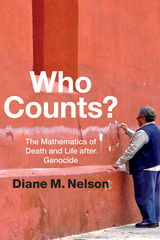 Who Counts?: The Mathematics of Death and Life after Genocide
Diane M. Nelson
Duke University Press, 2015 In Who Counts? Diane M. Nelson explores the social life of numbers, teasing out the myriad roles math plays in Guatemalan state violence, economic exploitation, and disenfranchisement, as well as in Mayan revitalization and grassroots environmental struggles. In the aftermath of thirty-six years of civil war, to count—both numerically and in the sense of having value—is a contested and qualitative practice of complex calculations encompassing war losses, migration, debt, and competing understandings of progress. Nelson makes broad connections among seemingly divergent phenomena, such as debates over reparations for genocide victims, Ponzi schemes, and antimining movements. Challenging the presumed objectivity of Western mathematics, Nelson shows how it flattens social complexity and becomes a raced, classed, and gendered skill that colonial powers considered beyond the grasp of indigenous peoples. Yet the Classic Maya are famous for the precision of their mathematics, including conceptualizing zero long before Europeans. Nelson shows how Guatemala's indigenous population is increasingly returning to Mayan numeracy to critique systemic inequalities with the goal of being counted—in every sense of the word.
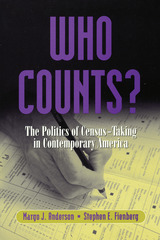 Who Counts?: The Politics of Census-Taking in Contemporary America
Margo Anderson
Russell Sage Foundation, 2001 One of Choice Magazine's Outstanding Academic Books of 2000 For those interested in understanding the historical and scientific context of the census adjustment controversy, Who Counts? is absolutely essential reading. —Science Ever since the founding fathers authorized a national headcount as the means of apportioning seats in the federal legislature, the decennial census has been a political battleground. Political power, and more recently the allocation of federal resources, depend directly upon who is counted and who is left out. Who Counts? is the story of the lawsuits, congressional hearings, and bureaucratic intrigues surrounding the 1990 census. These controversies formed largely around a single vexing question: should the method of conducting the census be modified in order to rectify the demonstrated undercount of poor urban minorities? But they also stemmed from a more general debate about the methods required to count an ever more diverse and mobile population of over two hundred million. The responses to these questions repeatedly pitted the innovations of statisticians and demographers against objections that their attempts to alter traditional methods may be flawed and even unconstitutional. Who Counts? offers a detailed review of the preparation, implementation, and aftermath of the last three censuses. It recounts the growing criticisms of innaccuracy and undercounting, and the work to develop new enumeration strategies. The party shifts that followed national elections played an increasingly important role in the politization of the census, as the Department of Commerce asserted growing authority over the scientific endeavors of the Census Bureau. At the same time, each decade saw more city and state governments and private groups bringing suit to challenge census methodology and results. Who Counts? tracks the legal course that began in 1988, when a coalition led by New York City first sued to institute new statistical procedures in response to an alleged undercount of urban inhabitants. The challenge of accurately classifying an increasingly mixed population further threatens the legitimacy of the census, and Who Counts? investigates the difficulties of gaining unambiguous measurements of race and ethnicity, and the proposal that the race question be eliminated in favor of ethnic origin. Who Counts? concludes with a discussion of the proposed census design for 2000, as well as the implications of population counts on the composition and size of Congress. This volume reveals in extraordinary detail the interplay of law, politics, and science that propel the ongoing census debate, a debate whose outcome will have a tremendous impact on the distribution of political power and economic resources among the nation's communities. A Volume in the Russell Sage Foundation Census Series
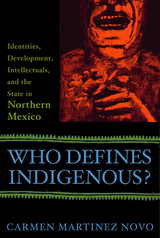 Who Defines Indigenous?: Identities, Development, Intellectuals, and the State in Northern Mexico
Martinez Novo, Carmen
Rutgers University Press, 2006 For years, conventional scholarship has argued that minority groups are better served when the majority groups that absorb them are willing to recognize and allow for the preservation of indigenous identities. But is the reinforcement of ethnic identity among migrant groups always a process of self-liberation? In this surprising study, Carmen Martínez Novo draws on her ethnographic research of the Mixtec Indians’ migration from the southwest of Mexico to Baja California to show that sometimes the push for indigenous labels is more a process of external oppression than it is of minority empowerment. In Baja California, many Mixtec Indians have not made efforts to align themselves as a coherent demographic. Instead, Martínez Novo finds that the push for indigenous identity in this region has come from local government agencies, economic elites, intellectuals, and other external agents. Their concern has not only been over the loss of rich culture. Rather, the pressure to maintain an indigenous identity has stemmed from the desire to secure a reproducible abundance of cheap “Indian” labor. Meanwhile, many Mixtecs reject their ethnic label precisely because being “Indian” means being a commercial agriculture low-wage worker or an urban informal street vendor—an identity that interferes with their goals of social mobility and economic integration. Bringing a critical new perspective to the complex intersection among government and scholarly agendas, economic development, global identity politics, and the aspirations of local migrants, this provocative book is essential reading for scholars working in the fields of sociology, anthropology, and ethnic studies.
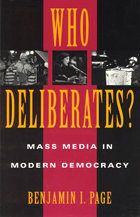 Who Deliberates?: Mass Media in Modern Democracy
Benjamin I. Page
University of Chicago Press, 1996 Public deliberation is essential to democracy, but the public can be fooled as well as enlightened. In three case studies of media coverage in the 1990s, Benjamin Page explores the role of the press in structuring political discussion.
Page shows how the New York Times presented a restricted set of opinions on whether to go to war with Iraq, shutting out discussion of compromises favored by many Americans. He then examines the media's negative reaction to the Bush administration's claim that riots in Los Angeles were caused by welfare programs. Finally, he shows how talk shows overcame the elite media's indifference to widespread concern about Zoe Baird's hiring of illegal aliens. Page's provocative conclusion identifies the conditions under which media outlets become political actors and actively shape and limit the ideas and information available to the public.
Arguing persuasively that a diversity of viewpoints is essential to true public deliberation, this book will interest students of American politics, communications, and media studies.
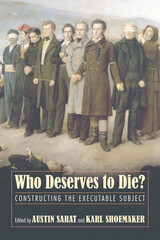 Who Deserves to Die?: Constructing the Executable Subject
Austin Sarat
University of Massachusetts Press, 2011 How do we select those who will be subject to capital punishment? How do we identify the worst of the worst and decide who among them can and should be executed? Today these questions are more pressing than they have ever been. As the number of people sentenced to death and executed declines in the United States, those who are executed stand out as distinctive kinds of criminals, distinctive kinds of people. Does a death sentence affirm or deny their humanity? Is such a sentence an act of revenge or a carefully calculated act of justice?
These are more than questions for policy and law. They are one way of getting a handle on how our culture understands what makes life worth preserving and of delving into its complex calculus of punishment and retribution. Who Deserves to Die? brings together a distinguished group of death penalty scholars to assess the forms of legal subjectivity and legal community that are supported and constructed by the doctrines and practices of punishment by death in the United States. They help us understand what we do and who we become when we decide who is fit for execution.
In addition to the editors, contributors include Vanessa Barker, Thomas L. Dumm, Daniel Markel, Linda Meyer, Ruth A. Miller, Ravit Reichman, Susan R. Schmeiser, Mateo Taussig-Rubbo, and Robert Weisberg.
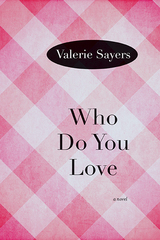 Who Do You Love: A Novel
Valerie Sayers
Northwestern University Press, 2011 Sayers's gift for delineating family relationships against the microcosm of a small Southern town grows more assured with each novel. This third book to be set in Due East, S.C., focuses on the Irish Catholic Rooney family, outsiders in the community because of their religion. Dolores Rooney's New York origins and her outspoken championing of integration. On the unseasonably warm November day in 1963 during which most of the story takes place, Dolores ruminates over her fifth pregnancy and what it will mean to the family's already shaky finances, and Bill Rooney hopes to sell a prize piece of real estate to help his faltering business, meanwhile thinking bitter thoughts about Dolores's sanctimonious piety and intellectual superiority. Eleven-year-old Kate feels the stirrings of sexuality, and gains some insights from her teenage brothers. And a New York Times reporter whom Dolores brings home to dinner trains a spotlight on their inner lives and sets in motion an event whose implications will reverberate down the years. Then President Kennedy's assassination unites them in terrible grief. Sayers's prose has verve and humor, her view of Southern life is clear-eyed, authentic and generous. Her compassionate understanding of the strains, worries and missed communications of marriage gives this book depth and staying power.
 Who Do You Say That I Am?: Confessing the Mystery of Christ
John D. Cavadini
University of Notre Dame Press, 2004 Drawing together renowned scholars of Christianity, Judaism, and Islam, Who Do You Say That I Am? focuses on the identity and ministry of Jesus. This distinctive collection provides an ecumenical forum in which adherents of some of the world's major religions comment on the tradition of Christian engagement with fundamental questions of Christology. The essays in this volume were delivered at an international conference at the Tantur Institute for Ecumencial Studies in Israel during May 2000.
Contributors to this volume write on varied topics, including the Christological creeds and confessions of the early church, the confessions of the Councils, the many and various titles given to Jesus in the New Testament, the relationship between the biblical confessions and the creedal confessions of the Councils, a theology of the poor, Christology and inter-religious dialogue, and a comparative theology of mutual illumination among Christianity, Judaism, and Islam.
While covering diverse themes, the essays in this volume are united by the conviction that the faith of the Church is by its very nature open to development and understanding
JOHN CAVADINI is chair of the department of theology at the University of Notre Dame.
LAURA HOLT is associate director of the University of Notre Dame's Undergraduate Studies in London.
Contributors: John Cavadini, Kathryn Johnson, Jaroslav Pelikan, Gerald O'Collins, S.J., Morna Hooker, James Buckley, Elizabeth Dreyer, Jon Sobrino, S.J., Johann Baptist Metz, George Lindbeck, Michael A. Signer, David Burrell, C.S.C., Claude Geffre, O.P., and Lawrence Cunningham.
 Who Follow the Gleam: Poems
Christian Wessels
University of Massachusetts Press, 2026 A dazzling debut that blends folklore with the everyday
Drifting between the past and present, the material and the otherworldly, Who Follow the Gleam melts lore and magic with history to shape distinctive narratives of childhood, fatherhood, and personhood. In his debut poetry collection, Christian Wessels crosses centuries and takes his readers with him to Germany’s Black Forest, burning hotels, chromatic casinos, and Long Island’s dazing Sound. Uncanny elements of folklore and dreamlike stories are grounded in the atmosphere of the natural world as Wessels turns the sun, moss, and clouds into characters connecting his poems: “maybe I myself am the sun; am / the brilliant silence engraved / in stone; am the arc / through which the future becomes / legible.”
In the world of this collection, intuition, feelings, dreams, and spells mimic cycles, patterns, rules, and structure as the speaker disappears in the magic of language, only to resurface in the everyday. In four sections, Wessels reckons with a changing world, evolving and sometimes unfamiliar, while coming to terms with the uncertain future: “The cloud looks / like me, it looks like me because / the present moves, the present moves.” This collection is a sensitive meditation on the power of passed-down knowledge—personal and collective, factual and mythical—and how such knowledge finds its embodiment in the world.
 Who Follow the Gleam: Poems
Christian Wessels
University of Massachusetts Press, 2026 A dazzling debut that blends folklore with the everyday
Drifting between the past and present, the material and the otherworldly, Who Follow the Gleam melts lore and magic with history to shape distinctive narratives of childhood, fatherhood, and personhood. In his debut poetry collection, Christian Wessels crosses centuries and takes his readers with him to Germany’s Black Forest, burning hotels, chromatic casinos, and Long Island’s dazing Sound. Uncanny elements of folklore and dreamlike stories are grounded in the atmosphere of the natural world as Wessels turns the sun, moss, and clouds into characters connecting his poems: “maybe I myself am the sun; am / the brilliant silence engraved / in stone; am the arc / through which the future becomes / legible.”
In the world of this collection, intuition, feelings, dreams, and spells mimic cycles, patterns, rules, and structure as the speaker disappears in the magic of language, only to resurface in the everyday. In four sections, Wessels reckons with a changing world, evolving and sometimes unfamiliar, while coming to terms with the uncertain future: “The cloud looks / like me, it looks like me because / the present moves, the present moves.” This collection is a sensitive meditation on the power of passed-down knowledge—personal and collective, factual and mythical—and how such knowledge finds its embodiment in the world.
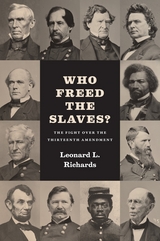 Who Freed the Slaves?: The Fight over the Thirteenth Amendment
Leonard L. Richards
University of Chicago Press, 2015 In the popular imagination, slavery in the United States ended with Abraham Lincoln’s Emancipation Proclamation. The Proclamation may have been limited—freeing only slaves within Confederate states who were able to make their way to Union lines—but it is nonetheless generally seen as the key moment, with Lincoln’s leadership setting into motion a train of inevitable events that culminated in the passage of an outright ban: the Thirteenth Amendment.
The real story, however, is much more complicated—and dramatic—than that. With Who Freed the Slaves?, distinguished historian Leonard L. Richards tells the little-known story of the battle over the Thirteenth Amendment, and of James Ashley, the unsung Ohio congressman who proposed the amendment and steered it to passage. Taking readers to the floor of Congress and the back rooms where deals were made, Richards brings to life the messy process of legislation—a process made all the more complicated by the bloody war and the deep-rooted fear of black emancipation. We watch as Ashley proposes, fine-tunes, and pushes the amendment even as Lincoln drags his feet, only coming aboard and providing crucial support at the last minute. Even as emancipation became the law of the land, Richards shows, its opponents were already regrouping, beginning what would become a decades-long—and largely successful—fight to limit the amendment’s impact.
Who Freed the Slaves? is a masterwork of American history, presenting a surprising, nuanced portrayal of a crucial moment for the nation, one whose effects are still being felt today.
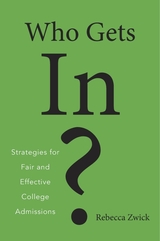 Who Gets In?: Strategies for Fair and Effective College Admissions
Rebecca Zwick
Harvard University Press, 2017 When it comes to the hotly disputed topic of college admissions, the one thing everyone agrees about is that it’s unfair. But there is little agreement on what a fair process would be.
Rebecca Zwick takes a hard look at the high-stakes competition of U.S. college admissions today. Illustrating her points using analyses of survey data from applicants to the nation’s top colleges and universities, she assesses the goals of different admissions systems and the fairness of criteria—from high school grades and standardized test scores to race, socioeconomic status, and students’ academic aspirations. The demographic makeup of the class and the educational outcomes of its students can vary substantially, depending upon how an institution approaches its task. Who Gets In? considers the merits and flaws of competing approaches and demonstrates that admissions policies can sometimes fail to produce the desired results. For example, some nontraditional selection methods can hurt more than help the students they are intended to benefit.
As Zwick shows, there is no objective way to evaluate admissions systems—no universal definition of student merit or blanket entitlement to attend college. Some schools may hope to attract well-rounded students, while others will focus on specific academic strengths. What matters most is that a school’s admissions policy reflects its particular educational philosophy. Colleges should be free to include socioeconomic and racial preferences among their admissions criteria, Zwick contends, but they should strive for transparency about the factors they use to evaluate applicants.
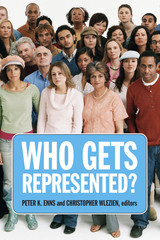 Who Gets Represented?
Peter K. Enns
Russell Sage Foundation, 2011 An investigation of policy preferences in the U.S. and how group opinion affects political representation. While it is often assumed that policymakers favor the interests of some citizens at the expense of others, it is not always evident when and how groups' interests differ or what it means when they do. Who Gets Represented? challenges the usual assumption that the preferences of any one group—women, African Americans, or the middle class—are incompatible with the preferences of other groups. The book analyzes differences across income, education, racial, and partisan groups and investigates whether and how differences in group opinion matter with regard to political representation. Part I examines opinions among social and racial groups. Relying on an innovative matching technique, contributors Marisa Abrajano and Keith Poole link respondents in different surveys to show that racial and ethnic groups do not, as previously thought, predictably embrace similar attitudes about social welfare. Katherine Cramer Walsh finds that, although preferences on health care policy and government intervention are often surprisingly similar across class lines, different income groups can maintain the same policy preferences for different reasons. Part II turns to how group interests translate into policy outcomes, with a focus on differences in representation between income groups. James Druckman and Lawrence Jacobs analyze Ronald Reagan's response to private polling data during his presidency and show how different electorally significant groups—Republicans, the wealthy, religious conservatives—wielded disproportionate influence on Reagan's policy positions. Christopher Wlezien and Stuart Soroka show that politicians' responsiveness to the preferences of constituents within different income groups can be surprisingly even-handed. Analyzing data from 1876 to the present, Wesley Hussey and John Zaller focus on the important role of political parties, vis-à-vis constituents' preferences, for legislators' behavior. Who Gets Represented? upends several long-held assumptions, among them the growing conventional wisdom that income plays in American politics and the assumption that certain groups will always—or will never—have common interests. Similarities among group opinions are as significant as differences for understanding political representation. Who Gets Represented? offers important and surprising answers to the question it raises.
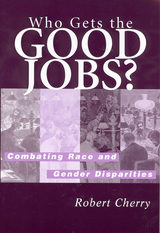 Who Gets the Good Jobs?: Combating Race and Gender Disparities
Cherry, Robert
Rutgers University Press, 2001 Racial and gender employment inequalities are alive and well today. In 2000, the U.S. government offered $508 million to settle more than one thousand lawsuits brought against the federally funded Voice of America by female workers. At the same time, African American employees of Coca-Cola sued their employer, citing the large number of minorities in low-paying jobs, with just a handful at top levels. Even Alan Greenspan has urged firms to eliminate the “distortions that arise as a result of discrimination.” The political agenda regarding this issue is polarized. Many conservative economists claim that financial considerations have led businesses to hire minorities because such practices increase profits. In opposition, many liberal economists believe businesses will hire minorities only if forced to do so by equal employment opportunity policies. Robert Cherry bridges these two positions, arguing that there is some truth to the positive effect of the profit motive, but that market forces alone are not enough to eliminate employment and earnings disparities. Cherry surveys the political and economic forces that influenced labor market practices in the nineteenth and twentieth centuries, focusing on the employment barriers African Americans, women, and immigrants encounter. He then assesses the effects of 1960s civil rights legislation and finds that improvements have been substantial, primarily for college-educated African Americans and women; therefore, he recommends that equal employment opportunity policies be strengthened. Cherry demonstrates how the promotion of full employment can further the advancement of working-class African Americans and women.
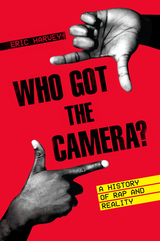 Who Got the Camera?: A History of Rap and Reality
Eric Harvey
University of Texas Press, 2021 Reality first appeared in the late 1980s—in the sense not of real life but rather of the TV entertainment genre inaugurated by shows such as Cops and America’s Most Wanted; the daytime gabfests of Geraldo, Oprah, and Donahue; and the tabloid news of A Current Affair. In a bracing work of cultural criticism, Eric Harvey argues that reality TV emerged in dialog with another kind of entertainment that served as its foil while borrowing its techniques: gangsta rap. Or, as legendary performers Ice Cube and Ice-T called it, “reality rap.” Reality rap and reality TV were components of a cultural revolution that redefined popular entertainment as a truth-telling medium. Reality entertainment borrowed journalistic tropes but was undiluted by the caveats and context that journalism demanded. While N.W.A.’s “Fuck tha Police” countered Cops’ vision of Black lives in America, the reality rappers who emerged in that group’s wake, such as Snoop Doggy Dogg and Tupac Shakur, embraced reality’s visceral tabloid sensationalism, using the media's obsession with Black criminality to collapse the distinction between image and truth. Reality TV and reality rap nurtured the world we live in now, where politics and basic facts don’t feel real until they have been translated into mass-mediated entertainment.
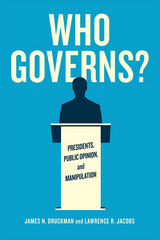 Who Governs?: Presidents, Public Opinion, and Manipulation
James N. Druckman and Lawrence R. Jacobs
University of Chicago Press, 2015 America’s model of representational government rests on the premise that elected officials respond to the opinions of citizens. This is a myth, however, not a reality, according to James N. Druckman and Lawrence R. Jacobs. In Who Governs?, Druckman and Jacobs combine existing research with novel data from US presidential archives to show that presidents make policy by largely ignoring the views of most citizens in favor of affluent and well-connected political insiders. Presidents treat the public as pliable, priming it to focus on personality traits and often ignoring it on policies that fail to become salient.
Melding big debates about democratic theory with existing research on American politics and innovative use of the archives of three modern presidents—Johnson, Nixon, and Reagan—Druckman and Jacobs deploy lively and insightful analysis to show that the conventional model of representative democracy bears little resemblance to the actual practice of American politics. The authors conclude by arguing that polyarchy and the promotion of accelerated citizen mobilization and elite competition can improve democratic responsiveness. An incisive study of American politics and the flaws of representative government, this book will be warmly welcomed by readers interested in US politics, public opinion, democratic theory, and the fecklessness of American leadership and decision-making.
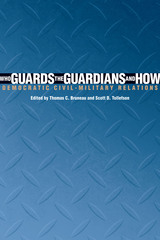 Who Guards the Guardians and How: Democratic Civil-Military Relations
Edited by Thomas C. Bruneau and Scott D. Tollefson
University of Texas Press, 2006 The continued spread of democracy into the twenty-first century has seen two-thirds of the almost two hundred independent countries of the world adopting this model. In these newer democracies, one of the biggest challenges has been to establish the proper balance between the civilian and military sectors. A fundamental question of power must be addressed—who guards the guardians and how? In this volume of essays, contributors associated with the Center for Civil-Military Relations in Monterey, California, offer firsthand observations about civil-military relations in a broad range of regions including Latin America, Africa, Asia, and Eastern Europe. Despite diversity among the consolidating democracies of the world, their civil-military problems and solutions are similar—soldiers and statesmen must achieve a deeper understanding of one another, and be motivated to interact in a mutually beneficial way. The unifying theme of this collection is the creation and development of the institutions whereby democratically elected civilians achieve and exercise power over those who hold a monopoly on the use of force within a society, while ensuring that the state has sufficient and qualified armed forces to defend itself against internal and external aggressors. Although these essays address a wide variety of institutions and situations, they each stress a necessity for balance between democratic civilian control and military effectiveness.
Who if I Cry Out
By Gustavo Corção
University of Texas Press, 1967 Three months to live. José Maria, a contemplative engineer in late middle age, and now a victim of leukemia, has received a death sentence from his doctor. His life has been a frustrating nonfulfillment of his early hopes, and his musings are many and varied as his life wanes. The Brazilian writer Corção's remarkable novel is the diary of this thoughtful man facing the imminent prospect of death and trying to find the meaning of life—and of death—while evaluating his own existence.
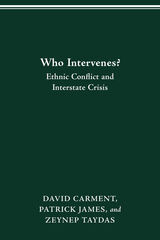 WHO INTERVENES?: ETHNIC CONFLICT AND INTERSTATE CRISIS
DAVID CARMENT
Ohio State University Press, 2006 Who Intervenes? takes as a given that there are tensions among ethnic groups throughout the world. But it is not at all clear when and why these tensions escalate into violence. The likelihood and character of intervention depend upon the interplay of two factors: ethnic composition and institutional constraint. A fourfold typology is produced. For example, states with high constraints and ethnic diversity are likely to intervene only for reasons related to national interests, while states with both ethnic dominance and low constraint are most disposed to intervene. The disposition to intervene is catalyzed, the authors hypothesize, by the presence of ethnic affinity and cleavage.
The book includes a comparative analysis of five case studies: India and Sri Lanka, Somalia and Ethiopia, Malaysia and the Thai Malay (a non-intervention), the immediate aftermath of the breakup of Yugoslavia, and Greece and Turkey with Cyprus. The case histories produce strong support for the relevance of the typology and catalysts. Ethnic composition, institutional constraint, and ethnic affinity and cleavage are very useful factors in distinguishing both the likelihood and form of intervention.
Policies that encourage institutional reform and support ethnic diversity can be expected to reduce the likelihood and even the perceived need for intervention.
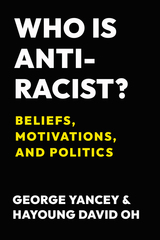 Who Is Antiracist?: Beliefs, Motivations, and Politics
George Yancey and Hayoung Oh
Temple University Press, 2025 In the summer of 2020 when protests were mobilizing for social justice, the term “antiracist” started getting more traction. It demanded a more active civic orientation and a commitment to uprooting racism from institutions. In Who Is Antiracist? George Yancey and Hayoung David Oh use this flashpoint moment to ask, what are the characteristics of those who support antiracism? Who is most likely to be swayed toward this set of commitments, who is not, and how do they understand each other?
Who Is Antiracist? provides a systematic approach to understanding the motivations and intentions of racial progressives as well as the impact of political ideology on antiracism. The authors discuss the theoretical origins of contemporary antiracism and review key works of antiracism to piece together the characteristics that define it. They also create the Antiracism Attitude Scale to explore the demographic makeup and social views of those who support the type of antiracism popularized in the United States.
Acknowledging that antiracism faces powerful challenges in fully obtaining the goals articulated by its proponents, Who Is Antiracist? enlightens us about the continuing racial conflict in our society and warns against the risk of antiracism becoming just a proxy for ordinary party politics.
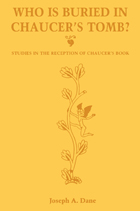 Who is Buried in Chaucer's Tomb?: Studies in the Reception of Chaucer's Book
Joseph A. Dane
Michigan State University Press, 1998 Joseph A. Dane examines the history of the books we now know as "Chaucer’s"—a history that includes printers and publishers, editors, antiquarians, librarians, and book collectors. The Chaucer at issue here is not a medieval poet, securely bound within his fourteenth-century context, but rather the product of the often chaotic history of the physical books that have been produced and marketed in his name. This history involves a series of myths about Chaucer—a reformist Chaucer, a realist Chaucer, a political and critical Chaucer who seems oddly like us. It also involves more self-reflective critical myths—the conveniently coherent editorial tradition that leads progressively to modern editions of Chaucer. Dane argues that the material background of these myths remains irreducibly and often amusingly recalcitrant. The great Chaucer monuments—his editions, his book, and even his tomb—defy our efforts to stabilize them with our critical descriptions and transcriptions. Part I concentrates on the production and reception of the Chaucerian book from the sixteenth to the eighteenth centuries, a period dominated by the folio "Complete Works" and a period that culminates in what Chaucerians have consistently (if uncritically) defined as the worst Chaucer edition of 1721. Part II considers the increasing ambivalence of modern editors and critics in relation to the book of Chaucer, and the various attempts of modern scholars to provide alternative sources of authority.
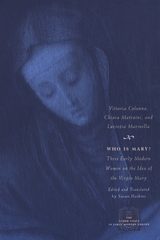 Who Is Mary?: Three Early Modern Women on the Idea of the Virgin Mary
Vittoria Colonna, Chiara Matraini, and Lucrezia Marinella
University of Chicago Press, 2009 For women of the Italian Renaissance, the Virgin Mary was one of the most important role models. Who Is Mary? presents devotional works written by three women better known for their secular writings: Vittoria Colonna, famed for her Petrarchan lyric verse; Chiara Matraini, one of the most original poets of her generation; and the wide-ranging, intellectually ambitious polemicist Lucrezia Marinella. At a time when the cult of the Virgin was undergoing a substantial process of redefinition, these texts cast fascinating light on the beliefs of Catholic women in the Renaissance, and also, in the cases of Matraini and Marinella, on contemporaneous women’s social behavior, prescribed for them by male writers in books on female decorum.
Who Is Mary? testifies to the emotional and spiritual relationships that women had with the figure of Mary, whom they were required to emulate as the epitome of femininity. Now available for the first time in English-language translation, these writings suggest new possibilities for women in both religious and civil culture and provide a window to women’s spirituality, concerning the most important icon set before them, as wives, mothers, and Christians.
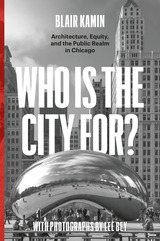 Who Is the City For?: Architecture, Equity, and the Public Realm in Chicago
Blair Kamin
University of Chicago Press, 2022 A vividly illustrated collaboration between two of Chicago’s most celebrated architecture critics casts a wise and unsparing eye on inequities in the built environment and attempts to rectify them.
From his high-profile battles with Donald Trump to his insightful celebrations of Frank Lloyd Wright and front-page takedowns of Chicago mega-projects like Lincoln Yards, Pulitzer Prize–winning architecture critic Blair Kamin has long informed and delighted readers with his illuminating commentary. Kamin’s newest collection, Who Is the City For?, does more than gather fifty-five of his most notable Chicago Tribune columns from the past decade: it pairs his words with striking new images by photographer and architecture critic Lee Bey, Kamin’s former rival at the Chicago Sun-Times. Together, they paint a revealing portrait of Chicago that reaches beyond its glamorous downtown and dramatic buildings by renowned architects like Jeanne Gang to its culturally diverse neighborhoods, including modest structures associated with storied figures from the city’s Black history, such as Emmett Till.
At the book’s heart is its expansive approach to a central concept in contemporary political and architectural discourse: equity. Kamin argues for a broad understanding of the term, one that prioritizes both the shared spaces of the public realm and the urgent need to rebuild Black and brown neighborhoods devastated by decades of discrimination and disinvestment. “At best,” he writes in the book’s introduction, “the public realm can serve as an equalizing force, a democratizing force. It can spread life’s pleasures and confer dignity, irrespective of a person’s race, income, creed, or gender. In doing so, the public realm can promote the social contract — the notion that we are more than our individual selves, that our common humanity is made manifest in common ground.” Yet the reality in Chicago, as Who Is the City For? powerfully demonstrates, often falls painfully short of that ideal.
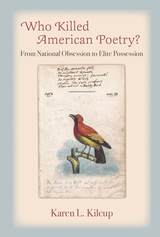 Who Killed American Poetry?: From National Obsession to Elite Possession
Karen L. Kilcup
University of Michigan Press, 2019 Throughout the 19th century, American poetry was a profoundly populist literary form. It circulated in New England magazines and Southern newspapers; it was read aloud in taverns, homes, and schools across the country. Antebellum reviewers envisioned poetry as the touchstone democratic genre, and their Civil War–era counterparts celebrated its motivating power, singing poems on battlefields. Following the war, however, as criticism grew more professionalized and American literature emerged as an academic subject, reviewers increasingly elevated difficult, dispassionate writing and elite readers over their supposedly common counterparts, thereby separating “authentic” poetry for intellectuals from “popular” poetry for everyone else.\
Conceptually and methodologically unique among studies of 19th-century American poetry, Who Killed American Poetry? not only charts changing attitudes toward American poetry, but also applies these ideas to the work of representative individual poets. Closely analyzing hundreds of reviews and critical essays, Karen L. Kilcup tracks the century’s developing aesthetic standards and highlights the different criteria reviewers used to assess poetry based on poets’ class, gender, ethnicity, and location. She shows that, as early as the 1820s, critics began to marginalize some kinds of emotional American poetry, a shift many scholars have attributed primarily to the late-century emergence of affectively restrained modernist ideals. Mapping this literary critical history enables us to more readily apprehend poetry’s status in American culture—both in the past and present—and encourages us to scrutinize the standards of academic criticism that underwrite contemporary aesthetics and continue to constrain poetry’s appeal.
Who American Killed Poetry? enlarges our understanding of American culture over the past two hundred years and will interest scholars in literary studies, historical poetics, American studies, gender studies, canon criticism, genre studies, the history of criticism, and affect studies. It will also appeal to poetry readers and those who enjoy reading about American cultural history.
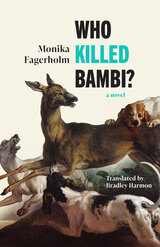 Who Killed Bambi?
Monika Fagerholm, translated by Bradley Harmon
University of Wisconsin Press, 2026 Published to great acclaim in the original Swedish, Who Killed Bambi? weaves together a complex network of causality and consequences as it examines the aftermath of a sexual assault. Fagerholm’s indicting, sharp prose leads the reader back and forth through time, abandoning linear narrative. This kaleidoscopic, elliptical approach shatters the facade of contemporary polite society, examining the sinister forces that attempt to maintain and protect the status quo in the years following a violent event that shocks an entire community.
Set in a fictional, affluent suburb of Helsinki, the main narrative follows Gusten Grippe, a successful realtor haunted by his role as one of the four teenage rapists—the only one to report the crime and admit his guilt. When, a decade afterward, an acquaintance plans to make a movie about what happened, Gusten attempts to atone for his past in the face of the community’s stoic silence and misguided consideration for reputation. Released at the height of the #MeToo movement and translated into a dozen languages, Who Killed Bambi? remains highly relevant in a world grappling with the ubiquity of sexual violence, toxic masculinity, and gender discrimination.
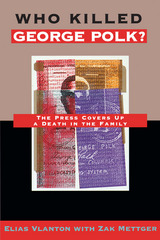 Who Killed George Polk?: The Press Covers Up a Death in the Family
Elias Vlanton
Temple University Press, 1996 Just weeks after CBS correspondent George Polk was murdered in Greece in 1948, his peers created the "George Polk Award" to honor the best in American journalism. Polk would have been bitterly disappointed, however, had he known that the "best in American journalism" accepted, largely without protest, an investigation into his death in which evidence was not only ignored but manufactured to convict innocent men—an investigation in which politics played a bigger role than the truth. Reconstructing the murder, investigation, trial, and aftermath, Who Killed George Polk? offers a penetrating analysis of the willingness of the American media—including CBS and a committee of prominent journalists headed by Walter Lippmann—to accept the government's version of events despite numerous inconsistencies. The book also explores the fate of the handful of journalists who had questioned the original coverup and shows that even when additional developments turned the official version on its head, they were no longer in a position to press for a new investigation. All had become victims of anticommunist witchhunts. Arguing that this mainstream media and the U.S. government were so blinded by cold war political considerations that they overlooked the most obvious culprits for the Polk murder, Elias Vlanton proves that Polk was likely killed neither by the communists, as originally charged, nor by corrupt Greek government officials, as claimed by a recent book and in a CBS "Sixty Minutes" broadcast. Instead, based on evidence uncovered during Vlanton's 19-year investigation, the author presents the only plausible scenario of how and why Polk was murdered. At its core, this perceptive interrogation explores how the press served U.S. national interests at the expense of the truth and journalistic integrity.
 Who Killed John Clayton?: Political Violence and the Emergence of the New South, 1861-1893
Kenneth C. Barnes
Duke University Press, 1998 In 1888 a group of armed and masked Democrats stole a ballot box from a small town in Conway County, Arkansas. The box contained most of the county’s black Republican votes, thereby assuring defeat for candidate John Clayton in a close race for the U.S. Congress. Days after he announced he would contest the election, a volley of buckshot ripped through Clayton’s hotel window, killing him instantly. Thus began a yet-to-be-solved, century-old mystery. More than a description of this particular event, however, Who Killed John Clayton? traces patterns of political violence in this section of the South over a three-decade period. Using vivid courtroom-type detail, Barnes describes how violence was used to define and control the political system in the post-Reconstruction South and how this system in turn produced Jim Crow. Although white Unionists and freed blacks had joined under the banner of the Republican Party and gained the upper hand during Reconstruction, during these last decades of the nineteenth century conservative elites, first organized as the Ku Klux Klan and then as the revived Democratic Party, regained power—via such tactics as murdering political opponents, lynching blacks, and defrauding elections. This important recounting of the struggle over political power will engage those interested in Southern and American history.
 Who Killed Jules Crevaux?: Murder in the Bolivian Chaco
Isabelle Combès
HAU, 2023 The first book to explore the deaths of explorer Jules Crevaux and his crew from an Indigenous perspective.
In 1882, the celebrated French explorer Jules Crevaux and his crew were killed by Indigenous people in the Bolivian Chaco, a fiercely contested region on the border between Bolivia, Argentina, and Paraguay. The event sparked an international uproar. The scene of the crime was embroiled in clashes among various Indigenous peoples, rubber tappers, and missionaries. Official investigators sent from France and competing newspapers ended up mired in a morass of equivocal, ambiguous, false, and contradictory information.
To make sense of this event, Isabelle Combès is the first researcher to consult the local archives and to include the perspective of Indigenous peoples. In search of who killed Crevaux and why, Combès unearths the power struggles and social imaginaries behind the incident and its aftermath. Readers will find not only an engrossing story in these pages but also an exemplar of historical inquiry that questions the very nature of truth-telling.
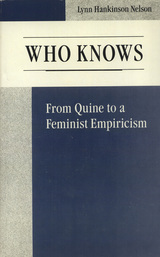 Who Knows: From Quine to a Feminist Empiricism
Lynn Hankinson Nelson
Temple University Press, 1992 In the past fifteen years, feminist science critics have, for the most part, rejected empiricism because of its identification with positivism. Various assumptions of both empiricists and feminists, including the "tenet" that individualism is an essential element of empiricism, have led to the belief that feminist science criticism is not a part of science. This view continues the myth that science is an autonomous and apolitical activity. Building on the work of W.V.0. Quine, Lynn Nelson clears away these obstacles and establishes a framework for a much-needed dialogue between feminist science critics and other scientists and scholars about the nature of science. She makes a case for a feminist empiricism that retains a crucial role for experience, but separates empiricism from individualism. Following Quine, Nelson argues that empiricism is a theory of evidence and is distinct from empiricist accounts of science that have been built on it. She urges feminists and empiricists to work together to develop a feminist empiricism, a view of science that can account for its obvious success in explaining and predicting experience and can encompass feminist insights into relationships among gender, politics, and science. Basing her arguments on Quine’s non-foundationalist view that theories are bridges of our own construction, the author insists, as does Quine, that the construction of these bridges is constrained by experience. She determines that individualism is inconsistent with key Quinean positions and that empiricism can survive the demise of individualism. Clearly diverging from Quine, Nelson proposes the view that the evolving network of our theories does and should incorporate political views, including those shaped by, and shaping in turn, our experiences of gender.
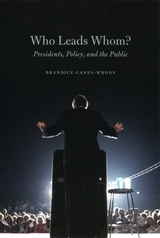 Who Leads Whom?: Presidents, Policy, and the Public
Brandice Canes-Wrone
University of Chicago Press, 2005 Who Leads Whom? is an ambitious study that addresses some of the most important questions in contemporary American politics: Do presidents pander to public opinion by backing popular policy measures that they believe would actually harm the country? Why do presidents "go public" with policy appeals? And do those appeals affect legislative outcomes?
Analyzing the actions of modern presidents ranging from Eisenhower to Clinton, Brandice Canes-Wrone demonstrates that presidents' involvement of the mass public, by putting pressure on Congress, shifts policy in the direction of majority opinion. More important, she also shows that presidents rarely cater to the mass citizenry unless they already agree with the public's preferred course of action. With contemporary politics so connected to the pulse of the American people, Who Leads Whom? offers much-needed insight into how public opinion actually works in our democratic process. Integrating perspectives from presidential studies, legislative politics, public opinion, and rational choice theory, this theoretical and empirical inquiry will appeal to a wide range of scholars of American political processes.
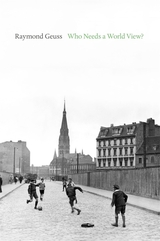 Who Needs a World View?
Raymond Geuss
Harvard University Press, 2020 One of the world’s most provocative philosophers attacks the obsession with comprehensive intellectual systems—the perceived need for a world view.
We live in a unitary cosmos created and cared for in all its details by a benevolent god. That, for centuries, was the starting point for much philosophical and religious thinking in the West. The task was to accommodate ourselves to that view and restrict ourselves to working out how the pieces fit together within a rigidly determined framework. In this collection of essays, one of our most creative contemporary philosophers explores the problems and pathologies of the habit of overly systematic thinking that we have inherited from this past.
Raymond Geuss begins by making a general case for flexible and skeptical thinking with room for doubt and unresolved complexity. He examines the ideas of two of his most influential teachers—one systematic, the other pragmatic—in light of Nietzsche’s ideas about appearance and reality. The chapters that follow concern related moral, psychological, and philosophical subjects. These include the idea that one should make one’s life a work of art, the importance of games, the concept of need, and the nature of manifestoes. Along the way, Geuss ranges widely, from ancient philosophy to modern art, with his characteristic combination of clarity, acuity, and wit.
Who Needs a World View? is a provocative and enlightening demonstration of what philosophy can achieve when it abandons its ambitions for completeness, consistency, and unity.
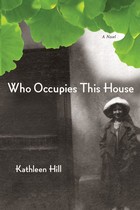 Who Occupies This House: A Novel
Kathleen Hill
Northwestern University Press, 2011 Kathleen Hill’s finely wrought novel tells the story of four generations of an Irish-American family that has lived in the same house for almost a century. Grieving the death of her mother and the imminent sale of the house, the narrator sets out to re-create the hidden, intimate lives of those who came before. Through a series of vignettes she conjures a family devastated in each generation by the loss of a child.
The narrator’s project, inspired at the outset by silences that extend backward to the untold story of the Famine, turns into a vast exploration of loss, inheritance, and the nature of memory. In a voice both stark and lyrical, the narrator calls up transformative, often tragic, moments in lives that have shaped her own. Remembering a past she never knew, she hopes to release from its sway the vanishing present.
Who Occupies This House is a strikingly beautiful account of the difficult reckoning with one’s family legacy that every adult faces. Punctuated by photographs and images that bring the narrative into sharp focus, it will draw comparisons to such divergent writers as W.G. Sebald and Kate O’Brien.
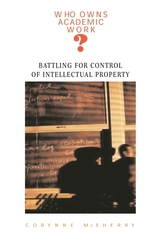 Who Owns Academic Work?: Battling for Control of Intellectual Property
Corynne McSherry
Harvard University Press, 2003 Who owns academic work? This question is provoking political and legal battles, fought on uncertain terrain, for ever-higher stakes. The posting of faculty lecture notes on commercial Web sites is being hotly debated in multiple forums, even as faculty and university administrators square off in a battle for professorial copyright. In courtrooms throughout the country, universities find themselves embroiled in intricate and expensive patent litigation. Meanwhile, junior researchers are appearing in those same courtrooms, using intellectual property rules to challenge traditional academic hierarchies. All but forgotten in these ownership disputes is a more fundamental question: should academic work be owned at all? Once characterized as a kind of gift, academic work--and academic freedom--are now being reframed as private intellectual property.
Drawing on legal, historical, and qualitative research, Corynne McSherry explores the propertization of academic work and shows how that process is shaking the foundations of the university, the professoriate, and intellectual property law. The modern university's reason for being is inextricably tied to that of the intellectual property system. The rush of universities and scholars to defend their knowledge as property dangerously undercuts a working covenant that has sustained academic life--and intellectual property law--for a century and a half. As the value structure of the research university is replaced by the inequalities of the free market, academics risk losing a language for talking about knowledge as anything other than property. McSherry has written a book that ought to deeply trouble everyone who cares about the academy.
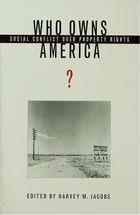 Who Owns America?: Social Conflict over Property Rights
Edited by Harvey M. Jacobs
University of Wisconsin Press, 1998 Land ownership by individual citizens is a cornerstone of American heritage and a centerpiece of the American dream. Thomas Jefferson called it the key to our success as a democracy. Yet the question of who owns America not only remains unanswered but is central to a fundamental conflict that can pit private property rights advocates against government policymakers and environmentalists.
Land use authority Harvey M. Jacobs has gathered a provocative collection of perspectives from eighteen contributors in the fields of law, history, anthropology, economics, sociology, forestry, and environmental studies. Who Owns America? begins with the popular view of land ownership as seen though the television show Bonanza! It examines public regulation of private land; public land management; the roles culture and ethnic values play in land use; and concludes with Jacobs’ title essay.
Who Owns America? is a powerful and illuminating exploration of the very terrain that makes us Americans. Its broad set of theoretical and historical perspectives will fascinate historians, environmental activists, policy makers, and all who care deeply about the land we share.
 Who Owns America's Fisheries?
Seth Macinko and Daniel W. Bromley
Island Press, 2002 America's commercial fisheries are in jeopardy. With a significant percentage of the nation's fisheries depleted and fish populations declining in many regions, the health of the broader marine environment is also threatened. What should be done to reverse the decline and restore fish populations is a matter of much debate. However, most experts agree that our fisheries are not being managed in ways that will ensure the steady employment of fishermen and that will provide a dependable future supply of seafood to consumers.There are those who believe that privatizing our fisheries is the best means to address the present crisis. The potential that privatization has to resolve a number of the problems currently plaguing our fisheries is undeniably attractive. However, as pointed out by prominent economists Seth Macinko and Daniel W. Bromley in Who Owns America's Fisheries?, unless certain key provisions are incorporated into IFQ programs, the health and stability of our fisheries are not only unlikely to improve, the deterioration of them may actually be accelerated.
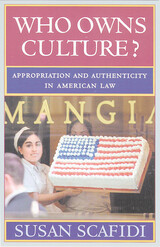 Who Owns Culture?: Appropriation and Authenticity in American Law
Scafidi, Susan
Rutgers University Press, 2005 It is not uncommon for white suburban youths to perform rap music, for New York fashion designers to ransack the world's closets for inspiration, or for Euro-American authors to adopt the voice of a geisha or shaman. But who really owns these art forms? Is it the community in which they were originally generated, or the culture that has absorbed them?
While claims of authenticity or quality may prompt some consumers to seek cultural products at their source, the communities of origin are generally unable to exclude copyists through legal action. Like other works of unincorporated group authorship, cultural products lack protection under our system of intellectual property law. But is this legal vacuum an injustice, the lifeblood of American culture, a historical oversight, a result of administrative incapacity, or all of the above?
Who Owns Culture? offers the first comprehensive analysis of cultural authorship and appropriation within American law. From indigenous art to Linux, Susan Scafidi takes the reader on a tour of the no-man's-land between law and culture, pausing to ask: What prompts us to offer legal protection to works of literature, but not folklore? What does it mean for a creation to belong to a community, especially a diffuse or fractured one? And is our national culture the product of Yankee ingenuity or cultural kleptomania?
Providing new insights to communal authorship, cultural appropriation, intellectual property law, and the formation of American culture, this innovative and accessible guide greatly enriches future legal understanding of cultural production.
 Who Owns Native Culture?
Michael F. Brown
Harvard University Press, 2004 The practical and artistic creations of native peoples permeate everyday life in settler nations, from the design elements on our clothing to the plot-lines of books we read to our children. Rarely, however, do native communities benefit materially from this use of their heritage, a situation that drives growing resistance to what some denounce as "cultural theft."
Who Owns Native Culture? documents the efforts of indigenous peoples to redefine heritage as a proprietary resource. Michael Brown takes readers into settings where native peoples defend what they consider their cultural property: a courtroom in Darwin, Australia, where an Aboriginal artist and a clan leader bring suit against a textile firm that infringes sacred art; archives and museums in the United States, where Indian tribes seek control over early photographs and sound recordings collected in their communities; and the Mexican state of Chiapas, site of a bioprospecting venture whose legitimacy is questioned by native-rights activists.
By focusing on the complexity of actual cases, Brown casts light on indigenous claims in diverse fields--religion, art, sacred places, and botanical knowledge. He finds both genuine injustice and, among advocates for native peoples, a troubling tendency to mimic the privatizing logic of major corporations.
The author proposes alternative strategies for defending the heritage of vulnerable native communities without blocking the open communication essential to the life of pluralist democracies. Who Owns Native Culture? is a lively, accessible introduction to questions of cultural ownership, group privacy, intellectual property, and the recovery of indigenous identities.
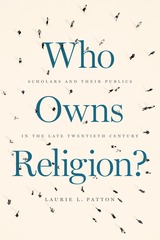 Who Owns Religion?: Scholars and Their Publics in the Late Twentieth Century
Laurie L. Patton
University of Chicago Press, 2019 Who Owns Religion? focuses on a period—the late 1980s through the 1990s—when scholars of religion were accused of scandalizing or denigrating the very communities they had imagined themselves honoring through their work. While controversies involving scholarly claims about religion are nothing new, this period saw an increase in vitriol that remains with us today. Authors of seemingly arcane studies on subjects like the origins of the idea of Mother Earth or the sexual dynamics of mysticism have been targets of hate mail and book-banning campaigns. As a result, scholars of religion have struggled to describe their own work to their various publics, and even to themselves.
Taking the reader through several compelling case studies, Patton identifies two trends of the ’80s and ’90s that fueled that rise: the growth of multicultural identity politics, which enabled a form of volatile public debate she terms “eruptive public space,” and the advent of the internet, which offered new ways for religious groups to read scholarship and respond publicly. These controversies, she shows, were also fundamentally about something new: the very rights of secular, Western scholarship to interpret religions at all.
Patton’s book holds out hope that scholars can find a space for their work between the university and the communities they study. Scholars of religion, she argues, have multiple masters and must move between them while writing histories and speaking about realities that not everyone may be interested in hearing.
 Who Owns the Dead?: The Science and Politics of Death at Ground Zero
Jay D. Aronson
Harvard University Press, 2016 After September 11, with New Yorkers reeling from the World Trade Center attack, Chief Medical Examiner Charles Hirsch proclaimed that his staff would do more than confirm the identity of the individuals who were killed. They would attempt to identify and return to families every human body part recovered from the site that was larger than a thumbnail. As Jay D. Aronson shows, delivering on that promise proved to be a monumentally difficult task. Only 293 bodies were found intact. The rest would be painstakingly collected in 21,900 bits and pieces scattered throughout the skyscrapers’ debris.
This massive effort—the most costly forensic investigation in U.S. history—was intended to provide families conclusive knowledge about the deaths of loved ones. But it was also undertaken to demonstrate that Americans were dramatically different from the terrorists who so callously disregarded the value of human life.
Bringing a new perspective to the worst terrorist attack in U.S. history, Who Owns the Dead? tells the story of the recovery, identification, and memorialization of the 2,753 people killed in Manhattan on 9/11. For a host of cultural and political reasons that Aronson unpacks, this process has generated endless debate, from contestation of the commercial redevelopment of the site to lingering controversies over the storage of unclaimed remains at the National 9/11 Memorial and Museum. The memory of the victims has also been used to justify military activities in the Middle East that have led to the deaths of an untold number of innocent civilians.
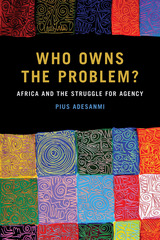 Who Owns the Problem?: Africa and the Struggle for Agency
Pius Adesanmi
Michigan State University Press, 2020 How may we conceptualize Africa in the driver’s seat of her own destiny in the twenty-first century? How practically may her cultures become the foundation and driving force of her innovation, development, and growth in the age of the global knowledge economy? How may the Africanist disciplines in the humanities, the social sciences, and the natural sciences be revamped to rise up to these challenges through new imaginaries of intersectional reflection? This book assembles lectures given by Pius Adesanmi that address these questions. Adesanmi sought to create an African world of signification in which verbal artistry interpellates performer and audience in a heuristic process of knowledge production. The narrative and delivery of his arguments, the antiphonal call and response, and the aspects of Yoruba oratory and verbal resources all combine with diction and borrowings from Nigerian popular culture to create a distinct African performative mode. This mode becomes a form of resistance, specifically against the pressure to conform to Western ideals of the packaging, standardization, and delivery of knowledge. Together, these short essays preserve the
committed and passionate voice of an African writer lost far too soon. Adesanmi urges his readers to commit themselves to Africa’s cultural agency.
 Who Owns the Sky?: Our Common Assets And The Future Of Capitalism
Peter Barnes
Island Press, 2001 Global warming has finally made clear the true costs of using our atmosphere as a giant sponge to soak up unwanted by-products of industrial activity. As nations, businesses, and citizens seek workable yet fair solutions for reducing carbon emissions, the question of who should pay -- and how -- looms large. Yet the surprising truth is that a system for protecting the atmosphere could be devised that would yield cash benefits to us all. In Who Owns the Sky?, visionary entrepreneur Peter Barnes redefines the debate about the costs and benefits of addressing climate change. He proposes a market-based institution called a Sky Trust that would set limits on carbon emissions and pay dividends to all of us, who collectively own the atmosphere as a commons. The Trust would be funded by requiring polluters to pay for the right to emit carbon dioxide, and managed by a non-governmental agency. Dividends would be paid annually, in much the same way that residents of Alaska today receive cash benefits from oil companies that drill in their state. Employing the same spirit of innovation that brought millions of dollars to the nonprofit sector through his company Working Assets, Barnes sets forth a practical new approach to protecting our shared inheritance -- not only the atmosphere, but water, forests, and other life-sustaining and economically valuable common resources. He shows how we can use markets and property rights to preserve and share the vast wealth around us, allowing us not only to profit from it, but to pass it on, undiminished, to future generations. Who Owns the Sky? is a remarkable look at the future of our economy, one in which we can retain capitalism's virtues while mitigating its vices. Peter Barnes draws on his personal experience as a successful entrepreneur to offer viable solutions to some of our most pressing environmental and social concerns.
 Who Owns the Sky?: The Struggle to Control Airspace from the Wright Brothers On
Stuart Banner
Harvard University Press, 2008 In the summer of 1900, a zeppelin stayed aloft for a full eighteen minutes above Lake Constance and mankind found itself at the edge of a new world. Where many saw hope and the dawn of another era, one man saw a legal conundrum. Charles C. Moore, an obscure New York lawyer, began an inquiry that Stuart Banner returns to over a century later: in the age of airplanes, who can lay claim to the heavens?
The debate that ensued in the early twentieth century among lawyers, aviators, and the general public acknowledged the crucial challenge new technologies posed to traditional concepts of property. It hinged on the resolution of a host of broader legal issues being vigorously debated that pertained to the fine line between private and public property. To what extent did the Constitution allow the property rights of the nation’s landowners to be abridged? Where did the common law of property originate and how applicable was it to new technologies? Where in the skies could the boundaries between the power of the federal government and the authority of the states be traced?
Who Owns the Sky is the first book to tell this forgotten story of elusive property. A collection of curious tales questioning the ownership of airspace and a reconstruction of a truly novel moment in the history of American law, Banner’s book reminds us of the powerful and reciprocal relationship between technological innovation and the law—in the past as well as in the present.
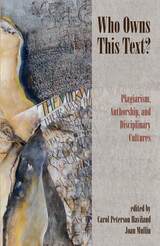 Who Owns This Text?: Plagiarism, Authorship, and Disciplinary Cultures
Carol Peterson Haviland and Joan A. Mullin
Utah State University Press, 2008 Carol Haviland, Joan Mullin, and their collaborators report on a three-year interdisciplinary interview project on the subject of plagiarism, authorship, and “property,” and how these are conceived across different fields. The study investigated seven different academic fields to discover disciplinary conceptions of what types of scholarly production count as “owned.”
Less a research report than a conversation, the book offers a wide range of ideas, and the chapters here will provoke discussion on scholarly practice relating to intellectual property, plagiarism, and authorship---and to how these matters are conveyed to students. Although these authors find a good deal of consensus in regard to the ethical issues of plagiarism, they document a surprising variety of practice on the subject of what ownership looks like from one discipline to another. And they discover that students are not often instructed in the conventions of their major field.
 Who Owns War?: The State and the Role of Non-State (Armed) Actors in Modern Warfare
Monica den Boer
Leiden University Press, 2026 This book provides a critical assessment of the broadly held view that states ‘own’ war. The central theme of the book is that the persistence of non-state actors in historical as well as contemporary conflicts challenges this narrative. It takes a multidisciplinary approach to address a host of questions concerning the role of non-state actors, both armed and unarmed, in conflict and their relationship with states. Recurring themes are issues of loyalty, accountability and effectiveness. Part I is subdivided into two separate themes. The first is the use of civilians in war from a legal and military operational perspective, the second the question of loyalty and accountability of the private sector. Part II considers the cases of several non-state armed actors from the past and the present, showcasing the variety of actors and roles they play. Together, the contributions to this book provide an important new perspective on the role of non-state (armed) actors in war.
 Who Owns War?: The State and the Role of Non-State (Armed) Actors in Modern Warfare
Monica den Boer
Leiden University Press, 2026 This book provides a critical assessment of the broadly held view that states ‘own’ war. The central theme of the book is that the persistence of non-state actors in historical as well as contemporary conflicts challenges this narrative. It takes a multidisciplinary approach to address a host of questions concerning the role of non-state actors, both armed and unarmed, in conflict and their relationship with states. Recurring themes are issues of loyalty, accountability and effectiveness. Part I is subdivided into two separate themes. The first is the use of civilians in war from a legal and military operational perspective, the second the question of loyalty and accountability of the private sector. Part II considers the cases of several non-state armed actors from the past and the present, showcasing the variety of actors and roles they play. Together, the contributions to this book provide an important new perspective on the role of non-state (armed) actors in war.
 Who Pays for Car Accidents?: The Fault versus No-Fault Insurance Debate
Jerry J. Phillips and Stephen Chippendale
Georgetown University Press, 2002 In this new volume, two lawyers debate which kind of automobile insurance is the best, no-fault or tort liability. This book presents in one place all the legal, political, historical, and financial arguments about the two types of auto insurance. Under the fault system currently used by thirty-seven states, tort law provides that the party at fault in the accident pays the full damages of accident victims. Jerry J. Phillips favors this system, arguing that it allows for fair compensation to the injured and deters drivers from dangerous behavior on the road. Stephen Chippendale counters this claim with the argument that tort-law based insurance combines high cost and low benefits, and that those who truly profit from it are the lawyers representing injured clients, while their claims clog up the court system. A better solution, he proposes, would be "Auto Choice," a plan under which consumers would choose whether or not they wished to be eligible for damages from pain and suffering. With civility and respect, these two legal scholars present thoughtful and thorough arguments on both sides of the debate, giving readers a balanced view of an issue that affects nearly every American. It will be of particular value to those in the fields of law, policy, and insurance.
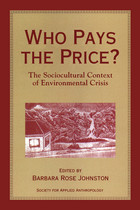 Who Pays the Price?: The Sociocultural Context Of Environmental Crisis
Edited by Barbara R. Johnston
Island Press, 1994 Drawing from a Society for Applied Anthropology study on human rights and the environment, Who Pays the Price? provides a detailed look at the human experience of environmental crisis. The issues examined span the globe -- loss of land and access to critical resources; contamination of air, water and soil; exposure to radiation, toxic chemicals, and other hazardous wastes. Topics considered in-depth include: - human rights and environmental degradation
- nation-state struggles over indigenous rights
- rights abuse accompanying resource extraction, weapons production, and tourism development
- environmental racism, gender bias, and multinational industry double standards
- social justice environmentalism
The book incorporates material from a wide range of economic and geographic contexts, including case studies from China, Russia, Latin America, the United States, Canada, Africa, and the South Pacific.
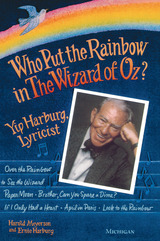 Who Put the Rainbow in The Wizard of Oz?: Yip Harburg, Lyricist
Harold Meyerson and Ernie Harburg
University of Michigan Press, 1995 ". . . required reading for anyone interested in the great American songs."-New York Times Book Review
Many of us can sing along with Dorothy when she imagines a place "Over the Rainbow." And we all remember the Depression-era classic "Brother, Can You Spare a Dime?" But very few can name the man who put the words to these celebrated hallmarks of American music- Yip Harburg. Five hundred songs spanning a fifty-year career bear witness to the brilliance of this until-now obscure figure.
Plunge into this scrupulously documented volume and discover how Harburg, once a poet of light verse, played a major role in the transformation of the Broadway revue into the sophisticated musical of the 1940s and 1950s. With extensive and exclusive interviews and lyrical analysis, the authors capture Harburg's wit, distinctive voice, and creative and collaborative methods.
Inquiry into Harburg's Jewish, New York City roots, apprenticeship in his craft, and involvement in the radical politics of the 1930s- he was blacklisted in the 1950s- puts into context the seemingly irreconcilable skepticism and optimism that contoured this lyrical genius's life and work.
Harold Meyerson is Executive Editor and chief political columnist, L.A. Weekly, and is on the editorial board of Dissent. Ernie Harburg is a social psychologist and epidemiologist at the University of Michigan, coauthor (with Bernard Rosenberg) of The Broadway Musical: Collaboration in Commerce and Art, and Yip Harburg's son.
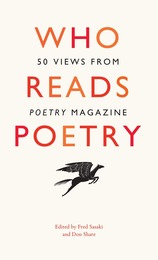 Who Reads Poetry: 50 Views from “Poetry” Magazine
Edited by Fred Sasaki and Don Share
University of Chicago Press, 2017 Who reads poetry? We know that poets do, but what about the rest of us? When and why do we turn to verse? Seeking the answer, Poetry magazine since 2005 has published a column called “The View From Here,” which has invited readers “from outside the world of poetry” to describe what has drawn them to poetry. Over the years, the incredibly diverse set of contributors have included philosophers, journalists, musicians, and artists, as well as doctors and soldiers, an iron-worker, an anthropologist, and an economist. This collection brings together fifty compelling pieces, which are in turns surprising, provocative, touching, and funny.
In one essay, musician Neko Case calls poetry “a delicate, pretty lady with a candy exoskeleton on the outside of her crepe-paper dress.” In another, anthropologist Helen Fisher turns to poetry while researching the effects of love on the brain, “As other anthropologists have studied fossils, arrowheads, or pot shards to understand human thought, I studied poetry. . . . I wasn’t disappointed: everywhere poets have described the emotional fallout produced by the brain’s eruptions.” Even film critic Roger Ebert memorized the poetry of e. e. cummings, and the rapper Rhymefest attests here to the self-actualizing power of poems: “Words can create worlds, and I’ve discovered that poetry can not only be read but also lived out. My life is a poem.” Music critic Alex Ross tells us that he keeps a paperback of The Palm at the End of the Mind by Wallace Stevens on his desk next to other, more utilitarian books like a German dictionary, a King James Bible, and a Macintosh troubleshooting manual.
Who Reads Poetry offers a truly unique and broad selection of perspectives and reflections, proving that poetry can be read by everyone. No matter what you’re seeking, you can find it within the lines of a poem.
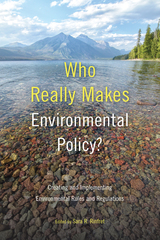 Who Really Makes Environmental Policy?: Creating and Implementing Environmental Rules and Regulations
Edited by Sara R. Rinfret
Temple University Press, 2021 The United States Congress appears to be in perpetual gridlock on environmental policy, notes Sara Rinfret, editor of the significant collection, Who Really Makes Environmental Policy? As she and her contributors explain, however, most environmental policy is not made in the halls of Congress. Instead, it is created by agency experts in federal environmental agencies and it is implemented at the state level. These individuals have been delegated the authority to interpret vague congressional legislation and write rules—and these rules carry the same weight as congressional law. Who Really Makes Environmental Policy? brings together top scholars to provide an explanation of rulemaking processes and regulatory policy, and to show why this context is important for U.S. environmental policy. Illustrative case studies about oil and gas regulations in Colorado and the regulation of coal ash disposal in southeastern states apply theory to practice. Ultimately, the essays in this volume advance our understanding of how U.S. environmental policy is made and why understanding regulatory policy matters for its future.
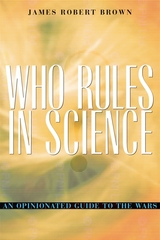 Who Rules in Science?: An Opinionated Guide to the Wars
James Robert Brown
Harvard University Press, 2001 What if something as seemingly academic as the so-called science wars were to determine how we live?
This eye-opening book reveals how little we've understood about the ongoing pitched battles between the sciences and the humanities--and how much may be at stake. James Brown's starting point is C. P. Snow's famous book, Two Cultures and the Scientific Revolution, which set the terms for the current debates. But that little book did much more than identify two new, opposing cultures, Brown contends: It also claimed that scientists are better qualified than nonscientists to solve political and social problems. In short, the true significance of Snow's treatise was its focus on the question of who should rule--a question that remains vexing, pressing, and politically explosive today.
In Who Rules in Science? Brown takes us through the various engagements in the science wars--from the infamous "Sokal affair" to angry confrontations over the nature of evidence, the possibility of objectivity, and the methods of science--to show how the contested terrain may be science, but the prize is political: Whoever wins the science wars will have an unprecedented influence on how we are governed.
Brown provides the most comprehensive and balanced assessment yet of the science wars. He separates the good arguments from the bad, and exposes the underlying message: Science and social justice are inextricably linked. His book is essential reading if we are to understand the forces making and remaking our world.
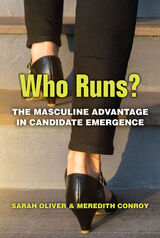 Who Runs?: The Masculine Advantage in Candidate Emergence
Sarah Oliver and Meredith Conroy
University of Michigan Press, 2020 To explain women’s underrepresentation in American politics, researchers have directed their attention to differences between men and women, especially during the candidate emergence process, which includes recruitment, perception of qualifications, and political ambition. Although these previous analyses have shown that consistent dissimilarities likely explain why men outnumber women in government, they have overlooked a more explicit role for gender (masculinity and femininity) in explanations of candidate emergence variation.
Meredith Conroy and Sarah Oliver focus on the candidate emergence process (recruitment, perceived qualifications, and ambition), and investigate the affects of individuals’ gender personality on these variables to improve theories of women’s underrepresentation in government. They argue that since politics and masculinity are congruent, we should observe more precise variation in the candidate emergence process along gender differences, than along sex differences in isolation. Individuals who are more masculine will be more likely to be recruited, perceive of themselves as qualified, and express political ambition, than less masculine individuals. This differs from studies that look at sex differences, because it accepts that some women defy gender norms and break into politics. By including a measure of gender personality we can more fully grapple with women’s progress in American politics, and consider whether this progress rests on masculine behaviors and attributes. Who Runs? The Masculine Advantage in Candidate Emergence explores this possibility and the potential ramifications.
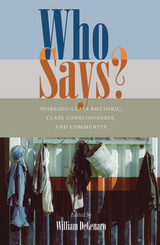 Who Says?: Working-Class Rhetoric, Class Consciousness, and Community
William DeGenaro
University of Pittsburgh Press, 2007 In Who Says?, scholars of rhetoric, composition, and communications seek to revise the elitist “rhetorical tradition” by analyzing diverse topics such as settlement house movements and hip-hop culture to uncover how communities use discourse to construct working-class identity. The contributors examine the language of workers at a concrete pour, depictions of long-haul truckers, a comic book series published by the CIO, the transgressive “fat” bodies of Roseanne and Anna Nicole Smith, and even reality television to provide rich insights into working-class rhetorics. The chapters identify working-class tropes and discursive strategies, and connect working-class identity to issues of race, gender, and sexuality. Using a variety of approaches including ethnography, research in historic archives, and analysis of case studies, Who Says? assembles an original and comprehensive collection that is accessible to both students and scholars of class studies and rhetoric.
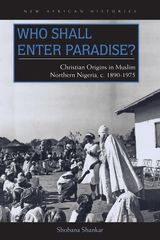 Who Shall Enter Paradise?: Christian Origins in Muslim Northern Nigeria, c. 1890–1975
Shobana Shankar
Ohio University Press, 2014 Who Shall Enter Paradise? recounts in detail the history of Christian-Muslim engagement in a core area of sub-Saharan Africa’s most populous nation, home to roughly equal numbers of Christians and Muslims. It is a region today beset by religious violence, in the course of which history has often been told in overly simplified or highly partisan terms. This book reexamines conversion and religious identification not as fixed phenomena, but as experiences shaped through cross-cultural encounters, experimentation, collaboration, protest, and sympathy. Shobana Shankar relates how Christian missions and African converts transformed religious practices and politics in Muslim Northern Nigeria during the colonial and early postcolonial periods. Although the British colonial authorities prohibited Christian evangelism in Muslim areas and circumscribed missionary activities, a combination of factors—including Mahdist insurrection, the abolition of slavery, migrant labor, and women’s evangelism—brought new converts to the faith. By the 1930s, however, this organic growth of Christianity in the north had given way to an institutionalized culture based around medical facilities established in the Hausa emirates. The end of World War II brought an influx of demobilized soldiers, who integrated themselves into the local Christian communities and reinvigorated the practice of lay evangelism. In the era of independence, Muslim politicians consolidated their power by adopting many of the methods of missionaries and evangelists. In the process, many Christian men and formerly non-Muslim communities converted to Islam. A vital part of Northern Nigerian Christianity all but vanished, becoming a religion of “outsiders.”
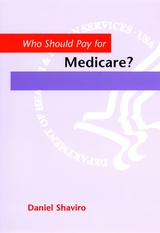 Who Should Pay for Medicare?
Daniel Shaviro
University of Chicago Press, 2004 Good news first? The good news is that Americans today are living longer, in part because of continual advances in healthcare. But the bad news is that with our aging population larger than ever before, nothing is being done to ensure that we can continue to afford the increasing costs of care. How Medicare—with the Bush administration's reforms and a slumping economy—will meet the needs of its recipients without adequate financing is among the most pressing issues facing this country today.
Daniel N. Shaviro sees the future of our national healthcare system as hinging on the issue of funding. The author of books on the economic issues surrounding Social Security and budget deficits, Shaviro is a skilled guide for anyone seeking to understand the financial aspects of government programs. Who Should Pay for Medicare? offers an accessible overview of how Medicare operates as a fiscal system. Discussions of Medicare reform often focus on the expansion of program treatment choices but not on the question of who should pay for Medicare's services. Shaviro's book addresses this critical issue, examining the underanalyzed dynamics of the significant funding gap facing Medicare. He gives a balanced, nonpartisan evaluation of various reform alternatives—considering everything from the creation of new benefits in this fiscal crunch to tax cuts to the demographic pressures we face and the issues this will raise when future generations have to pay for the care of today's seniors.
Who Should Pay for Medicare? speaks to seniors who feel entitled to expanded coverage, younger people who wonder what to expect from the government when they retire, and Washington policy makers who need an indispensable guidebook to Medicare's future.
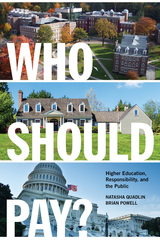 Who Should Pay?: Higher Education, Responsibility, and the Public
Natasha Quadlin
Russell Sage Foundation, 2022 Americans now obtain college degrees at a higher rate than at any time in recent decades in the hopes of improving their career prospects. At the same time, the rising costs of an undergraduate education have increased dramatically, forcing students and families to take out often unmanageable levels of student debt. The cumulative amount of student debt reached nearly $1.5 trillion in 2017, and calls for student loan forgiveness have gained momentum. Yet public policy to address college affordability has been mixed. While some policymakers support more public funding to broaden educational access, others oppose this expansion. Noting that public opinion often shapes public policy, sociologists Natasha Quadlin and Brian Powell examine public opinion on who should shoulder the increasing costs of higher education and why.
Who Should Pay? draws on a decade’s worth of public opinion surveys analyzing public attitudes about whether parents, students, or the government should be primarily responsible for funding higher education. Quadlin and Powell find that between 2010 and 2019, public opinion has shifted dramatically in favor of more government funding. In 2010, Americans overwhelming believed that parents and students were responsible for the costs of higher education. Less than a decade later, the percentage of Americans who believed that federal or state/local government should be the primary financial contributor has more than doubled. The authors contend that the rapidity of this change may be due to the effects of the 2008 financial crisis and the growing awareness of the social and economic costs of high levels of student debt. Quadlin and Powell also find increased public endorsement of shared responsibility between individuals and the government in paying for higher education. The authors additionally examine attitudes on the accessibility of college for all, whether higher education at public universities should be free, and whether college is worth the costs.
Quadlin and Powell also explore why Americans hold these beliefs. They identify individualistic and collectivist world views that shape public perspectives on the questions of funding, accessibility, and worthiness of college. Those with more individualistic orientations believed parents and students should pay for college, and that if students want to attend college, then they should work hard and find ways to achieve their goals. Those with collectivist orientations believed in a model of shared responsibility – one in which the government takes a greater level of responsibility for funding education while acknowledging the social and economic barriers to obtaining a college degree for many students. The authors find that these belief systems differ among socio-demographic groups and that bias – sometimes unconscious and sometimes deliberate – regarding race and class affects responses from both individualistic and collectivist-oriented participants.
Public opinion is typically very slow to change. Yet Who Should Pay? provides an illuminating account of just how quickly public opinion has shifted regarding the responsibility of paying for a college education and its implications for future generations of students.
Who Sings the Nation-State?: Language, Politics, Belonging
Judith Butler and Gayatri Chakravorty Spivak
Seagull Books, 2007 This spirited and engaging conversation between two of America’s foremost and influential cultural critics and international theorists of the last decade explores what both Enlightenment and contemporary philosophers have to say about the idea of the nation-state, who exercises power in today’s world, whether there is such a thing as a right to rights, and the past, present, and future of the state in a time of globalization. In a world of migration and shifting allegiances caused by cultural, economic, military, and climatic change, the nation-state, as Judith Butler and Gayatri Chakravorty Spivak argue, has become a more provisional place—and its inhabitants, more stateless.
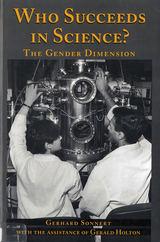 Who Succeeds in Science?: The Gender Dilemma
Gerald Holton and Gerhard Sonnert
Rutgers University Press, 1995 Why don’t more women become scientists? And why do those who do become scientists often face more difficulties than their male counterparts? Every year, about a quarter of a million young men and women in the United States receive their first academic degree in science, mathematics, or engineering. A small fraction will eventually become research scientists. But many who start out with that goal fail to reach it––for reasons that may have less to do with their scientific ability than with their gender. Drawing on a wealth of information (699 questionnaires and 200 interviews) from men and women who gave every promise of scientific achievement, Gerhard Sonnert and Gerald Holton illuminate the partly gender-driven dynamics of “the leaky scientific pipeline.” At the heart of this book are gripping personal life stories of ten women and ten men: half became highly successful scientists, the rest left research science. In their own voices, they talk candidly about their career paths, the obstacles and assists they encountered, the difficulties and rewards of attempting to combine a family life with a science career. This highly readable analysis of the gender dimension in scientific careers––and its clear-headed advice––will be of great interest to everyone considering a career in science as well as to teachers, parents, and active scientists. Academics in sociology of science and gender studies as well as decision-makers in the areas of human resources and science policy will also welcome its discussions of general issues and policy recommendations.
 Who Tells Your Story: On the Construction of Public Memory
Sanford Levinson, editor
Duke University Press, 2026 Who Tells Your Story gathers contemporary analyses of monument and commemoration controversies from across the United States and the world. Sanford Levinson and the contributors in this volume ask whose stories get to be told, who gets to tell them, what happens when monuments disappear, and how these memorials impact national narratives. From the removal of Confederate statutes in the United States and those of Lenin in Ukraine to the efficacy of national holidays in furthering the causes they claim to celebrate, these essays dissect how the collaborative process of memorialization brings purported intention, private agenda, and final outcome into constant friction with each other. Who Tells Your Story is an accessible and provoking examination on public memory and what forces shape it.
Contributors. Zachary Bray, Deborah Gerhardt, Emily Greenfield, Randall Kennedy, Larysa Kulyvas, Sanford Levinson, Kimberly Probolus, Kermit Roosevelt III, Anna Saunders, Richard C. Shragger, Bruce Scates, Agata Tatarenko, Aleksandra Kucynskak-Zonik
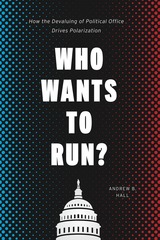 Who Wants to Run?: How the Devaluing of Political Office Drives Polarization
Andrew B. Hall
University of Chicago Press, 2019 The growing ideological gulf between Democrats and Republicans is one of the biggest issues in American politics today. Our legislatures, composed of members from two sharply disagreeing parties, are struggling to function as the founders intended them to. If we want to reduce the ideological gulf in our legislatures, we must first understand what has caused it to widen so much over the past forty years.
Andrew B. Hall argues that we have missed one of the most important reasons for this ideological gulf: the increasing reluctance of moderate citizens to run for office. While political scientists, journalists, and pundits have largely focused on voters, worried that they may be too partisan, too uninformed to vote for moderate candidates, or simply too extreme in their own political views, Hall argues that our political system discourages moderate candidates from seeking office in the first place. Running for office has rarely been harder than it is in America today, and the costs dissuade moderates more than extremists. Candidates have to wage ceaseless campaigns, dialing for dollars for most of their waking hours while enduring relentless news and social media coverage. When moderate candidates are unwilling to run, voters do not even have the opportunity to send them to office. To understand what is wrong with our legislatures, then, we need to ask ourselves the question: who wants to run? If we want more moderate legislators, we need to make them a better job offer.
Who Were the Babylonians?
Bill T. Arnold
SBL Press, 2004 This engaging and informative introduction to the the Babylonians were important not only because of their many historical contacts with ancient Israel but because they and their predecessors, the Sumerians, established the philosophical and social infrastructure for most of Western Asia for nearly two millennia. Beginning and advanced students as well as biblical scholars and interested nonspecialists will read this introduction to the history and culture of the Babylonians with interest and profit.
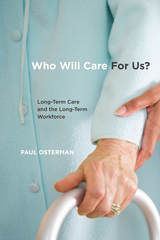 Who Will Care For Us?: Long-Term Care and the Long-Term Workforce
Paul Osterman
Russell Sage Foundation, 2017 The number of elderly and disabled adults who require assistance with day-to-day activities is expected to double over the next twenty-five years. As a result, direct care workers such as home care aides and certified nursing assistants (CNAs) will become essential to many more families. Yet these workers tend to be low-paid, poorly trained, and receive little respect. Is such a workforce capable of addressing the needs of our aging population? In Who Will Care for Us? economist Paul Osterman assesses the challenges facing the long-term care industry. He presents an innovative policy agenda that reconceives direct care workers’ work roles and would improve both the quality of their jobs and the quality of elder care.
Using national surveys, administrative data, and nearly 120 original interviews with workers, employers, advocates, and policymakers, Osterman finds that direct care workers are marginalized and often invisible in the health care system. While doctors and families alike agree that good home care aides and CNAs are crucial to the well-being of their patients, the workers report poverty-level wages, erratic schedules, exclusion from care teams, and frequent incidences of physical injury on the job. Direct care workers are also highly constrained by policies that specify what they are allowed to do on the job, and in some states are even prevented from simple tasks such as administering eye drops.
Osterman concludes that broadening the scope of care workers’ duties will simultaneously boost the quality of care for patients and lead to better jobs and higher wages. He proposes integrating home care aides and CNAs into larger medical teams and training them as “health coaches” who educate patients on concerns such as managing chronic conditions and transitioning out of hospitals. Osterman shows that restructuring direct care workers’ jobs, and providing the appropriate training, could lower health spending in the long term by reducing unnecessary emergency room and hospital visits, limiting the use of nursing homes, and lowering the rate of turnover among care workers.
As the Baby Boom generation ages, Who Will Care for Us? demonstrates the importance of restructuring the long-term care industry and establishing a new relationship between direct care workers, patients, and the medical system.
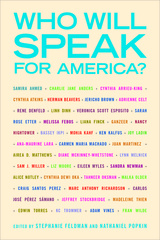 Who Will Speak for America?
Stephanie Feldman and Nathaniel Popkin
Temple University Press, 2018 The editors and contributors to Who Will Speak for America? are passionate and justifiably angry voices providing a literary response to today’s political crisis. Inspired by and drawing from the work of writers who participated in nationwide Writers Resist events in January 2017, this volume provides a collection of poems, stories, essays, and cartoons that wrestle with the meaning of America and American identity. The contributions—from established figures including Eileen Myles, Melissa Febos, Jericho Brown, and Madeleine Thien, as well as rising new voices, such as Carmen Maria Machado, Ganzeer, and Liana Finck—confront a country beset by racial injustice, poverty, misogyny, and violence. Contributions reflect on the terror of the first days after the 2016 Presidential election, but range well beyond it to interrogate the past and imagine possible American futures. Who Will Speak for America? inspires readers by emphasizing the power of patience, organizing, resilience and community. These moving works advance the conversation the American colonists began, and that generations of activists, in their efforts to perfect our union, have elevated and amplified. All royalties will benefit the Southern Poverty Law Center.
 Who Will Teach?: Policies That Matter
Richard J. Murnane, Judith D. Singer, John B. Willett, James J. Kemple, and Randall J. Olsen
Harvard University Press, 1991 Will America find enough good teachers to staff its public schools? How can we ensure that all our children will be taught by skilled professionals? The policies that determine who teaches today are a confusing and often conflicting array that includes tougher licensing requirements, higher salaries, mandatory master's degrees, merit pay, and alternative routes to certification. Who Will Teach? examines these policies and separates those that work from those that backfire.
The authors present an intriguing portrait of America's teachers and reveal who they are, who they have been, and who they will be. Using innovative statistical methods to track the professional lives of more than 50,000 college graduates, the book describes, in many cases for the first time, just how prospective, current, and former teachers respond to the incentives and disincentives they face. The authors, a group of noted educators, economists, and statisticians, find cause for serious concern. Few academically talented college graduates even try teaching, and many of those who do leave quickly, never to return. Current licensing requirements stifle innovation in training and dissuade many potentially talented teachers at the outset.
But Who Will Teach? shows that we can reverse these trends if we get the incentives right. Although better salaries are essential, especially for new teachers, money is not enough. Potential teachers should be offered alternative paths into the classroom. School districts should improve their recruiting strategies. Licensing criteria should assess teaching skills, not just academic achievement and number of courses completed. The authors offer a promising strategy based on high standards and substantial rewards.
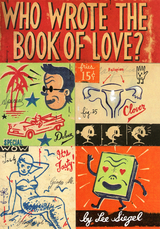 Who Wrote the Book of Love?
Lee Siegel
University of Chicago Press, 2005 Who Wrote the Book of Love? is acclaimed novelist Lee Siegel's comedic chronicle of the sexual life of an American boy in Southern California in the 1950s. Starting at the beginning of the decade, in the year that Stalin announced that the Soviet Union had developed an atomic bomb, the book opens with a child's first memory of himself. Closing at the end of the decade, when Pat Boone's guide to dating, 'Twixt Twelve and Twenty, topped the bestseller list, the book culminates just moments before the boy experiences for the first time what he had learned from a book read to him by his mother was called "coitus or sexual intercourse or sometimes, less formally, just making love." Between the initial overwhelmingly erotic recollection and the final climactic moment, all is sex—beguiling and intractable, naughty and sweet. Who Wrote the Book of Love? is about the subversive sexual imaginations of children. And, as such, it is about the origins of love.
Vignettes from the author's childhood provide the material for the construction of what is at once comic fiction, imaginative historical reportage, and an ironically nostalgic confession. The book evokes the tone and tempo of a decade during which America was blatantly happy, wholesome, and confident, and yet, at the same time, deeply fearful of communism and nuclear holocaust. Siegel recounts both the cheer and the paranoia of the period and the ways in which those sentiments informed wondering about sex and falling in love.
"Part of my plan," Mark Twain wrote in The Adventures of Tom Sawyer, "has been to try to pleasantly remind adults of what they once were themselves, and of how they felt and thought and talked." With the same motive, Lee Siegel has written what Twain might have composed had he been Jewish, raised in Beverly Hills in the 1950s, and joyously obsessed with sex and love.
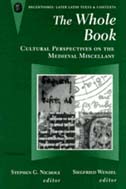 The Whole Book: Cultural Perspectives on the Medieval Miscellany
Stephen G. Nichols and Siegfried Wenzel, Editors
University of Michigan Press, 1996 In the last few decades it has become abundantly clear how important is the "archaeology of the manuscript-book" in literary and textual scholarship. This method offers essential contexts for an editor's understanding of a manuscript, and helps to set the manuscript in the historical matrix in which the work was first brought out and understood.
This group of papers, edited by two well-known scholars of the medieval world, offers both general and particular approaches to the issues surrounding manuscripts produced in the medieval habit of "miscellany," works of seemingly diverse natures bound together into one volume. Julia Boffey investigates how certain poetical miscellanies came to be assembled, for example, while Sylvia Huot suggests that the miscellany had many different sorts of function and significance. Siegfried Wenzel considers a taxonomy of such collections, and A. S. G. Edwards' paper considers Bodleian Selden B.24 as an example of how the notions of canon, authorship, and attribution might come into play. Ann Matter's final chapter offers the notion that what we call "miscellanies" are likely to have an internal logic that we have been trained to miss, but can come to understand. Other contributors are Ralph Hanna III, Georg Knauer, Stephen Nichols, James J. O'Donnell, and Barbara A. Shailor.
Because The Whole Book deals not only with the content of miscellanies but also with contemporary literary principles, this volume will be of interest to a wide circle of literary critics and historians, as well as to students of the survival of literature and of cultural values.
Stephen G. Nichols is James M. Beall Professor of French and Chair of the Department of French, The Johns Hopkins University. Siegfried Wenzel is Professor of English, University of Pennsylvania.
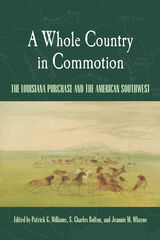 A Whole Country in Commotion: The Louisiana Purchase and the American Southwest
Patrick G. Williams
University of Arkansas Press, 2005 Bringing together the work of prominent scholars and rising stars in southern, western, and Indian history, A Whole Country in Commotion explores lesser-known aspects of one of the better-known episodes in U.S. history. While the purchase has been seen as a great boon for the United States, doubling the size of the new nation and securing American navigation on the Mississippi River, it also brought turmoil to many. Looking past the triumphal aspects of the purchase, this book examines the “negotiations among peoples, nations and empires that preceded and followed the actual transfer of territory.” Its nine essays highlight the “commotion” the purchase stirred up—among nations, among Louisiana residents and newcomers, even among those who remained east of the Mississippi. Many of these essays look at the portion of the Louisiana territory that would become Arkansas to illustrate the profound impact of the purchase on the diverse populations of the American Southwest. Others explore the woeful commotion brought to many thousands of lives as Jefferson’s “noble bargain” set the stage for the forced migration of native and African Americans from the east to the west of the Mississippi.
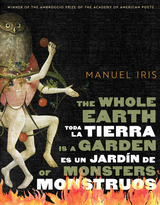 The Whole Earth Is a Garden of Monsters / Toda la tierra es un jardín de monstruos
Manuel Iris
University of Arizona Press, 2026 Winner of the 2025 Ambroggio Prize
This award-winning bilingual collection intertwines the lives of a Renaissance painter and a modern migrant worker, offering a fresh perspective on art and migration.
In this highly imaginative work, the lives of the northern Renaissance painter Hieronymus Bosch (1450–1516) and an imagined contemporary migrant worker named Juan Coyoc, later known as Juan Domínguez, run in parallel as they mirror each other across languages, time, and continents.
By comparing and at times intertwining these two poetic narratives, the book explores themes of art, migration, narco-violence, family, spirituality, and the idea that every human being represents all humanity at any moment in history. Both Hieronymus Bosch and Juan Domínguez become relatable and intimate figures, part of our own story.
Written in simple, sharp language, the book employs surprising imagery and a novel structure to blur the boundaries between reality and fiction, while examining the intricacies of the human condition—from the life of Saint Anthony to the violent acts of narcos across Central America and the U.S.-Mexico border. With formal sophistication and philosophical depth, this work enriches the tradition of poetry about both migration and art, contributing to the literary heritage of Mexico and the United States over the past several decades.
Whole Faith: The Catholic Ideal of Emilia Pardo Bazan
Denise DuPont
Catholic University of America Press, 2018 Emilia Pardo Bazán (1851-1921), the most important female author of Spain’s nineteenth century, was a prolific writer of novels, short stories, critical articles, chronicles of modern life, and plays. Active in the age of Catholic social teaching inaugura
 The Whole Family: A Novel by Twelve Authors
William Dean Howells and Others
Duke University Press, 2001 One of the most fascinating experiments in American literature resulted in The Whole Family. This unusual composite novel numbers among its twelve authors such luminaries as Henry James, William Dean Howells, Mary E. Wilkins Freeman, and Elizabeth Stuart Phelps. The idea for this collaborative venture originated with Howells in 1906. Under the guidance of Elizabeth Jordan, the energetic editor of Harper’s Bazar (as it was then known), each of the authors was invited to write a successive chapter in a story Howells envisioned as a definitive depiction of American family life. But the original plan underwent a dramatic reversal with a controversial chapter by Freeman. From that point, The Whole Family became a more involved story of family misunderstandings and rivalries that actually mirrored the rivalries of the contributors themselves. Alfred Bendixen’s lively introduction offers the first accurate and complete account of the creation of this remarkable novel—uncovering new facts and revealing the turmoil out of which it was shaped. June Howard’s foreword provides an additional contextual and critical perspective. The Whole Family will be enjoyed by admirers of American literature at the start of the twenty-first century as much as it was by those at the beginning of the twentieth. In addition to delightful plot twists and characters, it offers a remarkable view into the ways in which family life has—and has not—changed over the course of a century. Full list of authors. Mary R. Shipman Andrews, John Kendrick Bangs, Alice Brown, Mary Stewart Cutting, Mary E. Wilkins Freeman, William Dean Howells, Henry James, Elizabeth Jordan, Elizabeth Stuart Phelps, Henry van Dyke, Mary Heaton Vorse, Edith Wyatt
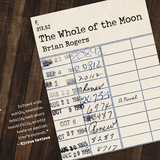 The Whole of the Moon: A Novel
Brian Rogers
University of Nevada Press, 2017 The Whole of the Moon consists of six crisscrossing narratives set along the old Route 66, from the Inland Empire to the terminus just off Sunset Boulevard. The stories span the years from the late 1950s to the present, and the characters are bound by a fact unknown to them: they have each checked out the same public library copy of The Great Gatsby.
An actor sits poolside waiting to hear whether he has been cast in a television pilot. Two kids ditch school in 1964 and go for a hike in the woods that turns dangerous. A woman named Dot remembers her husband who spent years working on a musical adaptation of The Great Gatsby. A young woman Felicity deals with the consequences of an unexpected pregnancy. Mike, a former high school star, attends an open tryout for the California Angels baseball team. And a boarding school teacher tells the story of his cousin, a social climber who has disappeared in the wake of a murder. These are the characters that populate The Whole of the Moon. Brian Rogers’ novel is about determination and failure and life in Southern California away from the red carpet.
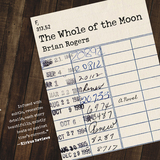 The Whole of the Moon: A Novel
Brian Rogers
University of Nevada Press, 2017 The Whole of the Moon consists of six crisscrossing narratives set along the old Route 66, from the Inland Empire to the terminus just off Sunset Boulevard. The stories span the years from the late 1950s to the present, and the characters are bound by a fact unknown to them: they have each checked out the same public library copy of The Great Gatsby.
An actor sits poolside waiting to hear whether he has been cast in a television pilot. Two kids ditch school in 1964 and go for a hike in the woods that turns dangerous. A woman named Dot remembers her husband who spent years working on a musical adaptation of The Great Gatsby. A young woman Felicity deals with the consequences of an unexpected pregnancy. Mike, a former high school star, attends an open tryout for the California Angels baseball team. And a boarding school teacher tells the story of his cousin, a social climber who has disappeared in the wake of a murder. These are the characters that populate The Whole of the Moon. Brian Rogers’ novel is about determination and failure and life in Southern California away from the red carpet.
The Whole Song: SELECTED POEMS
Vincent Ferrini
University of Illinois Press, 2004 With a voice emerging from class tensions, labor struggles, the Great Depression, and World War II, Vincent Ferrini lived as a people's poet crying out for an end to exploitation and organized greed. Radical Christian gnosis and the conviction that poetry should be more than a display of word-craft distinguished him from poets like T. S. Eliot, infusing his work with dynamic images of Christ as a fighter, a revolutionary, and a martyr in opposing the mighty for the sake of the poor.
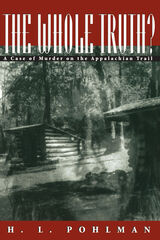 The Whole Truth?: A Case of Murder on the Appalachian Trail
H. L. Pohlman
University of Massachusetts Press, 1999 On May 13, 1988, Stephen Roy Carr, a so-called mountain man living in Michaux State Forest in south central Pennsylvania, shot two female hikers while they were making love at a campsite near the Appalachian Trail. Rebecca Wight died at the scene. Claudia Brenner, despite five bullet wounds, survived to testify against her attacker.
In this book, H. L. Pohlman reconstructs the dramatic story of this murder case and traces its disposition through the criminal justice system. Drawing on interviews with participants as well as court records, he closely examines competing interpretations of the evidence. Was the attack a hate crime? A sex crime? A class crime? At the same time, he shows how a broad range of substantive and procedural issues—from the rights of the accused to evaluation of potential mitigating circumstances—can influence the assessment of culpability in homicide cases.
The Whole World at Once: Stories
Erin Pringle
West Virginia University Press, 2017 The Whole World at Once is a collection of intense stories about the experience of loss. A soldier returns home from multiple tours only to begin planting landmines in the field behind his house; kids chase a ghost story up country roads only to become one themselves; one girl copes with the anniversary of her sister’s disappearance during the agricultural fair, while another girl searches for understanding after seeing the picture of a small boy washed onto a beach.
Dark, strange beauties, all of the stories in The Whole World at Once follow the lives of people grappling with what it means to live in a world with death.
Wholesale Commodity Prices in the United States, 1700-1861
Arthur H. Cole
Harvard University Press These volumes present a summary of data relative to commodity prices in various parts of the United States from the time for which data first became available down to the Civil War. They accordingly provide material for the study of commodity price movements—seasonal, cyclical, secular, and regional—for over a century and a half. As a source book the work will be of great value not only to students of the business cycle and of economic history but to social and political historians as well. The volumes represent the American phase of an international project financed by the Rockefeller Foundation and carried out under the auspices of the International Committee on Price History.
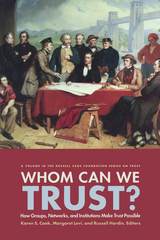 Whom Can We Trust?: How Groups, Networks, and Institutions Make Trust Possible
Karen S. Cook
Russell Sage Foundation, 2009 Conventional wisdom holds that trust is essential for cooperation between individuals and institutions—such as community organizations, banks, and local governments. Not necessarily so, according to editors Karen Cook, Margaret Levi, and Russell Hardin. Cooperation thrives under a variety of circum-stances. Whom Can We Trust? examines the conditions that promote or constrain trust and advances our understanding of how cooperation really works. From interpersonal and intergroup relations to large-scale organizations, Whom Can We Trust? uses empirical research to show that the need for trust and trustworthiness as prerequisites to cooperation varies widely. Part I addresses the sources of group-based trust. One chapter focuses on the assumption—versus the reality—of trust among coethnics in Uganda. Another examines the effects of social-network position on trust and trustworthiness in urban Ghana and rural Kenya. And a third demonstrates how cooperation evolves in groups where reciprocity is the social norm. Part II asks whether there is a causal relationship between institutions and feelings of trust in individuals. What does—and doesn't—promote trust between doctors and patients in a managed-care setting? How do poverty and mistrust figure into the relations between inner city residents and their local leaders? Part III reveals how institutions and networks create environments for trust and cooperation. Chapters in this section look at trust as credit-worthiness and the history of borrowing and lending in the Anglo-American commercial world; the influence of the perceived legitimacy of local courts in the Philippines on the trust relations between citizens and the government; and the key role of skepticism, not necessarily trust, in a well-developed democratic society. Whom Can We Trust? unravels the intertwined functions of trust and cooperation in diverse cultural, economic, and social settings. The book provides a bold new way of thinking about how trust develops, the real limitations of trust, and when trust may not even be necessary for forging cooperation. A Volume in the Russell Sage Foundation Series on Trust
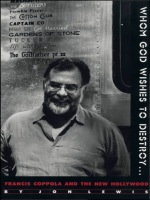 Whom God Wishes to Destroy . . .: Francis Coppola and the New Hollywood
Jon Lewis
Duke University Press, 1995 In March 1980 Francis Coppola purchased the dilapidated Hollywood General Studios facility with the hope and dream of creating a radically new kind of studio, one that would revolutionize filmmaking, challenge the established studio machinery, and, most importantly, allow him to make movies as he wished. With this event at the center of Whom God Wishes to Destroy, Jon Lewis offers a behind-the-scenes view of Coppola’s struggle—that of the industry’s best-known auteur—against the changing realities of the New Hollywood of the 1980s. Presenting a Hollywood history steeped in the trade news, rumor, and gossip that propel the industry, Lewis unfolds a lesson about power, ownership, and the role of the auteur in the American cinema. From before the success of The Godfather to the eventual triumph of Apocalypse Now, through the critical upheaval of the 1980s with movies like Rumble Fish, Hammett, Peggy Sue Got Married, to the 1990s and the making of Bram Stoker’s Dracula and Kenneth Branagh’s Frankenstein, Francis Coppola’s career becomes the lens through which Lewis examines the nature of making movies and doing business in Hollywood today.
 Whoop-up Country: The Canadian-American West, 1865-1885
Paul F. Sharp
University of Minnesota Press, 1955 Whoop-up Country was first published in 1955. Minnesota Archive Editions uses digital technology to make long-unavailable books once again accessible, and are published unaltered from the original University of Minnesota Press editions. In the frontier days before the railroads penetrated the western plains, the Whoop-Up Trail was a high road of adventure and commerce. It led Indians, traders, and cattlemen into a great interior market stretching northward from the Missouri River in Montana to the Bow River valley in the Canadian province of Alberta. From Fort Benton on the Great Muddy to Fort Macleod on the Oldman, the trail with the rowdy name wrote its history in whisky, guns, furs, and pioneer enterprise. But, as the Whoop-Up Trail faded away with the passing of the western frontier, people forgot about its existence and its part in the building of the West. Historians have largely overlooked this colorful chapter in the story of westward migration. Now Paul Sharp tells about the Whoop-Up country in vivid detail. By first describing the region geographically, he demonstrates an important point—that there was no natural boundary in this area between Canada and the United States. He then relates the economic, social, and political events that ultimately divided the territory between the two nations in fact as well as in name. The volume contains an excellent account of the beginnings of the Northwest Mounted Police. It provides a fresh viewpoint on the Indian problem by considering it impartially and as a whole, without the restricting and artificial limitations of national boundaries. Told by a perceptive and forceful writer, this is the story of the creation of two societies—Canadian and American—formed under similar circumstances yet developing very different political and cultural identities.
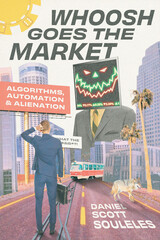 Whoosh Goes the Market: Algorithms, Automation, and Alienation
Daniel Scott Souleles
University of Chicago Press, 2024 A vivid, fast-paced inside look at financial markets, the people who work on them, and how technology is changing their world (and ours).
Markets are messy, and no one knows this better than traders who work tirelessly to predict what they will do next. In Whoosh Goes the Market, Daniel Scott Souleles takes us into the day-to-day experiences of a team at a large trading firm, revealing what it’s actually like to make and lose money on contemporary capital markets.
The traders Souleles shadows have mostly moved out of the pits and now work with automated, glitch-prone computer systems. They remember the days of trading manually, and they are suspicious of algorithmically driven machine-learning systems. Openly musing about their own potential extinction, they spend their time expressing fear and frustration in profanity-laced language. With Souleles as our guide, we learn about everything from betting strategies to inflated valuations, trading swings, and market manipulation. This crash course in contemporary finance vividly reveals the existential anxiety at the evolving front lines of American capitalism.
"The Whorehouse Bells Were Ringing" and Other Songs Cowboys Sing
Collected and edited by Guy Logsdon
University of Illinois Press, 1995 Think cowboys croon lullabies to cattle at night? Not exactly. Whether 'round the campfire or in the barroom, cowboys love a lusty chorus of the kinds of songs their mothers never taught them. Guy Logsdon painstakingly sought out, listened to, and recorded the bawdy songs of America's real working cowboys. Honest and hilarious songs ranging from "Little Joe, the Wrangler" to "Boring for Oil" and "Old Man's Lament" reveal an affection for humor--sometimes crude, sometimes clever--as well as an affable warts-and-all view of human nature.
Winner of the Westerners International Co-Founders Awards of the Western History Association, 1990.
 Who's a Good Dog?: And How to Be a Better Human
Jessica Pierce
University of Chicago Press, 2023 A New Scientist Best Book of 2023
A guide to cultivating a shared life of joy and respect with our dogs.
Who’s a Good Dog? is an invitation to nurture more thoughtful and balanced relationships with our canine companions. By deepening our curiosity about what our dogs are experiencing, and by working together with them in a spirit of collaboration, we can become more effective and compassionate caregivers.
With sympathy for the challenges met by both dogs and their humans, bioethicist Jessica Pierce explores common practices of caring for dogs, including how we provide exercise, what we feed, how and why we socialize and train, and how we employ tools such as collars and leashes. She helps us both to identify potential sources of fear and anxiety in our dogs’ lives and to expand practices that provide physical and emotional nourishment. Who’s a Good Dog? also encourages us to think more critically about what we expect of our dogs and how these expectations can set everyone up for success or failure. Pierce offers resources to help us cultivate attentiveness and kindness, inspiring us to practice the art of noticing, of astonishment, of looking with fresh eyes at these beings we think we know so well. And more than this, she makes her findings relatable by examining facets of her relationship with Bella, the dog in her life. As Bella shows throughout, all dogs are good dogs, and we, as humans and dog guardians, could be doing a little bit better to get along with them and give them what they need.
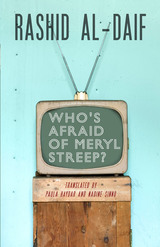 Who's Afraid of Meryl Streep?
By Rashid al-Daif Translated by Paula Haydar and Nadine Sinno
University of Texas Press, 2014 Rashid al-Daif’s provocative novel Who’s Afraid of Meryl Streep? takes an intimate look at the life of a recently married Lebanese man. Rashoud and his wife struggle as they work to negotiate not only their personal differences but also rapidly changing attitudes toward sex and marriage in Lebanese culture. As their fragile bond disintegrates, Rashoud finds television playing a more prominent role in his life; his wife uses the presence of a television at her parents’ house as an excuse to spend time away from her new home. Rashoud purchases a television in the hopes of luring his wife back home, but in a pivotal scene, he instead finds himself alone watching Kramer vs. Kramer. Without the aid of subtitles, he struggles to make sense of the film, projecting his wife’s behavior onto the character played by Meryl Streep, who captivates him but also frightens him in what he sees as an effort to take women’s liberation too far. Who’s Afraid of Meryl Streep? offers a glimpse at evolving attitudes toward virginity, premarital sex, and abortion in Lebanon and addresses more universal concerns such as the role of love and lust in marriage. The novel has found wide success in Arabic and several European languages and has also been dramatized in both Arabic and French.
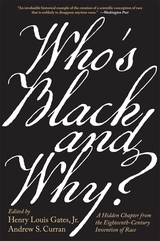 Who’s Black and Why?: A Hidden Chapter from the Eighteenth-Century Invention of Race
Henry Louis Gates, Jr.
Harvard University Press, 2022 2023 PROSE Award in European History
“An invaluable historical example of the creation of a scientific conception of race that is unlikely to disappear anytime soon.”
—Washington Post
“Reveals how prestigious natural scientists once sought physical explanations, in vain, for a social identity that continues to carry enormous significance to this day.”
—Nell Irvin Painter, author of The History of White People
“A fascinating, if disturbing, window onto the origins of racism.”
—Publishers Weekly
“To read [these essays] is to witness European intellectuals, in the age of the Atlantic slave trade, struggling, one after another, to justify atrocity.”
—Jill Lepore, author of These Truths: A History of the United States
In 1739 Bordeaux’s Royal Academy of Sciences announced a contest for the best essay on the sources of “blackness.” What is the physical cause of blackness and African hair, and what is the cause of Black degeneration, the contest announcement asked. Sixteen essays, written in French and Latin, were ultimately dispatched from all over Europe. Documented on each page are European ideas about who is Black and why. Looming behind these essays is the fact that some four million Africans had been kidnapped and shipped across the Atlantic by the time the contest was announced.
The essays themselves represent a broad range of opinions, which nonetheless circulate around a common theme: the search for a scientific understanding of the new concept of race. More important, they provide an indispensable record of the Enlightenment-era thinking that normalized the sale and enslavement of Black human beings.
These never previously published documents survived the centuries tucked away in Bordeaux’s municipal library. Translated into English and accompanied by a detailed introduction and headnotes written by Henry Louis Gates, Jr., and Andrew Curran, each essay included in this volume lays bare the origins of anti-Black racism and colorism in the West.
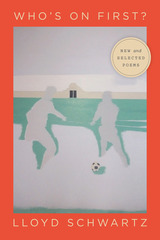 Who's on First?: New and Selected Poems
Lloyd Schwartz
University of Chicago Press, 2021 New and selected poems by renowned poet Lloyd Schwartz.
For more than four decades, readers and critics have found Lloyd Schwartz’s poems unlike anyone else’s—a rare combination of the heartbreaking and the hilarious. With his ear for the poetry of the vernacular, Schwartz offers us a memorable cast of characters—both real and imagined, foolish and oracular. Readers experience his mother’s piercing flashes of memory, the perverse comic wisdom of Gracie Allen, the uninhibited yet loving exhibitionists of antique pornography, and eager travelers crossing America in a club-car or waiting in a Brazilian airport. Schwartz listens to these people without judging—understanding that they are all trying to live their lives, whenever possible, with tenderness, humor, and grace.
Who’s on First? brings together a selection of poems from all of Schwartz’s previous collections along with eagerly awaited new poems, highlighting his formal inventiveness in tangling and untangling the yarn of comedy and pathos. Underlying all of these poems is the question of what it takes and what it costs to make art.
Who's Watching?: Daily Practices of Surveillance among Contemporary Families
Margaret K. Nelson
Vanderbilt University Press, 2009 Although family members sometime engage in monitoring as an extension of governmental surveillance, they also monitor each other, other families, and their own borders to preserve norms about what a family should be and what family members should do. Whether it is the seemingly benign surveillance of using baby monitors, the more obviously intrusive use of home drug tests on teenagers, or the way people in public feel free to judge and comment on the family composition of others, monitoring goes on all the time -- and even (or maybe especially) when there seems to be no monitoring going on at all.
 Who's Who in Research: Cultural Studies
Intellect Books
Intellect Books, 2013 Increasingly, academic communities transcend national boundaries. “Collaboration between researchers across space is clearly increasing, as well as being increasingly sought after,” noted the online magazine Inside Higher Ed in a recent article about research in the social sciences and humanities. Even for those scholars who don’t work directly with international colleagues, staying up-to-date and relevant requires keeping up with international currents of thought in one’s field. But when one’s colleagues span the globe, it’s not always easy to keep track of who’s who—or what kind of research they’re conducting. That’s where Intellect’s new series comes in. A set of worldwide guides to leading academics—and their work—across the arts and humanities, Who’s Who in Research features comprehensive profiles of scholars in the areas of cultural studies, film studies, media studies, performing arts, and visual arts. Who's Who in Research: Cultural Studies includes concise yet detailed listings include each academic’s name, institution, biography, and current research interests, as well as bibliographic information and a list of articles published in Intellect journals. The volumes in the Who’s Who in Research series will be updated each year, providing the most current information on the foremost thinkers in academia and making them an invaluable resource for scholars, hiring committees, academic libraries, and would-be collaborators across the arts and humanities.
 Who's Who in Research: Film Studies
Intellect Books
Intellect Books, 2013 Increasingly, academic communities transcend national boundaries. “Collaboration between researchers across space is clearly increasing, as well as being increasingly sought after,” noted the online magazine Inside Higher Ed in a recent article about research in the social sciences and humanities. Even for those scholars who don’t work directly with international colleagues, staying up-to-date and relevant requires keeping up with international currents of thought in one’s field. But when one’s colleagues span the globe, it’s not always easy to keep track of who’s who—or what kind of research they’re conducting. That’s where Intellect’s new series comes in. A set of worldwide guides to leading academics—and their work—across the arts and humanities, Who’s Who in Research features comprehensive profiles of scholars in the areas of cultural studies, film studies, media studies, performing arts, and visual arts. Who's Who in Research: Film Studies includes concise yet detailed listings include each academic’s name, institution, biography, and current research interests, as well as bibliographic information and a list of articles published in Intellect journals. The volumes in the Who’s Who in Research series will be updated each year, providing the most current information on the foremost thinkers in academia and making them an invaluable resource for scholars, hiring committees, academic libraries, and would-be collaborators across the arts and humanities.
 Who's Who in Research: Media Studies
Intellect Books
Intellect Books, 2013 Increasingly, academic communities transcend national boundaries. “Collaboration between researchers across space is clearly increasing, as well as being increasingly sought after,” noted the online magazine Inside Higher Ed in a recent article about research in the social sciences and humanities. Even for those scholars who don’t work directly with international colleagues, staying up-to-date and relevant requires keeping up with international currents of thought in one’s field. But when one’s colleagues span the globe, it’s not always easy to keep track of who’s who—or what kind of research they’re conducting. That’s where Intellect’s new series comes in. A set of worldwide guides to leading academics—and their work—across the arts and humanities, Who’s Who in Research features comprehensive profiles of scholars in the areas of cultural studies, film studies, media studies, performing arts, and visual arts. Who's Who in Research: Media Studies includes concise yet detailed listings include each academic’s name, institution, biography, and current research interests, as well as bibliographic information and a list of articles published in Intellect journals. The volumes in the Who’s Who in Research series will be updated each year, providing the most current information on the foremost thinkers in academia and making them an invaluable resource for scholars, hiring committees, academic libraries, and would-be collaborators across the arts and humanities.
 Who's Who in Research: Performing Arts
Intellect Books
Intellect Books, 2013 Increasingly, academic communities transcend national boundaries. “Collaboration between researchers across space is clearly increasing, as well as being increasingly sought after,” noted the online magazine Inside Higher Ed in a recent article about research in the social sciences and humanities. Even for those scholars who don’t work directly with international colleagues, staying up-to-date and relevant requires keeping up with international currents of thought in one’s field. But when one’s colleagues span the globe, it’s not always easy to keep track of who’s who—or what kind of research they’re conducting. That’s where Intellect’s new series comes in. A set of worldwide guides to leading academics—and their work—across the arts and humanities, Who’s Who in Research features comprehensive profiles of scholars in the areas of cultural studies, film studies, media studies, performing arts, and visual arts. Who's Who in Research: Performing Arts includes concise yet detailed listings include each academic’s name, institution, biography, and current research interests, as well as bibliographic information and a list of articles published in Intellect journals. The volumes in the Who’s Who in Research series will be updated each year, providing the most current information on the foremost thinkers in academia and making them an invaluable resource for scholars, hiring committees, academic libraries, and would-be collaborators across the arts and humanities.
 Who's Who in Research: Visual Arts
Intellect Books
Intellect Books, 2013 Increasingly, academic communities transcend national boundaries. “Collaboration between researchers across space is clearly increasing, as well as being increasingly sought after,” noted the online magazine Inside Higher Ed in a recent article about research in the social sciences and humanities. Even for those scholars who don’t work directly with international colleagues, staying up-to-date and relevant requires keeping up with international currents of thought in one’s field. But when one’s colleagues span the globe, it’s not always easy to keep track of who’s who—or what kind of research they’re conducting. That’s where Intellect’s new series comes in. A set of worldwide guides to leading academics—and their work—across the arts and humanities, Who’s Who in Research features comprehensive profiles of scholars in the areas of cultural studies, film studies, media studies, performing arts, and visual arts. Who's Who in Research: Visual Arts includes concise yet detailed listings include each academic’s name, institution, biography, and current research interests, as well as bibliographic information and a list of articles published in Intellect journals. The volumes in the Who’s Who in Research series will be updated each year, providing the most current information on the foremost thinkers in academia and making them an invaluable resource for scholars, hiring committees, academic libraries, and would-be collaborators across the arts and humanities.
Who’s Who in Skulls: Ethnic Identification of Crania from Measurements
William White Howells
Harvard University Press Utilizing and expanding the database presented in his earlier monographs Cranial Variation in Man and Skull Shapes and the Map, William White Howells develops methods for allocating a human skull to one of 28 modern populations for historical or forensic purposes.
 Whose Agency: The Politics and Practice of Kenya's HIV-Prevention NGOs
Megan Hershey
University of Wisconsin Press, 2019 Nongovernmental organizations (NGOs) are ubiquitous in the Global South. Often international in origin, many attempt to assist local efforts to improve the lives of people often living in or near poverty. Yet their external origins often cloud their ability to impact health or quality of life, regardless of whether volunteers are local or foreign.
By focusing on one particular type of NGO—those organized to help prevent the spread and transmission of HIV in Kenya—Megan Hershey interrogates the ways these organizations achieve (or fail to achieve) their planned outcomes. Along the way, she examines the slippery slope that is often used to define “success” based on meeting donor-set goals versus locally identified needs. She also explores the complex network of bureaucratic requirements at both the national and local levels that affect the delicate relationships NGOs have with the state. Drawing on extensive, original quantitative and qualitative research, Whose Agency serves as a much-needed case study for understanding the strengths and shortcomings of participatory development and community engagement.
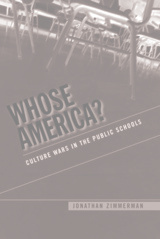 Whose America?: Culture Wars in the Public Schools
Jonathan Zimmerman
Harvard University Press, 2005 What do America’s children learn about American history, American values, and human decency? Who decides? In this absorbing book, Jonathan Zimmerman tells the dramatic story of conflict, compromise, and more conflict over the teaching of history and morality in twentieth-century America.
In history, whose stories are told, and how? As Zimmerman reveals, multiculturalism began long ago. Starting in the 1920s, various immigrant groups—the Irish, the Germans, the Italians, even the newly arrived Eastern European Jews—urged school systems and textbook publishers to include their stories in the teaching of American history. The civil rights movement of the 1960s and ’70s brought similar criticism of the white version of American history, and in the end, textbooks and curricula have offered a more inclusive account of American progress in freedom and justice.
But moral and religious education, Zimmerman argues, will remain on much thornier ground. In battles over school prayer or sex education, each side argues from such deeply held beliefs that they rarely understand one another’s reasoning, let alone find a middle ground for compromise. Here there have been no resolutions to calm the teaching of history. All the same, Zimmerman argues, the strong American tradition of pluralism has softened the edges of the most rigorous moral and religious absolutism.
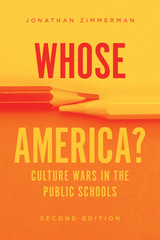 Whose America?: Culture Wars in the Public Schools
Jonathan Zimmerman
University of Chicago Press, 2022 In this expanded edition of his 2002 book, Zimmerman surveys how battles over public education have become conflicts at the heart of American national identity.
Critical Race Theory. The 1619 Project. Mask mandates. As the headlines remind us, American public education is still wracked by culture wars. But these conflicts have shifted sharply over the past two decades, marking larger changes in the ways that Americans imagine themselves. In his 2002 book, Whose America?, Zimmerman predicted that religious differences would continue to dominate the culture wars. Twenty years after that seminal work, Zimmerman has reconsidered: arguments over what American history is, what it means, and how it is taught have exploded with special force in recent years. In this substantially expanded new edition, Zimmerman meditates on the history of the culture wars in the classroom—and on what our inability to find common ground might mean for our future.
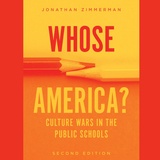 Whose America?: Culture Wars in the Public Schools
Jonathan Zimmerman
University of Chicago Press, 2022 This is an auto-narrated audiobook edition of this book.
In this expanded edition of his 2002 book, Zimmerman surveys how battles over public education have become conflicts at the heart of American national identity.
Critical Race Theory. The 1619 Project. Mask mandates. As the headlines remind us, American public education is still wracked by culture wars. But these conflicts have shifted sharply over the past two decades, marking larger changes in the ways that Americans imagine themselves. In his 2002 book, Whose America?, Zimmerman predicted that religious differences would continue to dominate the culture wars. Twenty years after that seminal work, Zimmerman has reconsidered: arguments over what American history is, what it means, and how it is taught have exploded with special force in recent years. In this substantially expanded new edition, Zimmerman meditates on the history of the culture wars in the classroom—and on what our inability to find common ground might mean for our future.
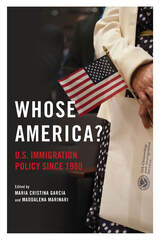 Whose America?: U.S. Immigration Policy since 1980
Edited by Maria Cristina Garcia and Maddalena Marinari
University of Illinois Press, 2023 A centerpiece of contemporary politics, draconian immigration policies have been long in the making. Maria Cristina Garcia and Maddalena Marinari edit works that examine the post-1980 response of legislation and policy to issues like undocumented immigration, economic shifts, national security, and human rights. Contributors engage with a wide range of ideas, including the effect of the Illegal Immigration Reform and Immigrant Responsibility Act and other laws on the flow of migrants and forms of entry; the impact of neoliberalism and post-Cold War political realignment; the complexities of policing and border enforcement; and the experiences of immigrant groups in communities across the United States. Up-to-date yet rooted in history, Whose America? provides a sophisticated account of recent immigration policy while mapping the ideological struggle to answer an essential question: which people have the right to make America their home or refuge? Contributors: Leisy Abrego, Carl Bon Tempo, Julio Capó, Jr., Carly Goodman, Julia Rose Kraut, Monique Laney, Carl Lindskoog, Yael Schacher, and Elliott Young
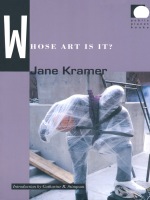 Whose Art Is It?
Jane Kramer
Duke University Press, 1994 Whose Art Is It? is the story of sculptor John Ahearn, a white artist in a black and Hispanic neighborhood of the South Bronx, and of the people he cast for a series of public sculptures commissioned for an intersection outside a police station. Jane Kramer, telling this story, raises one of the most urgent questions of our time: How do we live in a society we share with people who are, often by their own definitions, "different?" Ahearn’s subjects were "not the best of the neighborhood." They were a junkie, a hustler, and a street kid. Their images sparked a controversy throughout the community—and New York itself—over issues of white representations of people of color and the appropriateness of particular images as civic art. The sculptures, cast in bronze and painted, were up for only five days before Ahearn removed them.
This compelling narrative raises questions about community and public art policies, about stereotypes and multiculturalism. With wit, drama, sympathy, and circumspection, Kramer draws the reader into the multicultural debate, challenging our assumptions about art, image, and their relation to community. Her portrait of the South Bronx takes the argument to its grass roots—provocative, surprising in its contradictions and complexities and not at all easy to resolve.
Accompanied by an introduction by Catharine R. Stimpson exploring the issues of artistic freedom, "political correctness," and multiculturalism, Whose Art Is It? is a lively and accessible introduction to the ongoing debate on representation and private expression in the public sphere.
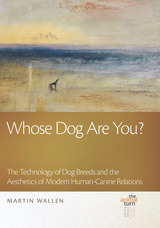 Whose Dog Are You?: The Technology of Dog Breeds and The Aesthetics of Modern Human-Canine Relations
Martin Wallen
Michigan State University Press, 2017 The intriguing question in the title comes from an inscription on the collar of a dog Alexander Pope gave to the Prince of Wales. When Pope wrote the famous couplet “I am his Highness’ Dog at Kew, / Pray tell me Sir, whose Dog are You?” the question was received as an expression of loyalty. That was an era before there were dog breeds and, not coincidentally, before people were generally believed to develop affectionate bonds with dogs. This interdisciplinary study focuses on the development of dog breeds in the eighteenth and nineteenth centuries. Beginning with the Foxhound—the first modern breed—it examines the aesthetic, political, and technological forces that generate modern human-canine relations. These forces have colluded over the past two hundred years to impose narrow descriptions of human-canine relations and to shape the dogs physically into acceptable and recognizable breeds. The largest question in animal studies today—how alterity affects human-animal relations—cannot fully be considered until the two approaches to this question are understood as complements of one another: one beginning from aesthetics, the other from technology. Most of all, the book asks if we can engage with dogs in ways that allow them to remain dogs.
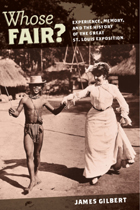 Whose Fair?: Experience, Memory, and the History of the Great St. Louis Exposition
James Gilbert
University of Chicago Press, 2009 The 1904 St. Louis World’s Fair was a major event in early-twentieth-century America. Attracting millions of tourists, it exemplified the Victorian predilection for public spectacle. The Fair has long served as a touchstone for historians interested in American culture prior to World War I and has endured in the memories of generations of St. Louis residents and visitors. In Whose Fair? James Gilbert asks: what can we learn about the lived experience of fairgoers when we compare historical accounts, individual and collective memories, and artifacts from the event? Exploring these differing, at times competing, versions of history and memory prompts Gilbert to dig through a rich trove of archival material. He examines the papers of David Francis, the Fair’s president and subsequent chief archivist; guidebooks and other official publications; the 1944 film Meet Me in St. Louis; diaries, oral histories, and other personal accounts; and a collection of striking photographs. From this dazzling array of sources, Gilbert paints a lively picture of how fairgoers spent their time, while also probing the ways history and memory can complement each other.
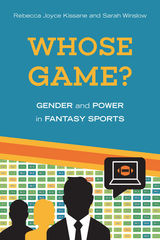 Whose Game?: Gender and Power in Fantasy Sports
Rebecca Joyce Kissane and Sarah Winslow
Temple University Press, 2020 Fantasy sports have the opportunity to provide a sporting community in which gendered physical presence plays no role—a space where men and women can compete and interact on a level playing field. Whose Game? shows, however, that while many turn to this space to socialize with friends or participate in a uniquely active and competitive fandom, men who play also depend on fantasy sports to perform a boyhood vision of masculinity otherwise inaccessible to them. Authors Rebecca Kissane and Sarah Winslow draw on a rich array of survey, interview, and observational data to examine how gender, race, and class frame the experiences of everyday fantasy sports players. This pioneering book examines gendered structures and processes, such as jock statsculinity—a nerdish form of masculine one-upmanship—and how women are often rendered as outsiders. Ultimately, Whose Game? demonstrates that fantasy sports are more than just an inconsequential leisure activity. This online world bleeds into participants’ social lives in gendered ways—forging and strengthening relationships but also taking participants’ time and attention to generate negative emotions, stress, discord, and unproductivity.
Whose Goals Whose Aspirations: Learning to Teach Underprepared Writers across the Curriculum
Stephen M. Fishman and Lucille McCarthy
Utah State University Press, 2002 Ever since Horace Mann promoted state supported schooling in the 1850s, the aims of U.S. public education have been the subject of heated national debate. Whose Goals? Whose Aspirations? joins this debate by exploring clashing educational aims in a discipline-based university classroom and the consequences of these clashes for "underprepared" writers. In this close-up look at a White middle-class teacher and his ethnically diverse students, Fishman and McCarthy examine not only the role of Standard English in college writing instruction but also the underlying and highly charged issues of multiculturalism, race cognizance, and social class.
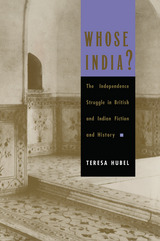 Whose India?: The Independence Struggle in British and Indian Fiction and History
Teresa Hubel
Duke University Press, 1996 For centuries, India has captured our imagination. Far more than a mere geographical presence, India is also an imaginative construct shaped by competing cultures, emotions, and ideologies. In Whose India? Teresa Hubel examines literary and historical texts by the British and Indian writers who gave meaning to the construct “India” during the final decades of the Empire. Feminist and postcolonial in its approach, this work describes the contest between British imperialists and Indian nationalists at that historical moment when India sought to achieve its independence; that is, when the definition, acquisition, and ownership of India was most vehemently at stake.
Hubel collapses the boundary between literature and history by emphasizing the selected nature of the “facts” that comprise historical texts, and by demonstrating the historicity of fiction. In analyzing the orthodox construction of the British/Indian encounter, Hubel calls into question assumptions about the end of nationalism implicit in mainstream histories and fiction, which generally describe a battleground on which only ruling-class Indians and British meet. Marginalized texts by women, untouchables, and overt imperialists alike are, therefore, examined alongside the well-known work of figures such as Rudyard Kipling, Jawaharlal Nehru, E. M. Forster, and Mahatma Gandhi.
In Whose India? discursive ownership and resistance to ownership are mutually constructing categories. As a result, the account of Indian nationalism and British imperialism that emerges is much more complicated, multivocal, and even more contradictory than previous studies have imagined. Of interest to students and scholars engaged in literary, historical, colonial/postcolonial, subaltern, and Indian studies, Whose India? will also attract readers concerned with gender issues and the canonization of texts.
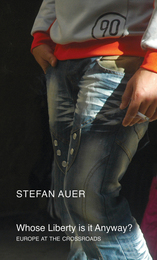 Whose Liberty is it Anyway?: Europe at the Crossroads
Stefan Auer
Seagull Books, 2012 Europe's turn of fortune is humbling, humiliating and, perhaps, irreversible. What went wrong, and when? Europe's most audacious moment occurred sometime between 1989 and 1991, a brief period that encapsulated both the demise of communism in Central and Eastern Europe and the bold steps forward on the path towards an 'ever-closer union' in Western Europe. Twenty years later, the dramatic failures of economic and political integration have forced Europeans to re-consider the underpinnings of their project. The economic crisis of 2010-11 also manifested itself as a crisis of European democracy. Old questions acquired new meaning: Is it possible to maintain conditions for self-government while undermining the nation-state? What are the limits of solidarity? Can Europe be truly united through its common history, or its common currency? Is further unity in Europe even desirable?
In Whose Liberty Is It Anyway? Stefan Auer exposes the limits of the current European project by interrogating some of its many incongruities, particularly when it comes to its commitment to freedom. The author argues that the calls for more European solidarity are not convincing when Europe's poor are asked to pay for the mistakes of those who are more fortunate. Europe's unity, Auer asserts, can only be maintained by accepting its limitations and by beginning to fulfill some of its many promises.
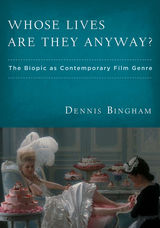 Whose Lives Are They Anyway?: The Biopic as Contemporary Film Genre
Bingham, Dennis
Rutgers University Press, 2010 The biopic presents a profound paradox—its own conventions and historical stages of development, disintegration, investigation, parody, and revival have not gained respect in the world of film studies. That is, until now. Whose Lives Are They Anyway? boldly proves a critical point: The biopic is a genuine, dynamic genre and an important one—it narrates, exhibits, and celebrates a subject's life and demonstrates, investigates, or questions his or her importance in the world; it illuminates the finer points of a personality; and, ultimately, it provides a medium for both artist and spectator to discover what it would be like to be that person, or a certain type of person. Through detailed analyses and critiques of nearly twenty biopics, Dennis Bingham explores what is at their core—the urge to dramatize real life and find a version of the truth within it. The genre's charge, which dates back to the salad days of the Hollywood studio era, is to introduce the biographical subject into the pantheon of cultural mythology and, above all, to show that he or she belongs there. It means to discover what we learn about our culture from the heroes who rise and the leaders who emerge from cinematic representations. Bingham also zooms in on distinctions between cinematic portrayals of men and women. Films about men have evolved from celebratory warts-and-all to investigatory to postmodern and parodic. At the same time, women in biopics have been burdened by myths of suffering, victimization, and failure from which they are only now being liberated. To explore the evolution and lifecycle changes of the biopic and develop an appreciation for subgenres contained within it, there is no better source than Whose Lives Are They Anyway?
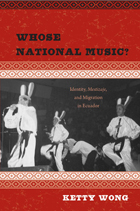 Whose National Music?: Identity, Mestizaje, and Migration in Ecuador
Ketty Wong
Temple University Press, 2012 Musical genres, musical instruments, and even songs can often capture the essence of a country's national character. In Whose National Music?, the first book-length study of Ecuadorian popular music, Ketty Wong explores Ecuadorians' views of their national identity in the twentieth and early twenty-first centuries through an examination of the music labels they use. Wong deftly addresses the notion of música nacional, an umbrella term for Ecuadorian popular songs often defined by the socio-economic, ethnic, racial, and generational background of people discussing the music.
Wong shows how the inclusion or exclusion of elite and working-class musics within the scope of música nacional articulate different social, ethnic, and racial configurations of the nation for white, mestizo, indigenous, and Afro-Ecuadorian populations.
Presenting a macropicture of what música nacional is—or should be—Whose National Music? provides a lively historical trajectory of a country's diverse musical scene.
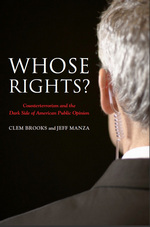 Whose Rights?: Counterterrorism and the Dark Side of American Public Opinion
Clem Brooks
Russell Sage Foundation, 2013 In the wake of the September 11 attacks, the U.S. government adopted a series of counterterrorism policies that radically altered the prevailing balance between civil liberties and security. These changes allowed for warrantless domestic surveillance, military commissions at Guantanamo Bay and even extralegal assassinations. Now, more than a decade after 9/11, these sharply contested measures appear poised to become lasting features of American government. What do Americans think about these policies? Where do they draw the line on what the government is allowed to do in the name of fighting terrorism? Drawing from a wealth of survey and experimental data, Whose Rights? explores the underlying sources of public attitudes toward the war on terror in a more detailed and comprehensive manner than has ever been attempted. In an analysis that deftly deploys the tools of political science and psychology, Whose Rights? addresses a vexing puzzle: Why does the counterterrorism agenda persist even as 9/11 recedes in time and the threat from Al Qaeda wanes? Authors Clem Brooks and Jeff Manza provocatively argue that American opinion, despite traditionally showing strong support for civil liberties, exhibits a “dark side” that tolerates illiberal policies in the face of a threat. Surveillance of American citizens, heightened airport security, the Patriot Act and targeted assassinations enjoy broad support among Americans, and these preferences have remained largely stable over the past decade. There are, however, important variations: Waterboarding and torture receive notably low levels of support, and counterterrorism activities sanctioned by formal legislation, as opposed to covert operations, tend to draw more favor. To better evaluate these trends, Whose Rights? examines the concept of “threat-priming” and finds that getting people to think about the specter of terrorism bolsters anew their willingness to support coercive measures. A series of experimental surveys also yields fascinating insight into the impact of national identity cues. When respondents are primed to think that American citizens would be targeted by harsh counterterrorism policies, support declines significantly. On the other hand, groups such as Muslims, foreigners, and people of Middle Eastern background elicit particularly negative attitudes and increase support for counterterrorism measures. Under the right conditions, Brooks and Manza show, American support for counterterrorism activities can be propelled upward by simple reminders of past terrorism plots and communication about disliked external groups. Whose Rights? convincingly argues that mass opinion plays a central role in the politics of contemporary counterterrorism policy. With their clarity and compelling evidence, Brooks and Manza offer much-needed insight into the policy responses to the defining conflict of our age and the psychological impact of terrorism.
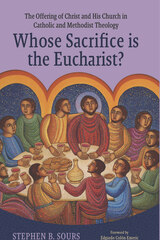 Whose Sacrifice is the Eucharist? The Offering of Christ and His Church in Catholic and Methodist Theology
Stephen B. Sours
Catholic University of America Press, 2024 This book explores what Catholics and Methodists believe about eucharistic sacrifice. Eucharistic sacrifice refers to the offering that Christ and his church make in the celebration of the Lord’s Supper. It is, therefore, both a Christian doctrine and a church practice. The sacrificial dimension of the sacrament comes both from Christ’s sacrifice on the cross and from his self-offering at the Last Supper in which Christ gives himself to the Father on behalf of his people. “This is my body, which is given for you” (Luke 22:19). The eucharist is a sacrificial meal because in the bread and cup Christians are united to the body and blood of Christ that was sacrificed for them on the cross. Moreover, the resurrected Lord is really present with his people in the eucharist, and while his historic crucifixion is an event in the past, Jesus’ salvation continues and his grace is given to his people in the sacrament, “for this is my blood of the covenant, which is poured out for many for the forgiveness of sins” (Matthew 26:28). Catholics and Methodists believe that Jesus instructs his followers to repeat his words and actions from the Last Supper in their celebration of the eucharist, but a long running assumption is that Catholics and Methodists—following the historic Reformation schism—are deeply divided over eucharistic sacrifice. This book challenges that assumption by analyzing what these churches teach on eucharistic sacrifice from historical, sacramental, liturgical, and ecumenical perspectives. Key figures like Thomas Aquinas and John Wesley help define eucharistic sacrifice in each tradition. Subsequently, authoritative texts such as ecclesial statements, eucharistic prayers, and hymns further specify what Catholics and Methodists believe they are doing when they offer the eucharist to God. Sours argues that far from being divided, Catholics and Methodists have much in common regarding this controversial doctrine.
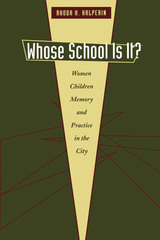 Whose School Is It?: Women, Children, Memory, and Practice in the City
By Rhoda H. Halperin
University of Texas Press, 2006 Whose School Is It?: Women, Children, Memory, and Practice in the City is a success story with roadblocks, crashes, and detours. Rhoda Halperin uses feminist theorist and activist Gloria Anzaldúa's ideas about borderlands created by colliding cultures to deconstruct the creation and advancement of a public community charter school in a diverse, long-lived urban neighborhood on the Ohio River. Class, race, and gender mix with age, local knowledge, and place authenticity to create a page-turning story of grit, humor, and sheer stubbornness. The school has grown and flourished in the face of daunting market forces, class discrimination, and an increasingly unfavorable national climate for charter schools. Borderlands are tense spaces. The school is a microcosm of the global city. Many theoretical strands converge in this book—feminist theory, ideas about globalization, class analysis, and accessible narrative writing—to present some new approaches in urban anthropology. The book is multi-voiced and nuanced in ways that provide authenticity and texture to the real circumstances of urban lives. At the same time, identities are threatened as community practices clash with rules and regulations imposed by outsiders. Since it is based on fifteen years of ethnographic fieldwork in the community and the city, Whose School Is It? brings unique long-term perspectives on continuities and disjunctures in cities. Halperin's work as researcher and advocate also provides insider perspectives that are rare in the literature of urban anthropology.
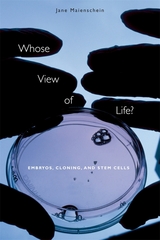 Whose View of Life?: Embryos, Cloning, and Stem Cells
Jane Maienschein
Harvard University Press, 2003 Saving lives versus taking lives: These are the stark terms in which the public regards human embryo research--a battleground of extremes, a war between science and ethics. Such a simplistic dichotomy, encouraged by vociferous opponents of abortion and proponents of medical research, is precisely what Jane Maienschein seeks to counter with this book. Whose View of Life? brings the current debates into sharper focus by examining developments in stem cell research, cloning, and embryology in historical and philosophical context and by exploring legal, social, and ethical issues at the heart of what has become a political controversy.
Drawing on her experience as a researcher, teacher, and congressional fellow, Jane Maienschein provides historical and contemporary analysis to aid understanding of the scientific and social forces that got us where we are today. For example, she explains the long-established traditions behind conflicting views of how life begins--at conception or gradually, in the course of development. She prepares us to engage a major question of our day: How are we, as a 21st-century democratic society, to navigate a course that is at the same time respectful of the range of competing views of life, built on the strongest possible basis of scientific knowledge, and still able to respond to the momentous opportunities and challenges presented to us by modern biology? Maienschein's multidisciplinary perspective will provide a starting point for further attempts to answer this question.
 Whose Votes Count?: Affirmative Action and Minority Voting Rights
Abigail M. Thernstrom
Harvard University Press, 1987 The Fifteenth Amendment to the Constitution of the United States guarantees that all citizens have the right to vote without regard to their “race, color, or previous condition of servitude.” For almost a century the Fifteenth Amendment was a dead letter. Throughout the South millions of nonwhite Americans were excluded from the political process by poll taxes, literacy tests, and other devices. The landmark Voting Rights Act of 1965 sought to end that injustice.
In this absorbing book, political scientist Abigail Thernstrom analyzes the radical transformation of the Voting Rights Act in the years since its passage. She shows how a measure carefully crafted to open the polling booths to southern blacks has evolved into a powerful tool for affirmative action in the electoral sphere—a means to promote black and Hispanic officeholding by creating “safe” seats for minority candidates. What began as an effort to give minorities a fair shake has become a means of ensuring a fair share.
Thernstrom demonstrates how voting rights have created a “political thicket” in which Congress, the courts, and the justice Department have been lost. Why this should be true, how small statutory changes led to large and unexpected results, how civil rights groups prevailed against a conservative Senate, how Republicans have benefited from gerrymandering to increase black officeholding—these stories are all part of Thernstrom’s well-told tale.
Even though the concept of the right to vote retains an aura of moral simplicity, the issue of minority voting rights is perhaps the most complex, yet least studied, of all affirmative action issues. Whose Votes Count? should stimulate the overdue discussion that the subject deserves among all those concerned with American politics.
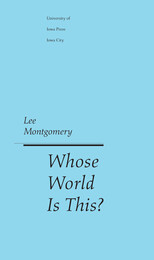 Whose World Is This?
Lee Montgomery
University of Iowa Press, 2007 Montgomery's characters blow drugs and boys, advise friends who are dying of AIDS about pennies in penny loafers, write letters to Caroline Kennedy, and fall in love with movie stars. Some lose themselves to ambivalence while contemplating motherhood; others find themselves soothed when, after hearing of the sudden death of a dear friend they seduce a stranger.
In the story "We Americans," a woman abandoned by her husband grows so vulnerable, she internalizes TV news tragedies by developing hives in the shapes of foreign countries. In the title story, Hannah, a speed freak working the graveyard shift in a nursing home, falls in love with a quadriplegic who void of feelings in his limbs, feel things she cannot. In "Avalanche", an editor to movie stars in Beverly Hills struggles with how to reconcile her own story with the fairy-tale endings of celebrity culture.
Tender, poignant, and at times hilarious, the women in Whose World Is This? turn common notions of love, compassion, and tradition upside down as they show us how vulnerability, although dangerous, is what makes life astonishingly beautiful and reality strangely unreal.
Whosoever Whole
Elizabeth Scanlon
Omnidawn, 2024 Poems that offer an anti-capitalist consideration of life and selfhood for women in contemporary society.
The poetry in Elizabeth Scanlon’s Whosoever Whole asks how we arrive at and nurture a sense of self amid a culture that wants us only to consume. Navigating the fractal and often fractured experiences of a citizen, a parent in the time of climate change, and a woman in an embattled era, Scanlon invites the reader into an interior space filled with anger, joy, wonder, and hope. Employing metaphor and metonymy, these poems portray a series of courageous portraits of the many faces a woman must wear to survive in today’s culture. Whosoever Whole is an anti-capitalist love song to all who refuse to be torn apart by the market valuation of their lives.
 Why Afterschool Matters
Nelson, Ingrid A.
Rutgers University Press, 2017 Increasingly, educational researchers and policy-makers are finding that extracurricular programs make a major difference in the lives of disadvantaged youth, helping to reduce the infamous academic attainment gap between white students and their black and Latino peers. Yet studies of these programs typically focus on how they improve the average academic performance of their participants, paying little attention to individual variation.
Why Afterschool Matters takes a different approach, closely following ten Mexican American students who attended the same extracurricular program in California, then chronicling its long-term effects on their lives, from eighth grade to early adulthood. Discovering that participation in the program was life-changing for some students, yet had only a minimal impact on others, sociologist Ingrid A. Nelson investigates the factors behind these very different outcomes. Her research reveals that while afterschool initiatives are important, they are only one component in a complex network of school, family, community, and peer interactions that influence the educational achievement of disadvantaged students.
Through its detailed case studies of individual students, this book brings to life the challenges marginalized youth en route to college face when navigating the intersections of various home, school, and community spheres. Why Afterschool Matters may focus on a single program, but its findings have major implications for education policy nationwide.
 Why Alanis Morissette Matters
Megan Volpert
University of Texas Press, 2025 The first critical biography of iconic musician Alanis Morissette, creator of Jagged Little Pill. The 1990s hardly saw a bigger hit than Jagged Little Pill. Alanis Morissette’s defining album won Grammys, dominated the Billboard charts, and sold more than 30 million copies worldwide. It left a deep mark on the psyches of countless listeners. Three decades later, Megan Volpert checks in with Morissette, probing her rich and varied post-JLP career and bearing feminist witness to the existential anger that ties her recent work to enduring classics like “You Oughta Know,” “One Hand in My Pocket,” and “Ironic.” Why Alanis Morissette Matters builds a bridge from Jagged Little Pill to the fascinating life and subtle intellect of its creator, exploring how the artist’s philosophical interests and personal journey are reflected in each track. Morissette’s struggles with censorship, mental health challenges, and Catholicism; her queer allyship, spiritual skepticism, zealous fandom, and philanthropic passions—all are carefully observed by a critic whose own life was touched by Jagged Little Pill. In the album’s wake, Morissette has evolved as an artist and global citizen. With sensitivity and a profound love for the music, Volpert guides readers through the case for Morissette’s enduring cultural relevance and creative impact.
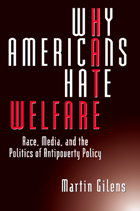 Why Americans Hate Welfare: Race, Media, and the Politics of Antipoverty Policy
Martin Gilens
University of Chicago Press, 1999 Tackling one of the most volatile issues in contemporary politics, Martin Gilens's work punctures myths and misconceptions about welfare policy, public opinion, and the role of the media in both. Why Americans Hate Welfare shows that the public's views on welfare are a complex mixture of cynicism and compassion; misinformed and racially charged, they nevertheless reflect both a distrust of welfare recipients and a desire to do more to help the "deserving" poor.
"With one out of five children currently living in poverty and more than 100,000 families with children now homeless, Gilens's book is must reading if you want to understand how the mainstream media have helped justify, and even produce, this state of affairs." —Susan Douglas, The Progressive
"Gilens's well-written and logically developed argument deserves to be taken seriously." —Choice
"A provocative analysis of American attitudes towards 'welfare.'. . . [Gilens] shows how racial stereotypes, not white self-interest or anti-statism, lie at the root of opposition to welfare programs." -Library Journal
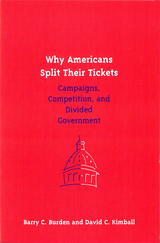 Why Americans Split Their Tickets: Campaigns, Competition, and Divided Government
Barry C. Burden and David C. Kimball
University of Michigan Press, 2004 In Why Americans Split Their Tickets, Barry C. Burden and David C. Kimball argue that divided government is produced unintentionally. Using a new quantitative method to analyze voting in presidential, House, and Senate elections from 1952 to 1996, they reject the dominant explanation for divided government, that ticket splitting is done to balance parties that are far from the center. The ideological positions of candidates do not matter in American elections, but voters favor centrist candidates rather than a mix of extremists. When candidates of opposing parties adopt similar platforms, ticket splitting arises. For voters, ideological differences between the parties blur and other considerations such as candidate characteristics exert a greater influence on their voting decisions. Among their other findings, the authors link changes in congressional campaigns--namely the rise of incumbency advantage and the greater importance of money in the 1960s and 1970s--to ticket splitting and argue, in addition, that the transformation of the South from a Democratic stronghold to a Republican-leaning environment has made regional factors less important.
Burden and Kimball draw upon a diverse and unique range of data as evidence for their argument. Their analyses rely on survey data, aggregate election returns, and new ecological inference estimates for every House and Senate election from 1952 to 1996. This approach allows for the examination of divided voting in traditional ways, such as choosing a Democratic presidential candidate and a Republican House candidate on a single ballot, to less traditional forms, such as voting in a midterm House election and choosing a state's Senate delegation.
Barry C. Burden is Assistant Professor of Government, Harvard University. David C. Kimball is Assistant Professor of Political Science, University of Missouri, St. Louis.
Why Architecture Matters: Lessons from Chicago
Blair Kamin
University of Chicago Press, 2001 For more than a decade, Pulitzer Prize-winning Chicago Tribune architecture critic Blair Kamin has been writing fiery, intelligent essays on the state of contemporary architecture. His subjects range from high-rises to highways, parks to public housing, Frank Lloyd Wright to Frank Gehry. Why Architecture Matters collects the best of Kamin's acclaimed columns, offering both a look at America's foremost architectural city and a taste of Kamin's penetrating, witty style of critique.
Why Are Artists Poor?: The Exceptional Economy of the Arts
Hans Abbing
Amsterdam University Press, 2002 Most artists earn very little. Nevertheless, there is no shortage of aspiring young artists. Do they give to the arts willingly or unknowingly? Governments and other institutions also give to the arts, to raise the low incomes. But their support is ineffective: subsidies only increase the artists' poverty.
The economy of the arts is exceptional. Although the arts operate successfully in the marketplace, their natural affinity is with gift-giving, rather than with commercial exchange. People believe that artists are selflessly dedicated to art, that price does not reflect quality, and that the arts are free. But is it true?
This unconventional multidisciplinary analysis explains the exceptional economy of the arts. Insightful illustrations from the practice of a visual artist support the analysis.
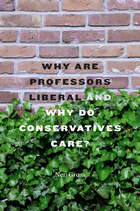 Why Are Professors Liberal and Why Do Conservatives Care?
Neil Gross
Harvard University Press, 2013 Some observers see American academia as a bastion of leftist groupthink that indoctrinates students and silences conservative voices. Others see a protected enclave that naturally produces free-thinking, progressive intellectuals. Both views are self-serving, says Neil Gross, but neither is correct. Why Are Professors Liberal and Why Do Conservatives Care? explains how academic liberalism became a self-reproducing phenomenon, and why Americans on both the left and right should take notice.
Academia employs a higher percentage of liberals than nearly any other profession. But the usual explanations—hiring bias against conservatives, correlations of liberal ideology with high intelligence—do not hold up to scrutiny. Drawing on a range of original research, statistics, and interviews, Gross argues that “political typing” plays an overlooked role in shaping academic liberalism. For historical reasons, the professoriate developed a reputation for liberal politics early in the twentieth century. As this perception spread, it exerted a self-selecting influence on bright young liberals, while deterring equally promising conservatives. Most professors’ political views formed well before they stepped behind the lectern for the first time.
Why Are Professors Liberal and Why Do Conservatives Care? shows how studying the political sympathies of professors and their critics can shed light not only on academic life but on American politics, where the modern conservative movement was built in no small part around opposition to the “liberal elite” in higher education. This divide between academic liberals and nonacademic conservatives makes accord on issues as diverse as climate change, immigration, and foreign policy more difficult.
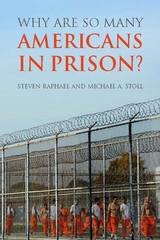 Why Are So Many Americans in Prison?
Steven Raphael
Russell Sage Foundation, 2013 Between 1975 and 2007, the American incarceration rate increased nearly fivefold, a historic increase that puts the United States in a league of its own among advanced economies. We incarcerate more people today than we ever have, and we stand out as the nation that most frequently uses incarceration to punish those who break the law. What factors explain the dramatic rise in incarceration rates in such a short period of time? In Why Are So Many Americans in Prison? Steven Raphael and Michael A. Stoll analyze the shocking expansion of America’s prison system and illustrate the pressing need to rethink mass incarceration in this country. Raphael and Stoll carefully evaluate changes in crime patterns, enforcement practices and sentencing laws to reach a sobering conclusion: So many Americans are in prison today because we have chosen, through our public policies, to put them there. They dispel the notion that a rise in crime rates fueled the incarceration surge; in fact, crime rates have steadily declined to all-time lows. There is also little evidence for other factors commonly offered to explain the prison boom, such as the deinstitutionalization of the mentally ill since the 1950s, changing demographics, or the crack-cocaine epidemic. By contrast, Raphael and Stoll demonstrate that legislative changes to a relatively small set of sentencing policies explain nearly all prison growth since the 1980s. So-called tough on crime laws, including mandatory minimum penalties and repeat offender statutes, have increased the propensity to punish more offenders with lengthier prison sentences. Raphael and Stoll argue that the high-incarceration regime has inflicted broad social costs, particularly among minority communities, who form a disproportionate share of the incarcerated population. Why Are So Many Americans in Prison? ends with a powerful plea to consider alternative crime control strategies, such as expanded policing, drug court programs, and sentencing law reform, which together can end our addiction to incarceration and still preserve public safety. As states confront the budgetary and social costs of the incarceration boom, Why Are So Many Americans in Prison? provides a revealing and accessible guide to the policies that created the era of mass incarceration and what we can do now to end it.
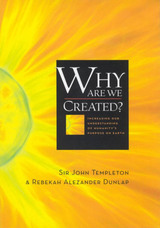 Why Are We Created: Increasing Our Understanding of Humanity's Purpose on Earth
Sir John Templeton
Templeton Press, 2003 While many books strive to stimulate thinking through provocative anecdotes and theories, Why Are We Created? takes a different path. It begins with a question and continues with a multitude of questions like these: •What is the importance of recognizing the presence of the sacred within us and around us? •How can individuals create a purposeful and fruitful way of life? •How does happiness relate to one's purpose? The intent of these questions is to encourage thoughtfulness, observation, and research that enlarges understanding while offering a sense of direction. The goal is to help individuals live a more useful and happy life. Sir John and Reverend Dunlap use the questions to help readers explore the role of humility as a key to knowledge and progress. They look at the creative power of purposeful thinking and ask how life might be changed if we refuse to dwell on any thought we would not want objectified in our life. They pose questions related to consciously directing one's life. Helping to shed light on the possible connection between spiritual principles and human concepts is commentary from a wide range of sources: the scriptures, Mother Teresa, Albert Einstein, Edward O. Wilson, Emanuel Swedenborg, Emmet Fox, A. H. Maslow, Sir Isaac Newton, Dr. Albert Schweitzer, and Archbishop Desmond Tutu, among many others. Author Information
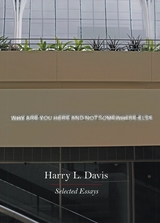 Why Are You Here and Not Somewhere Else: Selected Essays
Harry L. Davis
University of Chicago Press, 2013 Harry L. Davis joined the faculty of the University of Chicago Booth School of Business in 1963, and he has since become one of the most influential figures in business education in the United States and abroad. He helped develop the first core leadership program of any top-rated MBA institution in the country and the Management Lab. Davis also helped Booth pioneer its first international campus in Barcelona in 1983, where he served as deputy dean for a decade.
On the occasion of the fiftieth anniversary of Davis’s arrival at the Booth School, Why Are You Here and Not Somewhere Else offers seven essays by Davis that offer new perspectives and contribute to a more well-rounded understanding of business education. Adapted from convocation addresses given by Davis at different points during his five-decade career, the essays encapsulate the spirit of business education at the Booth School, while at the same time providing encouraging, invaluable wisdom for those about to embark on business careers or take on leadership positions. Topics addressed range from the role of the university in the business world to the crucial role of intangible values in shaping one’s career.
Davis has been a formative influence on more executives and leaders than perhaps any other business educator living today, and Why Are You Here and Not Somewhere Else provides a unique and valuable perspective on how leaders in business and elsewhere can shape and define their careers in new ways.
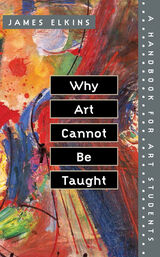 Why Art Cannot Be Taught: A Handbook for Art Students
James Elkins
University of Illinois Press, 2001 In this smart survival guide for students and teachers--the only book of its kind--James Elkins examines the "curious endeavor to teach the unteachable" that is generally known as college-level art instruction. This singular project is organized around a series of conflicting claims about art: "Art can be taught, but nobody knows quite how."
"Art can be taught, but it seems as if it can't be since so few students become outstanding artists."
"Art cannot be taught, but it can be fostered or helped along."
"Art cannot be taught or even nourished, but it is possible to teach right up to the beginnings of art so that students are ready to make art the moment they graduate."
"Great art cannot be taught, but more run-of-the-mill art can be."
Elkins traces the development (or invention) of the modern art school and considers how issues such as the question of core curriculum and the intellectual isolation of art schools affect the teaching and learning of art. He also addresses the phenomenon of art critiques as a microcosm for teaching art as a whole and dissects real-life critiques, highlighting presuppositions and dynamics that make them confusing and suggesting ways to make them more helpful.
Elkins's no-nonsense approach clears away the assumptions about art instruction that are not borne out by classroom practice. For example, he notes that despite much talk about instilling visual acuity and teaching technique, in practice neither teachers nor students behave as if those were their principal goals. He addresses the absurdity of pretending that sexual issues are absent from life-drawing classes and questions the practice of holding up great masters and masterpieces as models for students capable of producing only mediocre art. He also discusses types of art--including art that takes time to complete and art that isn't serious--that cannot be learned in studio art classes.
Why Art Cannot Be Taught is a response to Elkins's observation that "we know very little about what we do" in the art classroom. His incisive commentary illuminates the experience of learning art for those involved in it, while opening an intriguing window for those outside the discipline.
Why biodiversity loss is not a disaster
Bas Haring
Leiden University Press, 2020 "Everyone knows that species go extinct and biodiversity decreases. It seems obvious that this loss might have disastrous consequences. Maybe because of a cascading effect we will end up in a barren moonscape – and if that does not happen, we at the very least will remain dependent on biodiversity for food, health and well-being. This publication tries to remove some fear; there are no reasons to believe that biodiversity loss will cause any kind of disaster. Nature is not like a machine that stalls if parts are being removed: a collapse of nature is not looming. And although specific species are required for practicalities, this cannot be generalized to biodiversity overall. In this book Bas Haring argues that biodiversity loss is a pity, but not a disaster. "
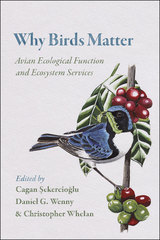 Why Birds Matter: Avian Ecological Function and Ecosystem Services
Edited by Çagan H. Sekercioglu, Daniel G. Wenny, and Christopher J. Whelan
University of Chicago Press, 2016 For over one hundred years, ornithologists and amateur birders have jointly campaigned for the conservation of bird species, documenting not only birds’ beauty and extraordinary diversity, but also their importance to ecosystems worldwide. But while these avian enthusiasts have noted that birds eat fruit, carrion, and pests; spread seed and fertilizer; and pollinate plants, among other services, they have rarely asked what birds are worth in economic terms. In Why Birds Matter, an international collection of ornithologists, botanists, ecologists, conservation biologists, and environmental economists seeks to quantify avian ecosystem services—the myriad benefits that birds provide to humans.
The first book to approach ecosystem services from an ornithological perspective, Why Birds Matter asks what economic value we can ascribe to those services, if any, and how this value should inform conservation. Chapters explore the role of birds in such important ecological dynamics as scavenging, nutrient cycling, food chains, and plant-animal interactions—all seen through the lens of human well-being—to show that quantifying avian ecosystem services is crucial when formulating contemporary conservation strategies. Both elucidating challenges and providing examples of specific ecosystem valuations and guidance for calculation, the contributors propose that in order to advance avian conservation, we need to appeal not only to hearts and minds, but also to wallets.
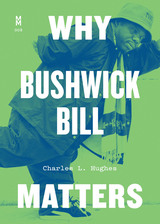 Why Bushwick Bill Matters
By Charles L. Hughes
University of Texas Press, 2021 In 1989 the Geto Boys released a blistering track, “Size Ain’t Shit,” that paid tribute to the group’s member Bushwick Bill. Born with dwarfism, Bill was one of the few visibly disabled musicians to achieve widespread fame and one of the even fewer to address disability in a direct, sustained manner. Initially hired as a dancer, Bill became central to the Geto Boys as the Houston crew became one of hip-hop’s most important groups. Why Bushwick Bill Matters chronicles this crucial artist and explores what he reveals about the relationships among race, sex, and disability in pop music. Charles L. Hughes examines Bill's recordings and videos (both with the Geto Boys and solo), from the horror-comic persona of “Chuckie” to vulnerable verses in songs such as “Mind Playing Tricks On Me,” to discuss his portrayals of dwarfism, addiction, and mental illness. Hughes also explores Bill’s importance to his era and to the longer history of disability in music. A complex figure, Bill exposed the truths of a racist and ableist society even as his violent and provocative lyrics put him in the middle of debates over censorship and misogyny. Confrontational and controversial, Bushwick Bill left a massive legacy as he rhymed and swaggered through an often-inaccessible world.
Why Can't It Be Tenderness
Michelle Brittan Rosado
University of Wisconsin Press, 2018 Charting a journey through schoolyards and laundromats, suburban gardens and rice paddies, yoga studios and rural highways, Michelle Brittan Rosado crafts poems that blend elegy and praise. In settings from California to Malaysian Borneo, and the wide Pacific between them, she explores themes of coming-of-age, mixed-race identity, diaspora, and cultural inheritance. With empathy for the generations past, she questions how we might navigate our history to find a way through it, still holding on to the ones we love. Like an ocean wave, these poems recede and return, with gratitude for the quotidian and for beauty found even in fragments.
bring me back
to the in-between
where my breath
has always lived,
without containment,
like two legs pointing
toward the ocean, or these arms
reaching into sky
—excerpt from "Ode to the Double 'L'" Michelle Brittan Rosado. All rights reserved.
 Why Choose the Liberal Arts?
Mark William Roche
University of Notre Dame Press, 2010
"A wise and inspiring meditation on the value of an education in the liberal arts, one that is informed by long experience, enriched by mature reflection, and not neglectful of commonsense practicalities. It beckons as a kindly light amid the encircling gloom of so much contemporary commentary on American higher education." --Francis Oakley, President Emeritus, Williams College
"In a resistant country in a resistant age, Mark Roche dares to make the case for education in the liberal arts in terms both broad and deep. He makes forcefully the obligatory case for the practical value of a liberal arts education as a preparation for whatever profession--a case that must continue to be made, especially in these times. But on the basis of wide reading and long experience as a scholar, teacher, and administrator in institutions large and small, he straightforwardly makes the case for the inherent value of study in the liberal arts and for the intimate relationship between that study and what life might actually be about. He foregrounds the truly big questions that are so often avoided in pursuit of the professional by both students and faculty. Unlike so many commentators, he is not a scold. He is a thoughtful advocate for an education in which young and old alike explore together what it means to be a human being and how one might be a better one." --Don Michael Randel, President, The Andrew W. Mellon Foundation
"I love this book. Mark Roche lays out a fascinating and accurate case for the liberal arts." --Donald R. Keough, Former President of The Coca-Cola Company
"With grace and passion, Mark Roche makes the compelling case--as timeless as the Greek poets and as timely as tomorrow's headlines--for studying the liberal arts" --Mark Shields, Columnist and Commentator, PBS NewsHour
In a world where the value of a liberal arts education is no longer taken for granted, Mark William Roche lucidly and passionately argues for its essential importance. Drawing on more than thirty years of experience in higher education as a student, faculty member, and administrator, Roche deftly connects the broad theoretical perspective of educators to the practical needs and questions of students and their parents.
Roche develops three overlapping arguments for a strong liberal arts education: first, the intrinsic value of learning for its own sake, including exploration of the profound questions that give meaning to life; second, the cultivation of intellectual virtues necessary for success beyond the academy; and third, the formative influence of the liberal arts on character and on the development of a sense of higher purpose and vocation. Together with his exploration of these three values--intrinsic, practical, and idealistic--Roche reflects on ways to integrate them, interweaving empirical data with personal experience. Why Choose the Liberal Arts? is an accessible and thought-provoking work of interest to students, parents, and administrators.
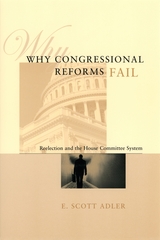 Why Congressional Reforms Fail: Reelection and the House Committee System
E. Scott Adler
University of Chicago Press, 2002 For decades, advocates of congressional reforms have repeatedly attempted to clean up the House committee system, which has been called inefficient, outmoded, unaccountable, and even corrupt. Yet these efforts result in little if any change, as members of Congress who are generally satisfied with existing institutions repeatedly obstruct what could fairly be called innocuous reforms.
What lies behind the House's resistance to change? Challenging recent explanations of this phenomenon, Scott Adler contends that legislators resist rearranging committee powers and jurisdictions for the same reason they cling to the current House structure—the ambition for reelection. The system's structure works to the members' advantage, helping them obtain funding (and favor) in their districts. Using extensive evidence from three major reform periods—the 1940s, 1970s, and 1990s—Adler shows that the reelection motive is still the most important underlying factor in determining the outcome of committee reforms, and he explains why committee reform in the House has never succeeded and probably never will.
Why Corporation 2020?: The Case for a New Corporation in the Next Decade
Pavan Sukhdev
Island Press, 2012 In Why Corporation 2020?, Pavan Sukhdev examines the many critical planetary boundaries that we are approaching, from greenhouse gas emissions to the nitrogen cycle, freshwater and land use, and food security, and argues that sweeping changes are needed to reform the way we deal with the earth’s resources. Sukhdev makes an arresting case for including the private sector in these changes, arguing that a new corporate model is needed in the next decade to avert irreparable ecological harm.
Available free at major online booksellers.
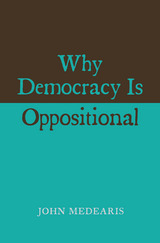 Why Democracy Is Oppositional
John Medearis
Harvard University Press, 2015 Is infrequent voting the most we can expect from a free citizenry? Would democracy be more robust if our political discourse were more deliberative? John Medearis’s trenchant and trend-bucking work of political philosophy argues that democracies face significant challenges that go beyond civic lethargy and unreasonable debate. Democracy is inherently a fragile state of affairs, he reminds us. Revisiting fundamental questions about the system in theory and practice, Why Democracy Is Oppositional helps us see why preserving democracy has always been—and will always be—a struggle.
As citizens of democracies seek political control over their destinies, they confront forces that threaten to dominate their lives. These forces may take the form of runaway financial markets, powerful special interests, expanding militaries, or dysfunctional legislatures. But citizens of democracies help create the very institutions that overwhelm them. Hostile threats do not generally come from the outside but are the product of citizens’ own collective activities. Medearis contends that democratic action perpetually arises to reclaim egalitarian control over social forces and institutions that have become alienated from large numbers of citizens. Democracy is therefore necessarily oppositional. Concerted, contentious political activities of all kinds are fundamental to it, while consensus and easy compromise are rarities.
Recovering insights from political theorists such as Karl Marx and John Dewey, Why Democracy Is Oppositional addresses contemporary issues ranging from the global financial crisis and economic inequality to drone warfare and mass incarceration.
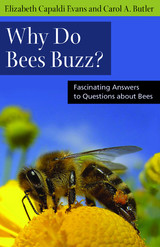 Why Do Bees Buzz?: Fascinating Answers to Questions about Bees
Elizabeth Capaldi Evans and Carol A. Butler
Rutgers University Press, 2010 Twenty-five thousand species of bees certainly create a loud buzz. Yet silence descended a few years ago when domesticated bee populations plummeted. Bees, in particular honey bees, are critical links in the vibrant chain that brings fruits, vegetables, and nuts to markets and dinner tables across the country. Farmers and scientists on the agricultural frontlines quickly realized the impact of this loss, but many others did not see this devastation.
Why Do Bees Buzz? reports on the mysterious "colony collapse disorder" that has affected honey bee populations, as well as other captivating topics, such as their complex, highly social lives, and how other species of bees are unique and different from honey bees. Organized in chapters that cover everything from these provocative pollinators' basic biology to the aggressive nature of killer bees, this insightful question and answer guide provides a honeycomb of compelling facts.
With clarity and depth, bee biologist Elizabeth Capaldi Evans and coauthor Carol A. Butler examine the lives of honey bees, as well as other species such as orchid bees, bumblebees, and stingless bees. Accessible to readers on every level, and including the latest research and theory for the more sophisticated reader, the authors reveal more than one hundred critical answers to questions about the lives of bees.
Concepts about speciation, evolutionary adaptation and pollination, as well as historical details about topics such as Mayan beekeeping and the appearance of bees in rock art, are arranged in easy-to-follow sidebars that highlight the text. Color and black and white photographs and drawings enhance the beauty and usefulness of Why Do Bees Buzz?
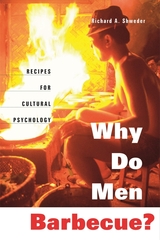 Why Do Men Barbecue?: Recipes for Cultural Psychology
Richard A. Shweder
Harvard University Press, 2003 Why do American children sleep alone instead of with their parents? Why do middle-aged Western women yearn for their youth, while young wives in India look forward to being middle-aged? In these provocative essays, one of the most brilliant advocates of cultural psychology reminds us that cultural differences in mental life lie at the heart of any understanding of the human condition.
Drawing on ethnographic studies of the distinctive modes of psychological functioning in communities around the world, Richard Shweder explores ethnic and cultural differences in ideals of gender, in the life of the emotions, in conceptions of mature adulthood and the stages of life, and in moral judgments about right and wrong.
Shweder, a cultural pluralist, dares readers to broaden their own conceptions of what is good, true, beautiful, and efficient and to take a closer look at specific cultural practices--parent/child cosleeping, arranged marriage, male and female genital modifications--that we may initially find alien or disturbing. He invites us to reject both radical relativism (the view that whatever is, is okay) and imperial visions of universal progressive cultural development (for example, the idea that "the West is Best") and to engage in more deeply informed cultural critique.
The knowable world, Shweder observes, is incomplete if seen from any one point of view, incoherent if seen from all points of view at once, and empty if seen from nowhere in particular. This work strives for the "view from manywheres" in a culturally diverse yet interdependent world.
 Why Do They Kill?: Men Who Murder Their Intimate Partners
David Adams
Vanderbilt University Press, 2007 Moving backwards from the murders thirty-one men committed, through their adult lives, relationship histories, and their childhoods, David Adams sought to understand what motivated these men to kill. The patterns he found reveal that the murders were neither impulsive crimes of passion nor were they indiscriminate. Why Do They Kill? is the first book to profile different types of wife killers, and to examine the courtship patterns of abusive men. The author shows that wife murders are not, for the most part, "crimes of passion," but culminations of lifelong predisposing factors of the men who murder, and that many elements of their crimes are foretold by their past behavior in intimate relationships.
Key turning points of these relationships include the first emergence of the man's violence, his blaming of the victim, her attempts to resist, his escalation, her attempts to end the relationship, and his punishment for her defiance. Critical perspective on the men's accounts comes from interviews with victims of attempted homicide (standing in for the murder victims) who survived shootings, stabbings, and strangulation. These women detail their partner's escalating patterns of child abuse, sexual violence, terroristic threats, and stalking. The section on help-seeking patterns of victims helps to dispel notions of learned helplessness among victims.
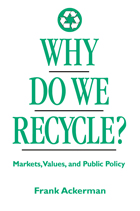 Why Do We Recycle?: Markets, Values, and Public Policy
Frank Ackerman
Island Press, 1997 The earnest warnings of an impending "solid waste crisis" that permeated the 1980s provided the impetus for the widespread adoption of municipal recycling programs. Since that time America has witnessed a remarkable rise in public participation in recycling activities, including curbside collection, drop-off centers, and commercial and office programs. Recently, however, a backlash against these programs has developed. A vocal group of "anti-recyclers" has appeared, arguing that recycling is not an economically efficient strategy for addressing waste management problems. In Why Do We Recycle? Frank Ackerman examines the arguments for and against recycling, focusing on the debate surrounding the use of economic mechanisms to determine the value of recycling. Based on previously unpublished research conducted by the Tellus Institute, a nonprofit environmental research group in Boston, Massachusetts, Ackerman presents an alternative view of the theory of market incentives, challenging the notion that setting appropriate prices and allowing unfettered competition will result in the most efficient level of recycling. Among the topics he considers are: - externality issues -- unit pricing for waste disposal, effluent taxes, virgin materials subsidies, advance disposal fees
- the landfill crisis and disposal facility siting
- container deposit ("bottle bill") legislation
- environmental issues that fall outside of market theory
- calculating costs and benefits of municipal recycling programs
- life-cycle analysis and packaging policy -- Germany's "Green Dot" packaging system and producer responsibility
- the impacts of production in extractive and manufacturing industries
- composting and organic waste management
- economics of conservation, and material use and long-term sustainability
Ackerman explains why purely economic approaches to recycling are incomplete and argues for a different kind of decisionmaking, one that addresses social issues, future as well as present resource needs, and non-economic values that cannot be translated into dollars and cents. Backed by empirical data and replete with specific examples, the book offers valuable guidance for municipal planners, environmental managers, and policymakers responsible for establishing and implementing recycling programs. It is also an accessible introduction to the subject for faculty, students, and concerned citizens interested in the social, economic, and ethical underpinnings of recycling efforts.
 Why Do We Still Have the Electoral College?
Alexander Keyssar
Harvard University Press, 2020 A New Statesman Book of the Year
“America’s greatest historian of democracy now offers an extraordinary history of the most bizarre aspect of our representative democracy—the electoral college…A brilliant contribution to a critical current debate.”
—Lawrence Lessig, author of They Don’t Represent Us
Every four years, millions of Americans wonder why they choose their presidents through an arcane institution that permits the loser of the popular vote to become president and narrows campaigns to swing states. Congress has tried on many occasions to alter or scuttle the Electoral College, and in this master class in American political history, a renowned Harvard professor explains its confounding persistence.
After tracing the tangled origins of the Electoral College back to the Constitutional Convention, Alexander Keyssar outlines the constant stream of efforts since then to abolish or reform it. Why have they all failed? The complexity of the design and partisan one-upmanship have a lot to do with it, as do the difficulty of passing constitutional amendments and the South’s long history of restrictive voting laws. By revealing the reasons for past failures and showing how close we’ve come to abolishing the Electoral College, Keyssar offers encouragement to those hoping for change.
“Conclusively demonstrates the absurdity of preserving an institution that has been so contentious throughout U.S. history and has not infrequently produced results that defied the popular will.”
—Michael Kazin, The Nation
“Rigorous and highly readable…shows how the electoral college has endured despite being reviled by statesmen from James Madison, Thomas Jefferson, and Andrew Jackson to Edward Kennedy, Bob Dole, and Gerald Ford.”
—Lawrence Douglas, Times Literary Supplement
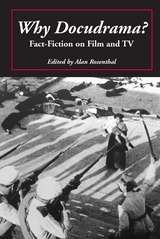 Why Docudrama?: Fact-Fiction on Film and TV
Edited by Alan Rosenthal
Southern Illinois University Press, 1999 When the 1990 English docudrama Who Bombed Birmingham? cast serious doubt on the guilt of six men convicted of bombing two British pubs in 1974, Prime Minister Margaret Thatcher declared that a "television program alters nothing." But, as Alan Rosenthal concludes, Thatcher was wrong. The film engendered a new inquiry that led to the release of the convicted men. Rosenthal notes that docudrama wields more influence than the average documentary and that "reality-based stories taken from topical journalism are the most popular drama genre on U.S. and British television today." This three-part collection of diverse and provocative essays addresses the dominant questions and controversies the genre poses. Defining and examining the rationale of docudrama, the nine essayists in the first part discuss the history and development of docudrama on TV and in film; they also consider the place of truth in docudrama, the main critiques of the form, and the audience's susceptibilities and expectations. In investigating the actual filmmaking process, the eight essays in the second part focus on how "docudrama as a 'commodity' is created in the United States and England." Part essay, part case study, and part interview, this section also explores how Hollywood and the commercial networks as well as producers and writers work and think. The final part presents an in-depth critique of a number of controversial docudramas that have helped form and shape public opinion, including Battleship Potemkin, Roots, Reds, JFK, Mississippi Burning, Schindler's List, and In the Name of the Father. In addition to Rosenthal, the contributors are John Corner, George F. Custen, David Edgar, Leslie Fishbein, George MacDonald Fraser, Todd Gitlin, Douglas Gomery, Richard Grenier, Sumiko Higashi, Tom W. Hoffer, Jerry Kuehl, Steve Lipkin, Yosefa Loshitsky, Ian McBride, Richard Alan Nelson, Conor Cruise O'Brien, Derek Paget, Robert A. Rosenstone, Betsy Sharkey, Irene Shubik, Jeff Silverman, D. J. Wenden, Sita Williams, and Leslie Woodhead.
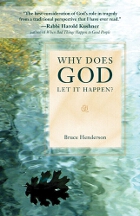 Why Does God Let It Happen?
BRUCE HENDERSON
Swedenborg Foundation Publishers, 2010 In the wake of life-changing events—whether as global in reach as the terrorist attacks on September 11 or as personal as the death of a child—the first question that springs to mind is “Why?” Why do good people suffer pain and loss? Why does God allow these things to happen? In this simple, straightforward book, Bruce Henderson tackles some of the most difficult questions that people of faith face in their lives. Drawing from the wisdom of visionary Emanuel Swedenborg, who wrestled with these same questions more than two hundred years ago, Henderson describes a universe in which God allows us free will and choice, subtly guiding the course of our lives with an insight no mortal can comprehend. Pain and suffering ultimately lead to good, and as we walk the path, we draw ever closer to heaven. In the end, the question is not why these things happen, but what good can come of them, and how we can use our gift of free will to create a better world for ourselves and others. In this, Henderson says, God is our partner and guiding hand, turning pain to hope and trust.
Why Dogs Stopped Flying
Kenneth Brewer
Utah State University Press, 2006 The solid rightness of image after image in Ken Brewer’s poetry was never better than in Why Dogs Stopped Flying. His familiar style is plain-spoken, his humor reliable and
self-ironic. Yet, in this collection perhaps more than his earlier work, the particularity of the poet’s insight into the physical world and the warmth of his affection for it combine
to create an unexpected transcendence. Beasts and bodies are transformed in his lines, and our dim, unremarkable lives on this shadowed earth become somehow more
luminous—small words to the moon, small suns opening in the dark.
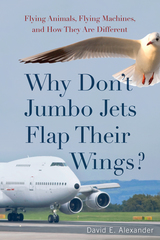 Why Don't Jumbo Jets Flap Their Wings?: Flying Animals, Flying Machines, and How They Are Different
David E. Alexander
Rutgers University Press, 2009 What do a bumble bee and a 747 jet have in common? It’s not a trick question. The fact is they have quite a lot in common. They both have wings. They both fly. And they’re both ideally suited to it. They just do it differently. Why Don’t Jumbo Jets Flap Their Wings? offers a fascinating explanation of how nature and human engineers each arrived at powered flight. What emerges is a highly readable account of two very different approaches to solving the same fundamental problems of moving through the air, including lift, thrust, turning, and landing. The book traces the slow and deliberate evolutionary process of animal flight—in birds, bats, and insects—over millions of years and compares it to the directed efforts of human beings to create the aircraft over the course of a single century. Among the many questions the book answers: - Why are wings necessary for flight?
- How do different wings fly differently?
- When did flight evolve in animals?
- What vision, knowledge, and technology was needed before humans could learn to fly?
- Why are animals and aircrafts perfectly suited to the kind of flying they do?
David E. Alexander first describes the basic properties of wings before launching into the diverse challenges of flight and the concepts of flight aerodynamics and control to present an integrated view that shows both why birds have historically had little influence on aeronautical engineering and exciting new areas of technology where engineers are successfully borrowing ideas from animals.
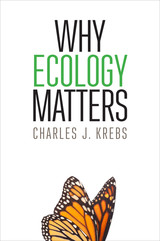 Why Ecology Matters
Charles J. Krebs
University of Chicago Press, 2016 Global temperatures and seawater levels rise; the world’s smallest porpoise species looms at the edge of extinction; and a tiny emerald beetle from Japan flourishes in North America—but why does it matter? Who cares? With this concise, accessible, and up-to-date book, Charles J. Krebs answers critics and enlightens students and environmental advocates alike, revealing not why phenomena like these deserve our attention, but why they demand it.
Highlighting key principles in ecology—from species extinction to the sun’s role in powering ecosystems—each chapter introduces a general question, illustrates that question with real-world examples, and links it to pressing ecological issues in which humans play a central role, such as the spread of invasive species, climate change, overfishing, and biodiversity conservation. While other introductions to ecology are rooted in complex theory, math, or practice and relegate discussions of human environmental impacts and their societal implications to sidebars and appendices, Why Ecology Matters interweaves these important discussions throughout. It is a book rooted in our contemporary world, delving into ecological issues that are perennial, timeless, but could not be more timely.
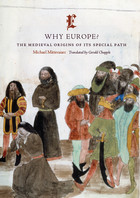 Why Europe?: The Medieval Origins of Its Special Path
Michael Mitterauer
University of Chicago Press, 2010 Why did capitalism and colonialism arise in Europe and not elsewhere? Why were parliamentarian and democratic forms of government founded there? What factors led to Europe’s unique position in shaping the world? Thoroughly researched and persuasively argued, Why Europe? tackles these classic questions with illuminating results.
Michael Mitterauer traces the roots of Europe’s singularity to the medieval era, specifically to developments in agriculture. While most historians have located the beginning of Europe’s special path in the rise of state power in the modern era, Mitterauer establishes its origins in rye and oats. These new crops played a decisive role in remaking the European family, he contends, spurring the rise of individualism and softening the constraints of patriarchy. Mitterauer reaches these conclusions by comparing Europe with other cultures, especially China and the Islamic world, while surveying the most important characteristics of European society as they took shape from the decline of the Roman empire to the invention of the printing press. Along the way, Why Europe? offers up a dazzling series of novel hypotheses to explain the unique evolution of European culture.
 Why Everyone Hates White Liberals (Including White Liberals): A History
Kevin M. Schultz
University of Chicago Press, 2025 A bracing, accessible history of white American liberals—and why it’s time to change the conversation about them.
If there’s one thing most Americans can agree on, it’s that everyone hates white liberals. Conservatives hate them for being culturally tolerant and threatening to usher in communism. Libertarians hate them for believing in the power of the state. Socialists hate them for serving as capitalism’s beard. Even liberals hate liberals—either because they can’t manage to overcome their own prejudices, or precisely because they’re so self-hating.
This is the starting point for Kevin M. Schultz’s lively new history of white liberals in the United States. He efficiently lays out the array of objections to liberals—ineffective, spineless, judgmental, authoritarian, and more—in a historical frame that shows how protean the concept has been throughout the past hundred years. It turns out, he declares, that how you define a “white liberal” is less a reflection of reality and more a Rorschach test revealing your own anxieties.
Sharply assessing how decades of attacks on liberals and liberalism have steadily hollowed out the center of American political life, Schultz also explains precisely what needs to be done to avoid digging ourselves even further into the hole of polarization. The ultimate goal, he argues, is to achieve political fragmentation that will fuel the rise of a true multiparty system, where ideology will matter more, not less.
With a tight command of postwar American history and a spirited voice, Why Everyone Hates White Liberals (Including White Liberals) is a must-read for anyone wishing to understand—and envision a way forward in—the complicated landscape of American politics.
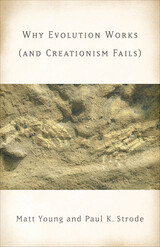 Why Evolution Works (and Creationism Fails)
Matt Young and Paul K. Strode
Rutgers University Press, 2009 Why Evolution Works (and Creationism Fails) is an impassioned argument in favor of science—primarily the theory of evolution—and against creationism. Why impassioned? Should not scientists be dispassionate in their work? “Perhaps,” write the authors, “but it is impossible to remain neutral when our most successful scientific theories are under attack, for religious and other reasons, by laypeople and even some scientists who willfully distort scientific findings and use them for their own purposes.”
Focusing on what other books omit, how science works and how pseudoscience works, Matt Young and Paul K. Strode demonstrate the futility of “scientific” creationism. They debunk the notion of intelligent design and other arguments that show evolution could not have produced life in its present form.
Concluding with a frank discussion of science and religion, Why Evolution Works (and Creationism Fails) argues that science by no means excludes religion, though it ought tocast doubt on certain religious claims that are contrary to known scientific fact.
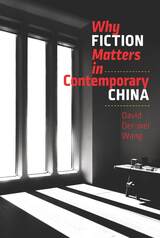 Why Fiction Matters in Contemporary China
David Der-wei Wang
Brandeis University Press, 2020 Contemporary discussions of China tend to focus on politics and economics, giving Chinese culture little if any attention. Why Fiction Matters in Contemporary China offers a corrective, revealing the crucial role that fiction plays in helping contemporary Chinese citizens understand themselves and their nation. Where history fails to address the consequences of man-made and natural atrocities, David Der-Wei Wang argues, fiction arises to bear witness to the immemorial and unforeseeable.
Beginning by examining President Xi Jinping’s call in 2013 to “tell the good China story,” Wang illuminates how contemporary Chinese cultural politics have taken a “fictional turn,” which can trace its genealogy to early modern times. He does so by addressing a series of discourses by critics within China, including Liang Qichao, Lu Xun, and Shen Congwen, as well as critics from the West such as Arendt, Benjamin, and Deleuze. Wang highlights the variety and vitality of fictional works from China as well as the larger Sinophone world, ranging from science fiction to political allegory, erotic escapade to utopia and dystopia. The result is an insightful account of contemporary China, one that affords countless new insights and avenues for understanding.
 Why Free Will Is Real
Christian List
Harvard University Press, 2019 A crystal-clear, scientifically rigorous argument for the existence of free will, challenging what many scientists and scientifically minded philosophers believe.
Philosophers have argued about the nature and the very existence of free will for centuries. Today, many scientists and scientifically minded commentators are skeptical that it exists, especially when it is understood to require the ability to choose between alternative possibilities. If the laws of physics govern everything that happens, they argue, then how can our choices be free? Believers in free will must be misled by habit, sentiment, or religious doctrine. Why Free Will Is Real defies scientific orthodoxy and presents a bold new defense of free will in the same naturalistic terms that are usually deployed against it.
Unlike those who defend free will by giving up the idea that it requires alternative possibilities to choose from, Christian List retains this idea as central, resisting the tendency to defend free will by watering it down. He concedes that free will and its prerequisites—intentional agency, alternative possibilities, and causal control over our actions—cannot be found among the fundamental physical features of the natural world. But, he argues, that’s not where we should be looking. Free will is a “higher-level” phenomenon found at the level of psychology. It is like other phenomena that emerge from physical processes but are autonomous from them and not best understood in fundamental physical terms—like an ecosystem or the economy. When we discover it in its proper context, acknowledging that free will is real is not just scientifically respectable; it is indispensable for explaining our world.
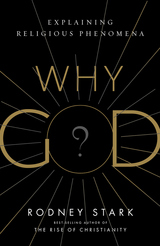 Why God?: Explaining Religious Phenomena
Rodney Stark
Templeton Press, 2017 Why is it that the majority of people, from all socio-economic, education, and ethnic backgrounds, ascribe to some sort of faith? What draws us to religion? What pushes us away? And what exactly is religion anyway?
Defining religion over the past century has, ironically, led to theories that exclude belief in God, proposing that all systems of thought concerning the meaning of life are religions. Of course, this makes it impossible to distinguish the village priest from the village atheist, or Communism from Catholicism. Worse yet, it makes all religious behavior irrational, presuming that, for example, people knowingly pray to an empty sky.
Renowned sociologist of religion Rodney Stark offers a comprehensive, decisive, God-centered theory of religion in his book, Why God: Explaining Religious Phenomena. While his intent is not to insist that God exists, Stark limits religions to systems of thought based on belief in supernatural beings—to Gods. With this God-focused theory, Stark explores the entire range of religious topics, including the rise of monotheism, the discovery of sin, causes of religious hostility and conflict, and the role of revelations.
Each chapter of Why God? builds a comprehensive framework, starting with the foundations of human motivations and ending with an explanation of why most people are religious. Stark ultimately settles what religion is, what it does, and why it is a universal feature of human societies.
Why God? is a much needed guide for anyone who wants a thorough understanding of religion and our relationship to it, as well as a firm refutation to those who think religion can exist without the divine.
 Why Government Succeeds and Why It Fails
Amihai Glazer and Lawrence S. Rothenberg
Harvard University Press, 2005 This book looks beyond politics to show how the ability of the U.S. government to implement policies is strongly affected by various economic constraints. These include the credibility of the policies, the ability of government to commit to them, the extent to which firms and consumers rationally anticipate their effects, whether the success of a policy further encourages firms and individuals to behave in intended ways, and whether the behavior of such actors can be sustained without continued government intervention.
The authors apply these concepts to four areas of policy: macroeconomic policies to promote employment and economic growth, redistributive policies to benefit the poor and the elderly, production policies to provide goods and services, and regulatory policies to guide the behavior of firms and individuals. In doing so they provide plausible explanations of many puzzling phenomena—for example, why government has been successful in reducing cigarette smoking, but has failed to get people to install and maintain emission-control devices in their cars.
This book recasts debates about public policy, avoiding conventional “pro-government” or “anti-government” positions; rather, it helps to predict when public policy will succeed.
|
|


